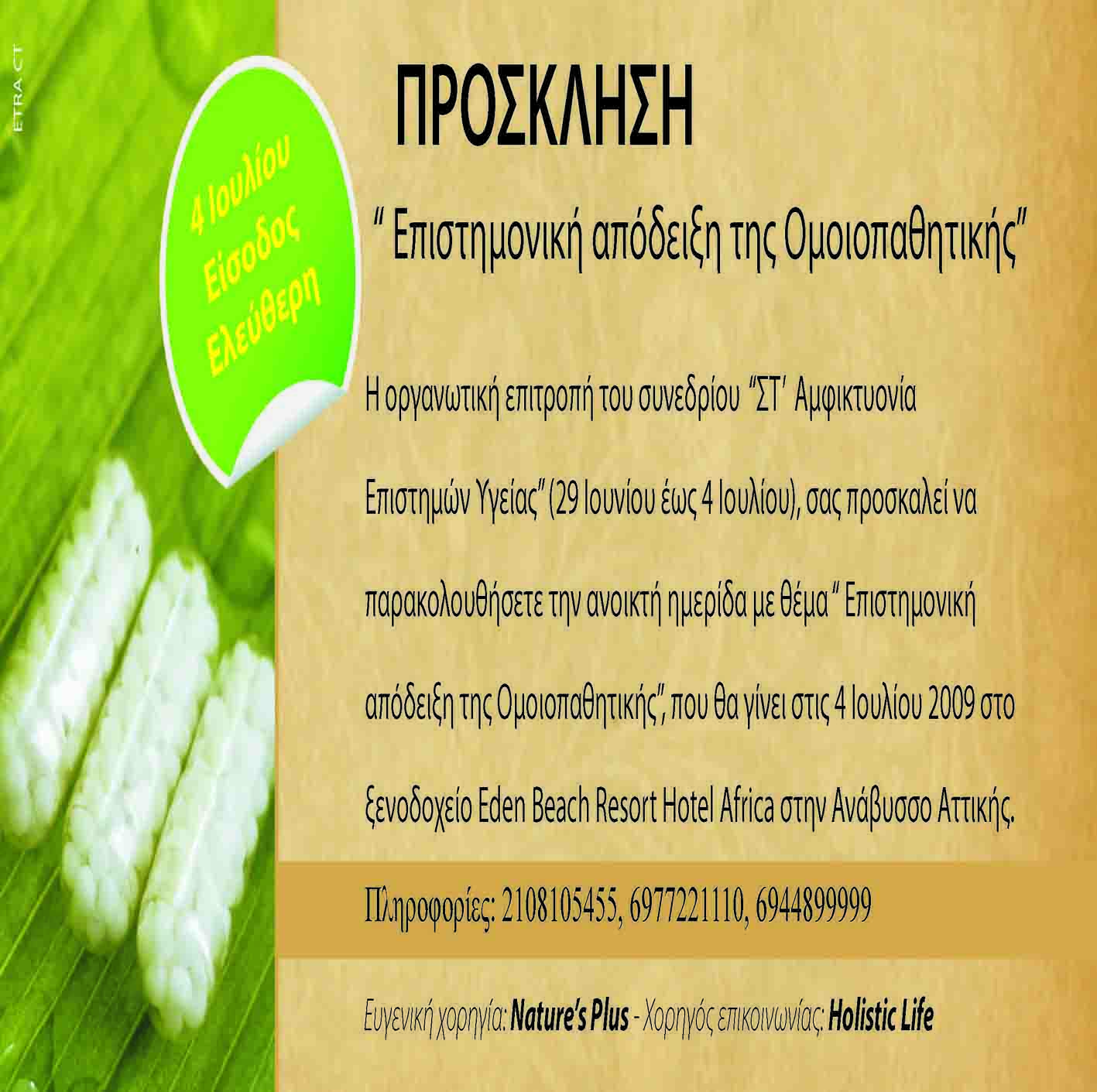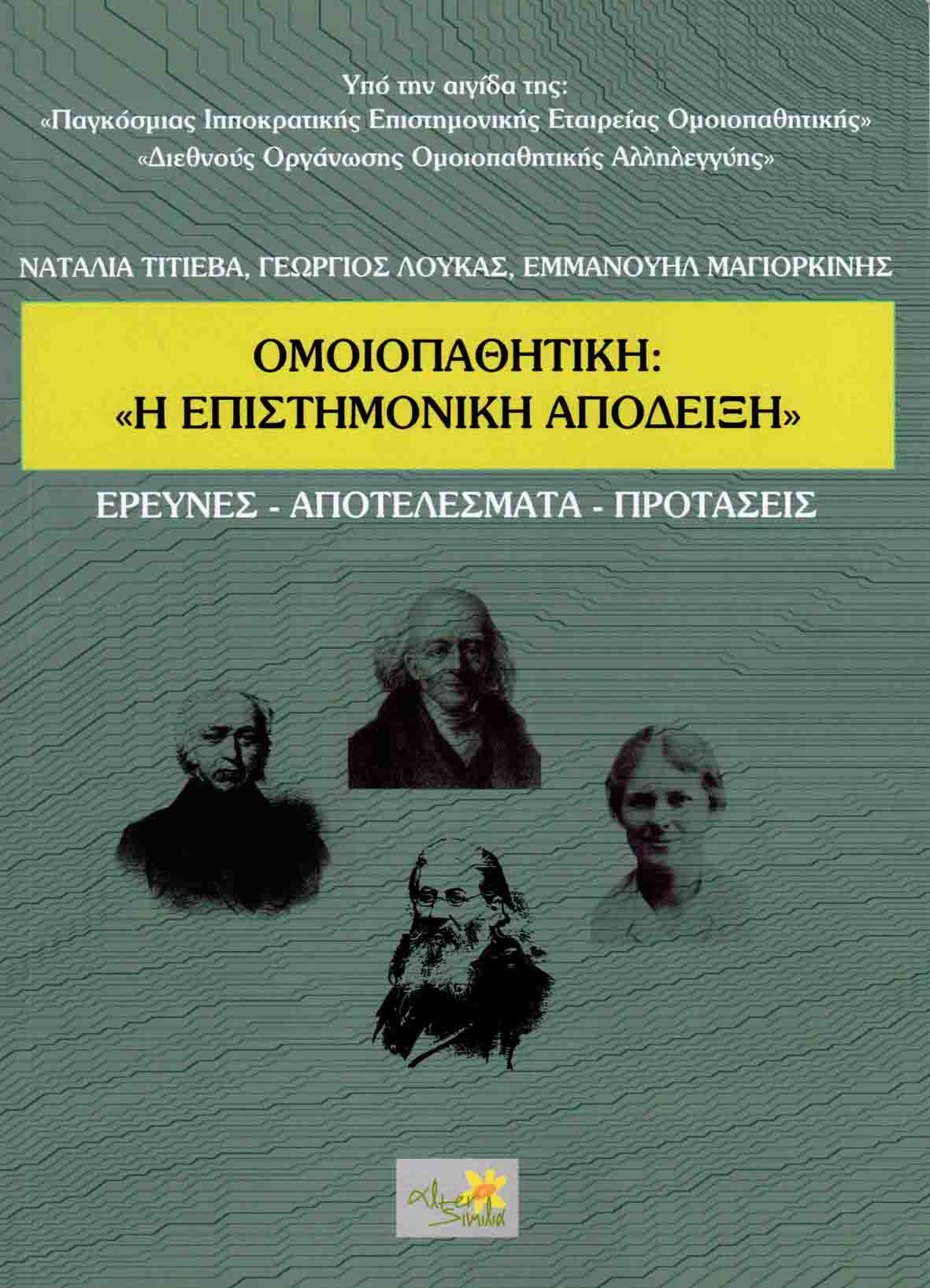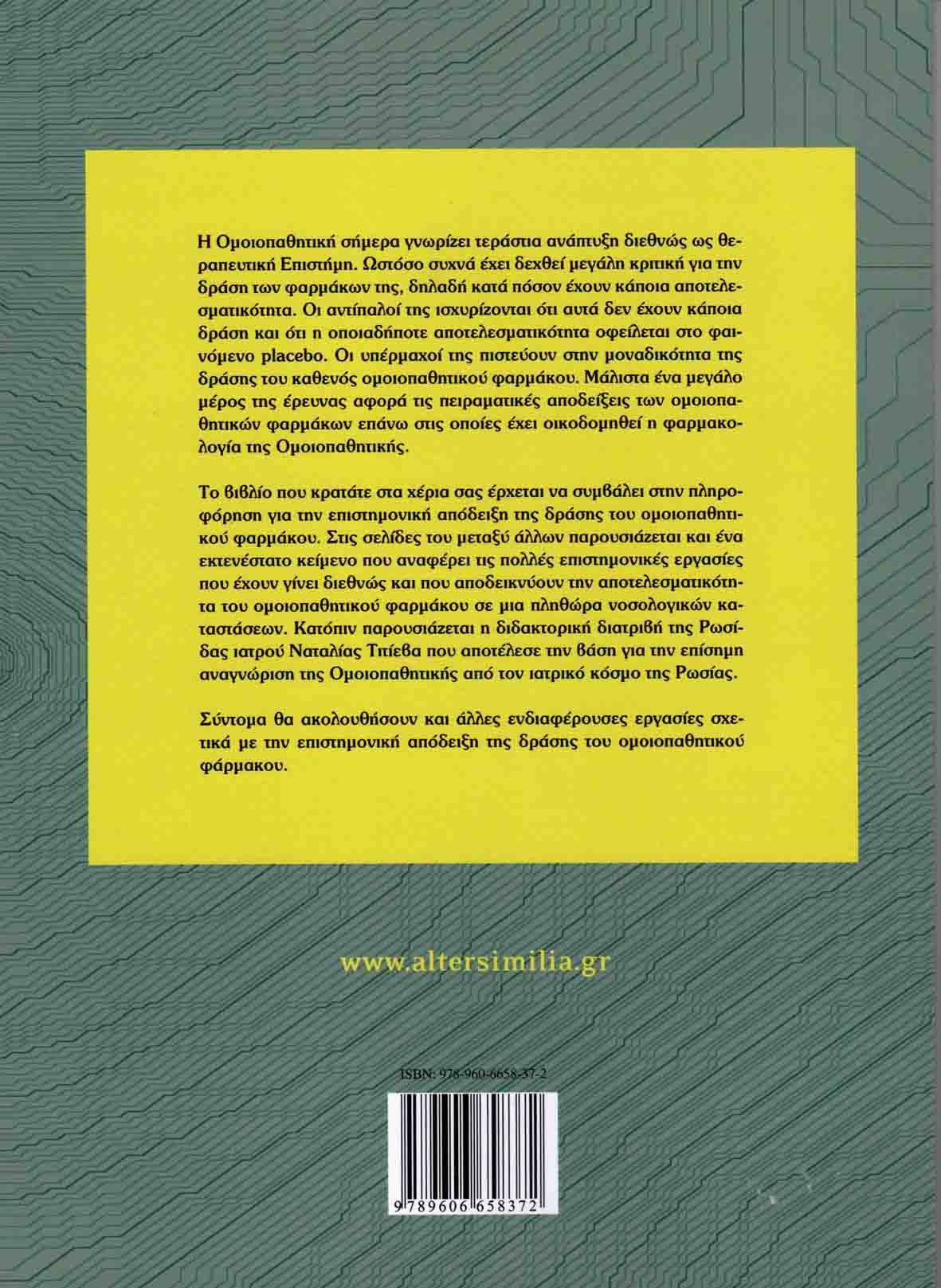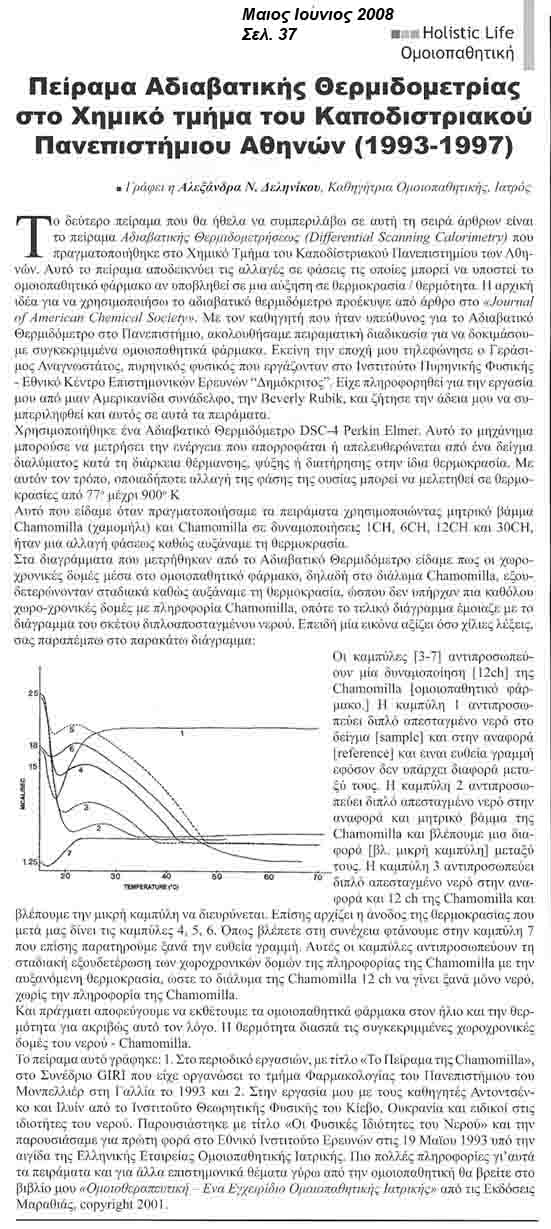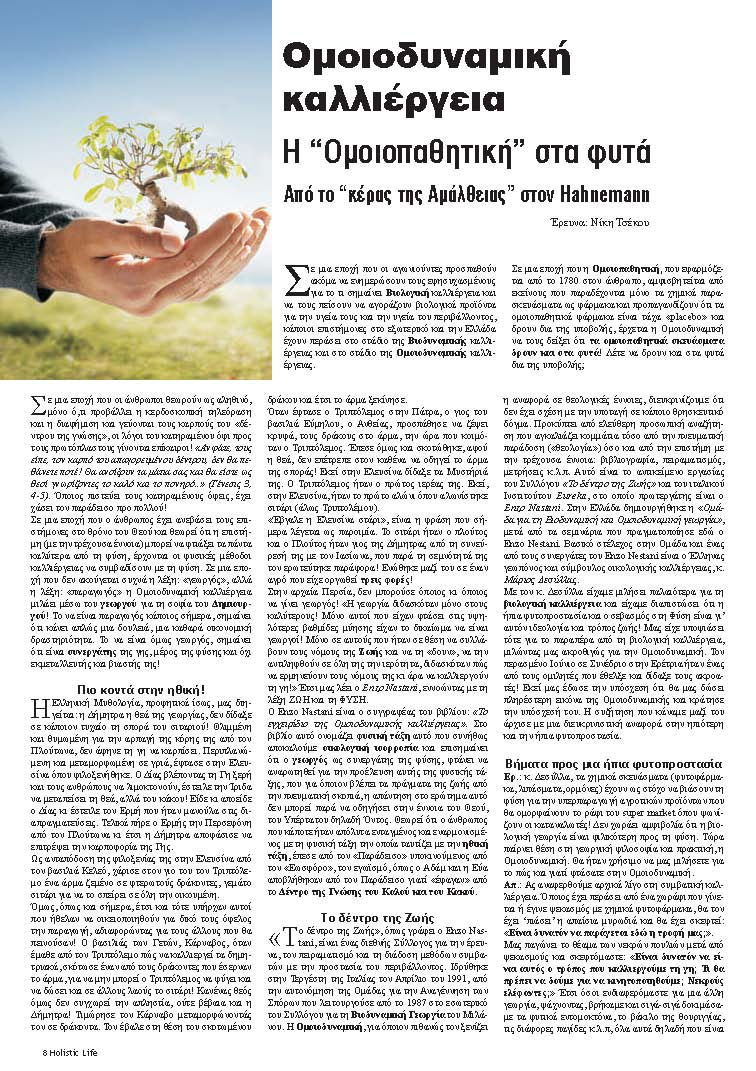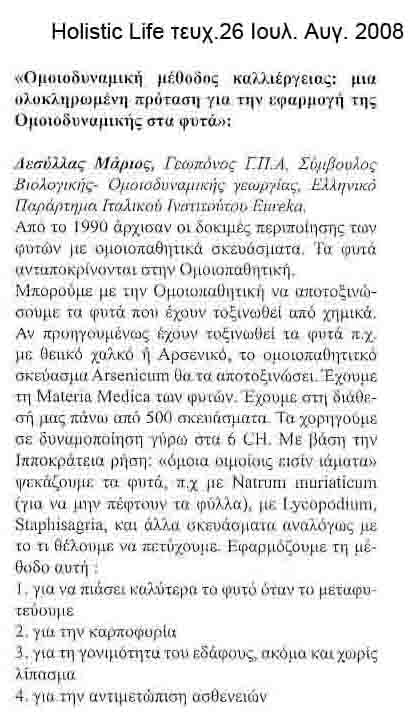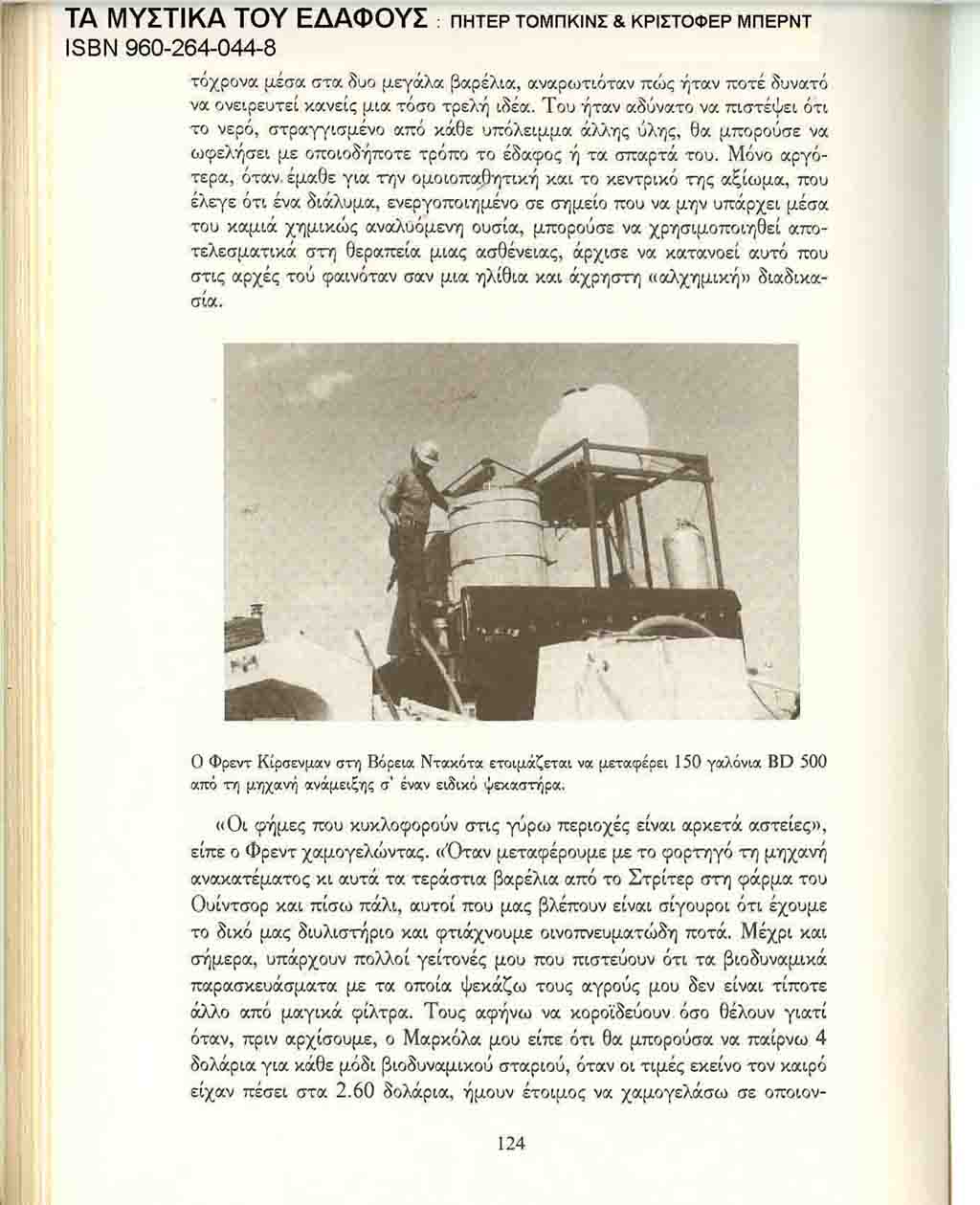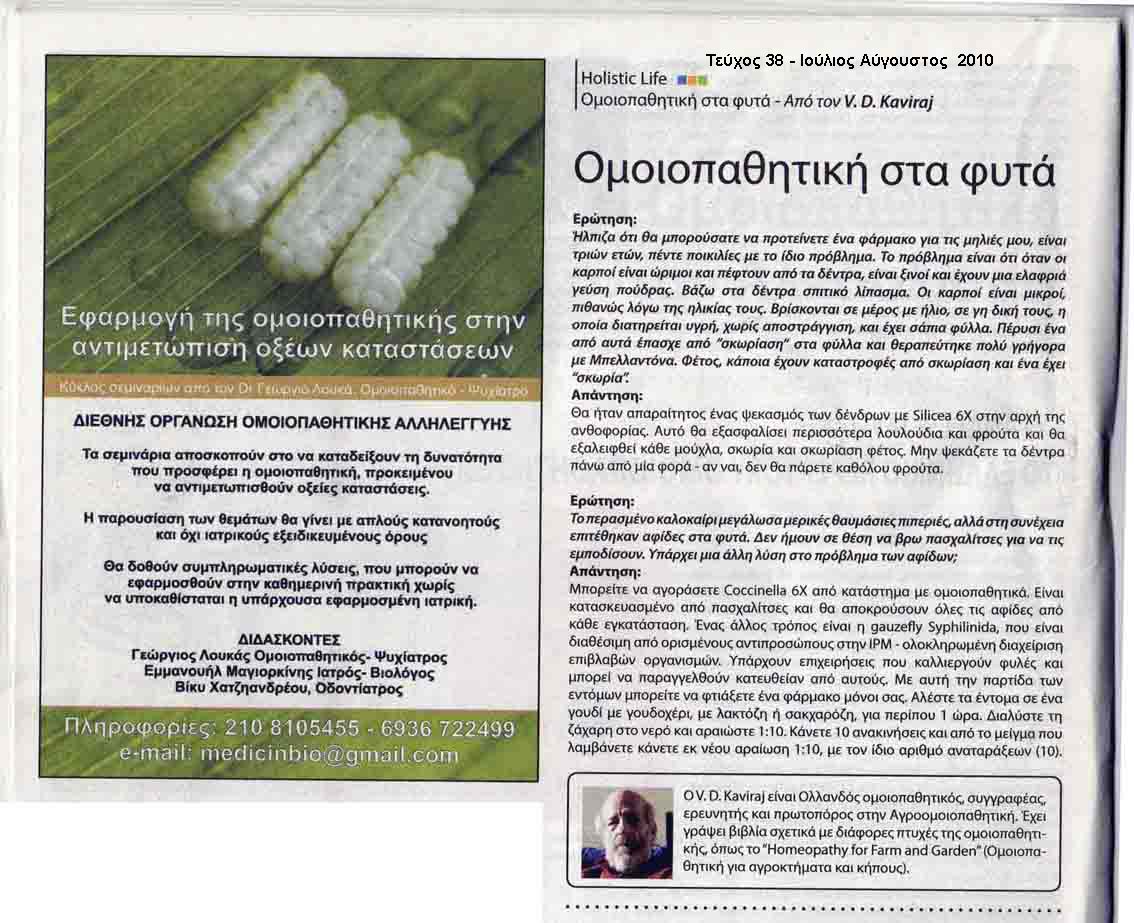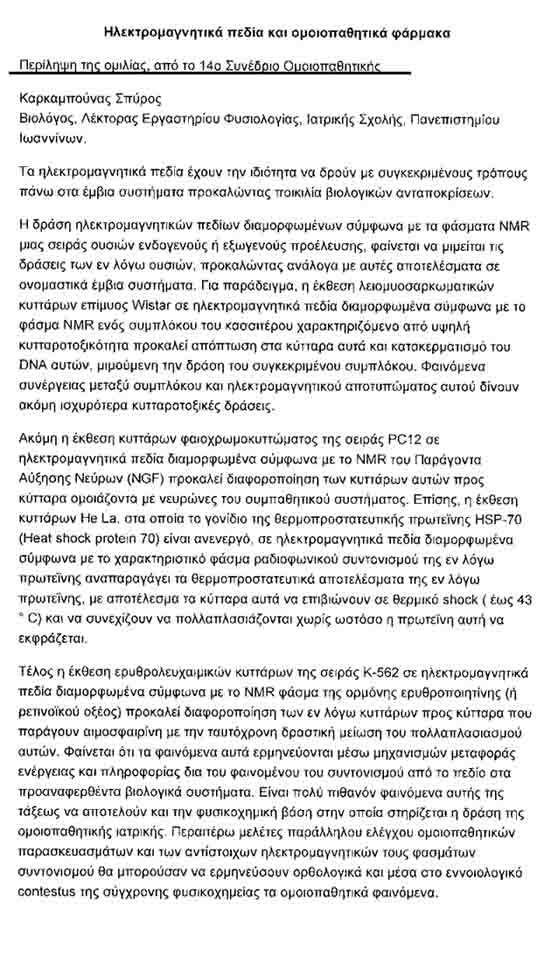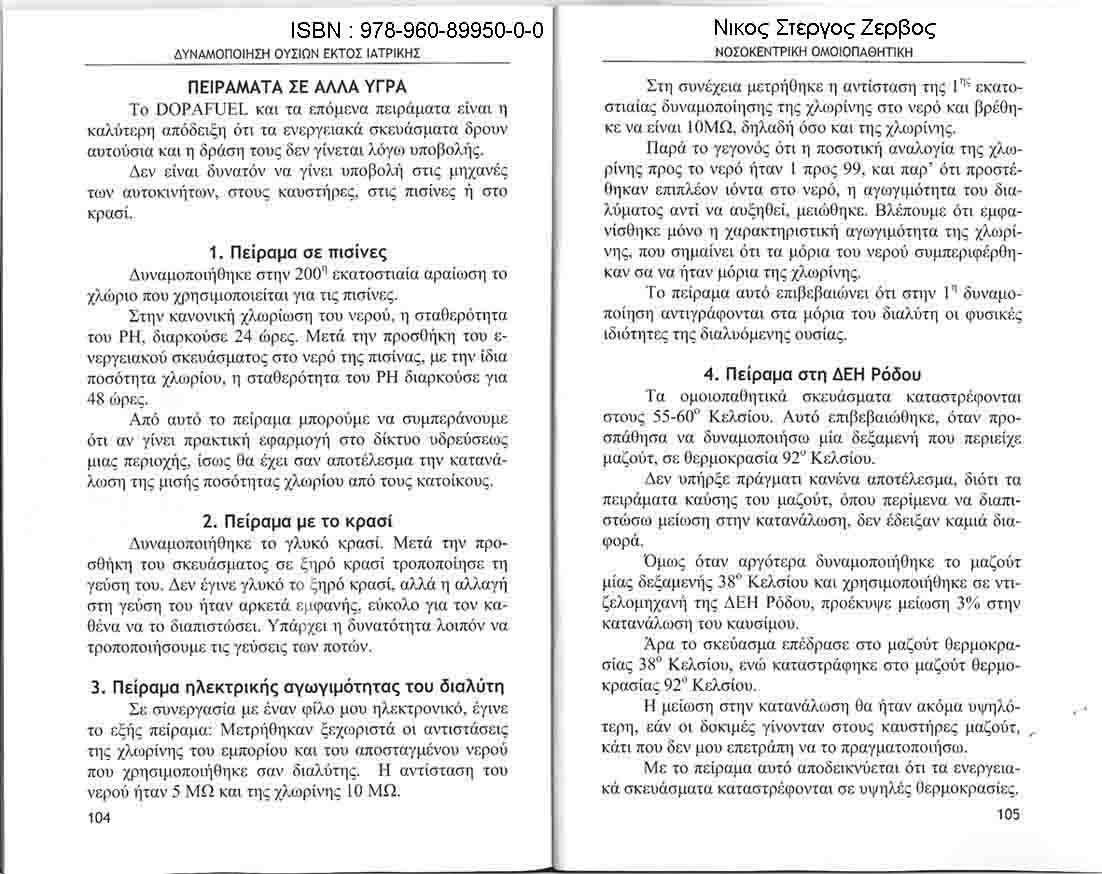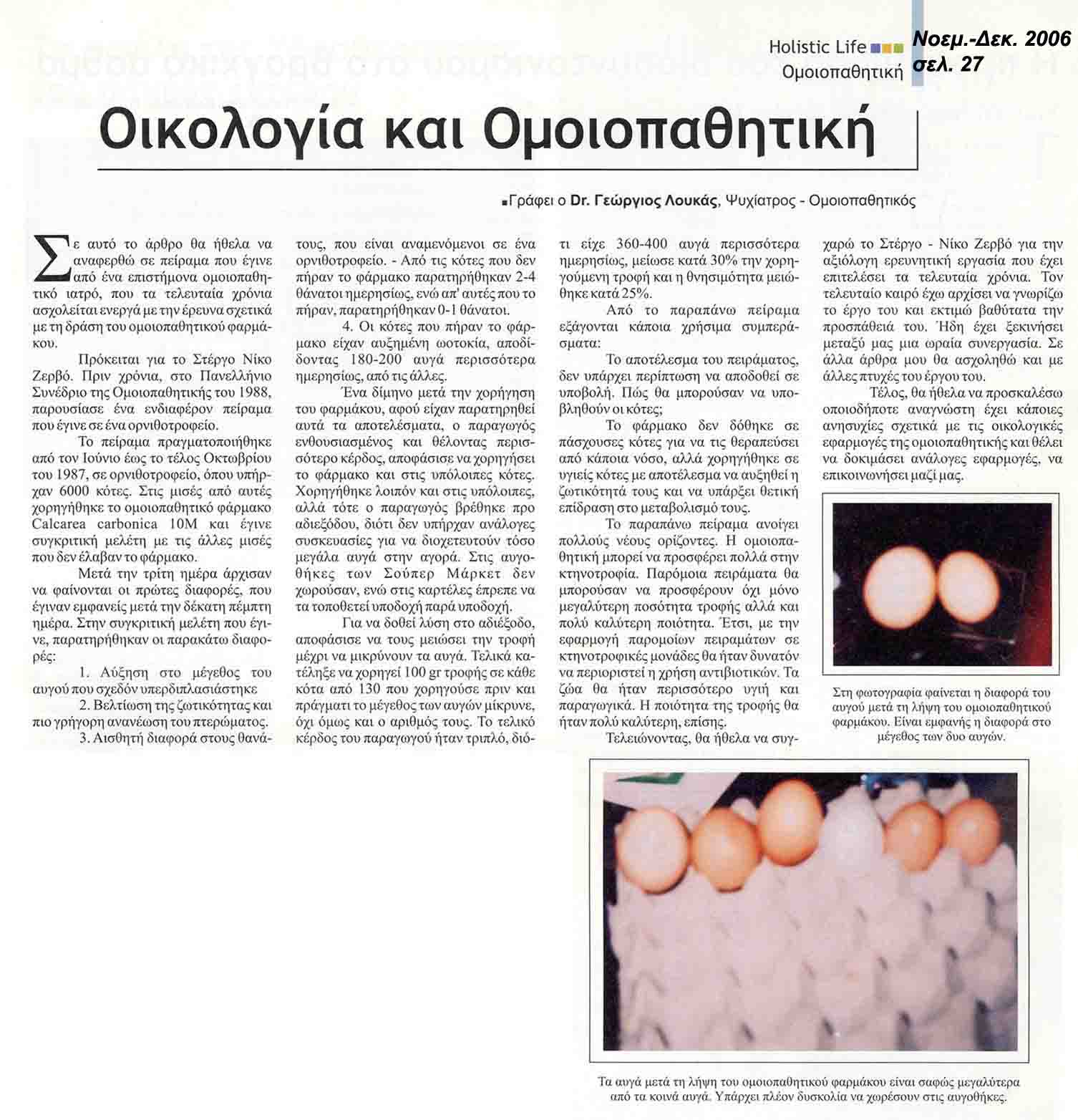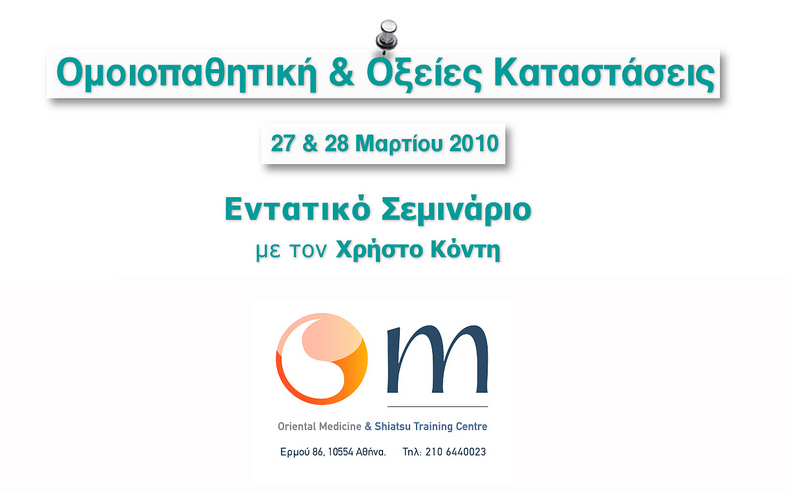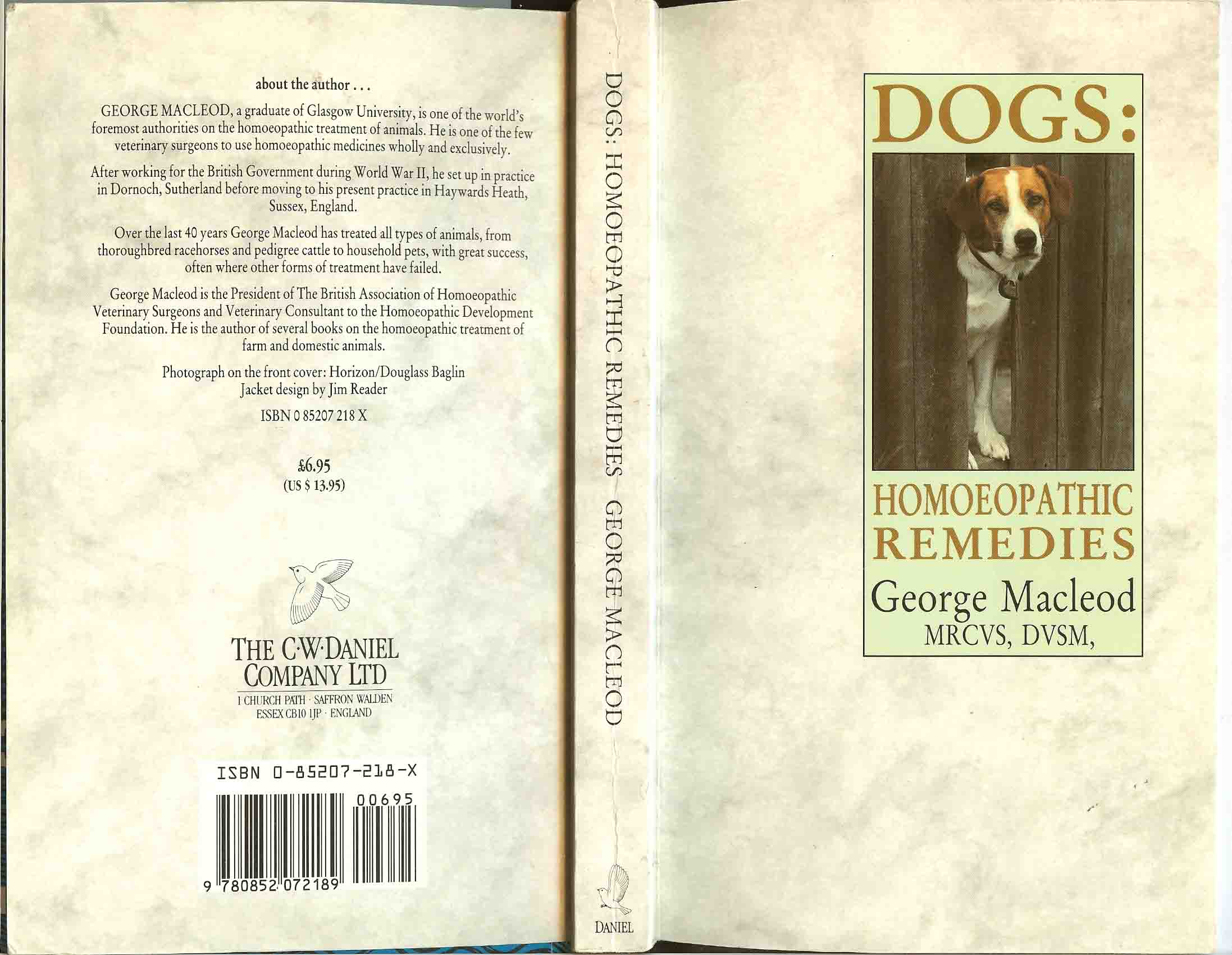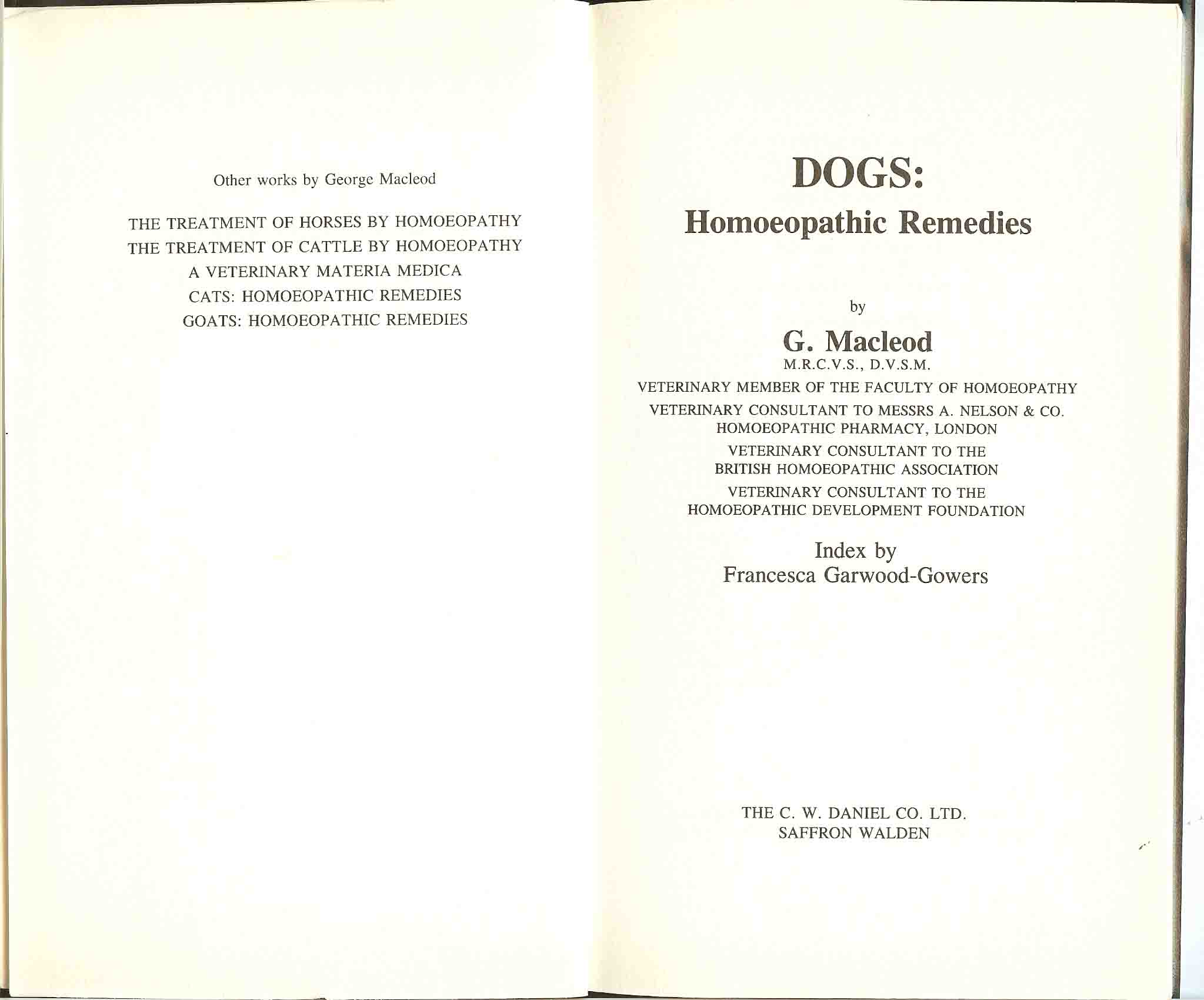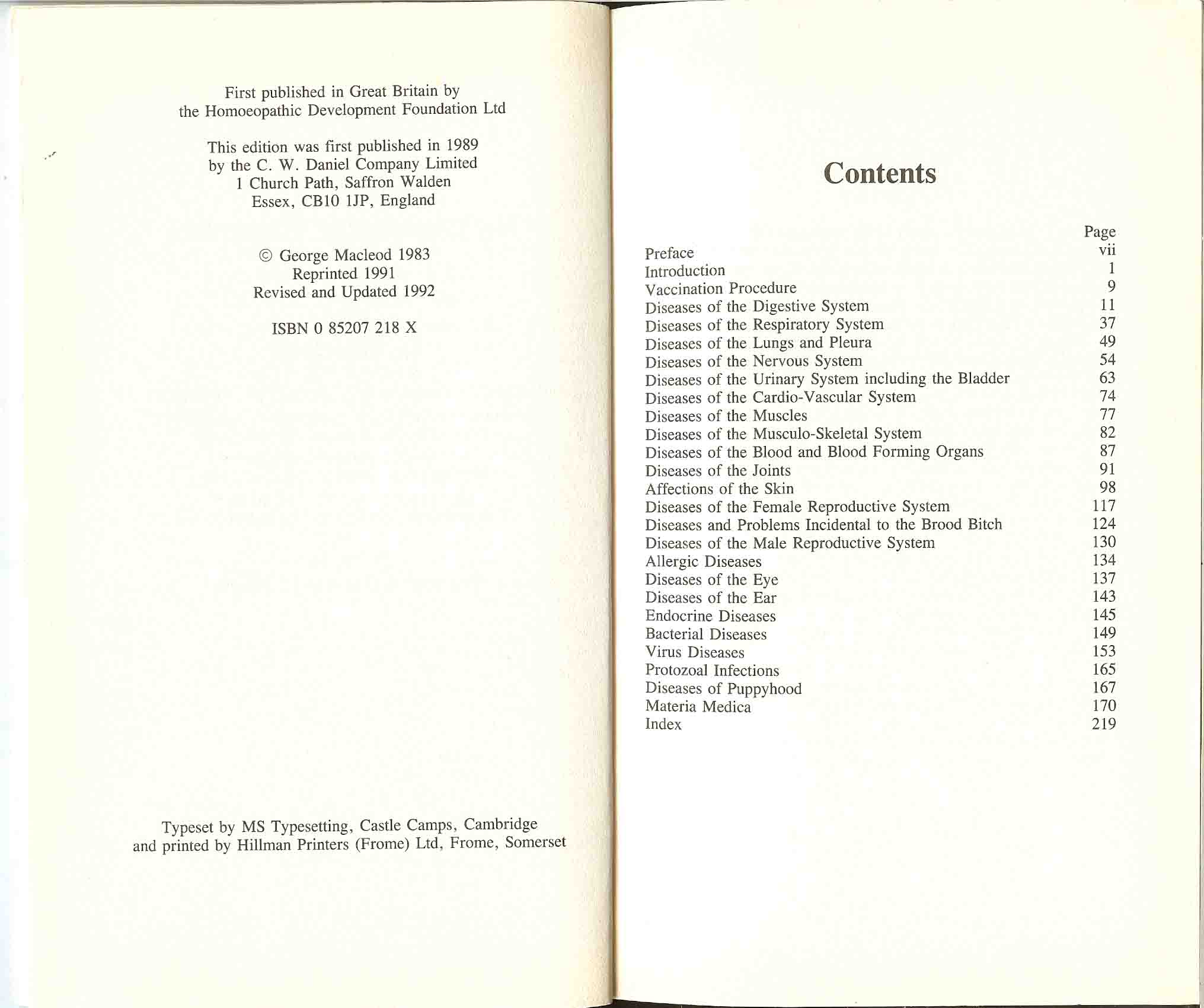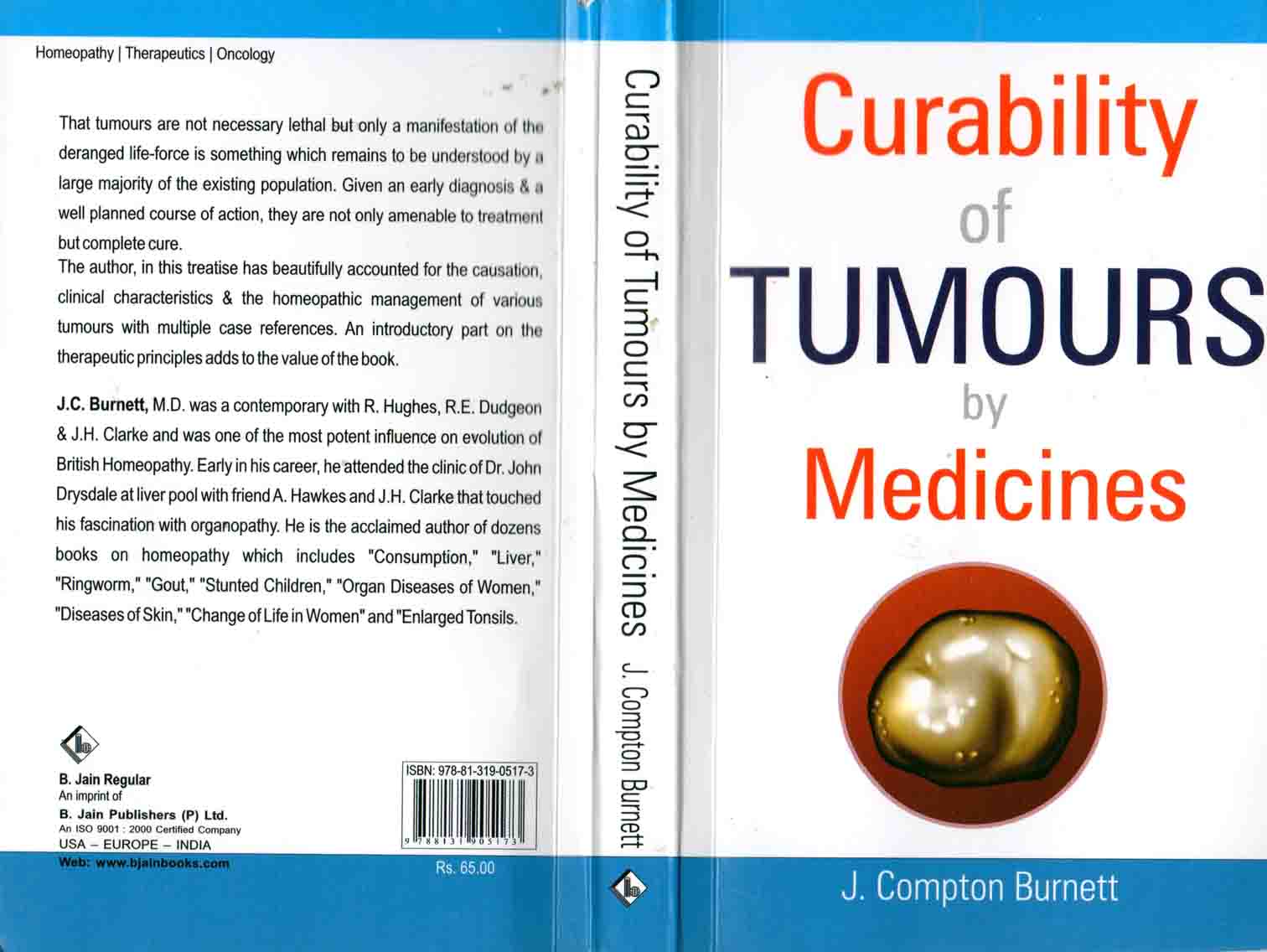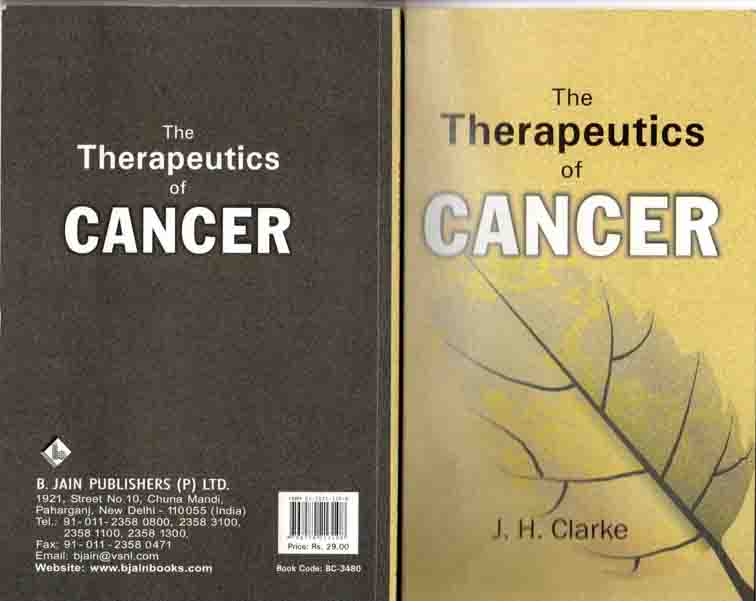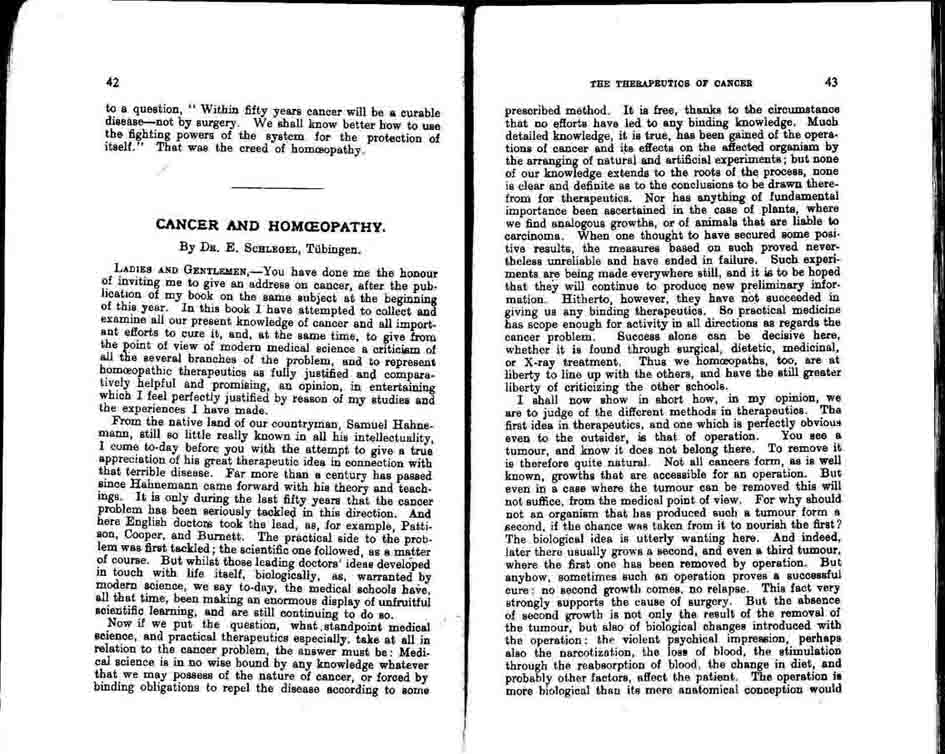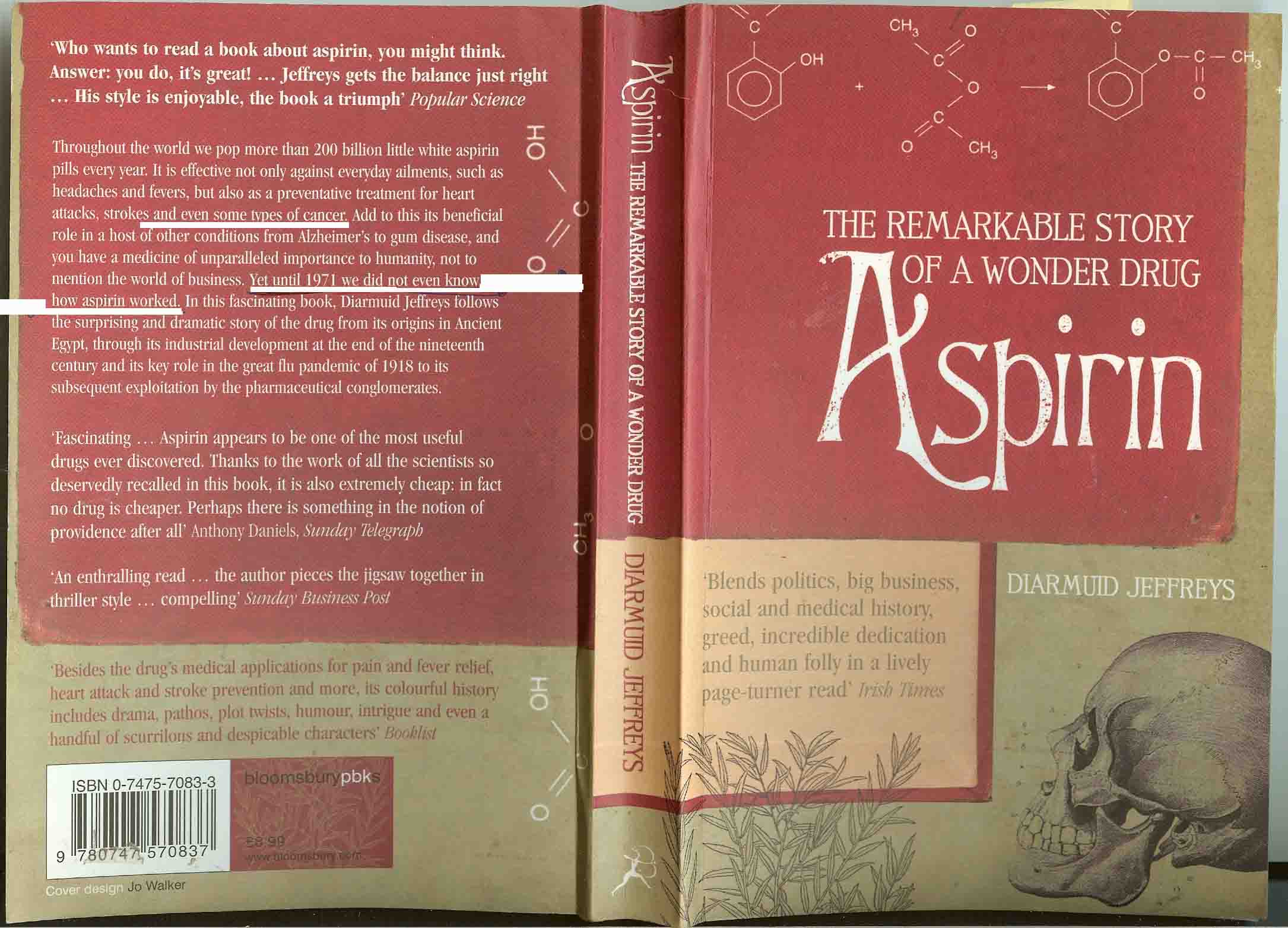Sukul NC, Ghosh S, Sukul A, Sinhababu SP.
Department of Zoology, Visva-Bharati University, Santiniketan, West Bengal,
India.
OBJECTIVE: The aim of this study was to determine whether potentized homeopathic
drugs and their diluent media differ from each other with respect to their
Fourier transform infrared (FTIR) spectra. DESIGN: FTIR spectra of Nux vomica
30C, Lycopodium 30C, Santonin 30C, Cina 30C, Cina 206C, Cina 1006C, and their
diluent media 90% ethanol and Ethanol 30C were obtained in the wave number range
of 2000-1000 cm1 at 20 degrees C. Potassium bromide powder soaked with the
potencies, pressed into pellets, and air dried were used to measure the spectra.
Because water structures in homeopathic potencies are thought to carry specific
information on drug molecules and because O-H bending vibrational band (v2)
exclusively belongs to water, the study was restricted to the bands in that wave
number region. Alcohol has no absorption in the O-H bending region. RESULTS: The
potencies were found to differ from each other and their diluent media in the
number of v2 bands, their wave number (cm1), shape, and half-width (cm1) of the
bands.
CONCLUSIONS: The number and other characteristics of the v2 band
represent the number of hydrogen-bonded water species and their hydrogen-bonding
strength, respectively. The potencies and their diluent media therefore differ
from each other in the number of hydrogen-bonded water species and their
hydrogen-bonding strength. The observation that KBr pellets soaked with a
potentized drug retains its specific spectral absorption properties simply
confirms that medicated sucrose globules, used in homeopathic dispensing, are
capable of retaining the therapeutic properties of the drug.
=============================================================================================================
Hydrohysteretic Phenomena of “Extremely Diluted Solutions” Induced by Mechanical
Treatments: A Calorimetric and Conductometric Study at 25 compfnC
http://www.ingentaconnect.com/content/klu/josl/2005/00000034/00000008/00006258
Authors: Elia, V.1; Marchese,
M.2; Montanino, M.2; Napoli, E.2; Niccoli, M.2; Nonatelli, L.2; Ramaglia, A.3
Source: Journal of Solution Chemistry, Volume 34, Number 8, August 2005 , pp.
947-960(14)
Abstract:
The purpose of this study was to obtain information about the influence of
successive dilutions and succussions (violent shaking) on the structure of
water. “Extremely diluted solutions” (EDS) are solutions obtained through the
iteration of two processes: 1:100 dilution and succussion. Those two processes
are repeated until extreme dilutions are reached, so that the chemical
composition of the end solution is identical to that of the solvent. We measured
the heats of mixing and the electrical conductivity of basic solutions of such
EDS, and compared these results with the analogous heats of mixing and
electrical conductivity of the untreated solvent. The measurements were carried
out as a function of the age of the samples. We found some relevant exothermic
excess heat of mixing, and higher electrical conductivity than those of the
untreated solvent, also in function of time. The measurements show a good linear
correlation between the two independent physico-chemical quantities, implying a
single cause for this behavior of the extremely diluted solutions. The slopes of
the linear correlation depend on the age of the EDS. Such a phenomenon could
result from a variation of the shape of molecular aggregates that characterize
the two different supramolecular structures of the water of different ages. This
behavior could provide important support for understanding the nature of the
phenomena described herein. A really intriguing phenomenon is the evolution of
some physico-chemical properties with time. This hints at a “trigger” effect on
the formation of molecular aggregates that result from the succussion procedure.
We show that successive dilutions
and succussions can permanently alter the physico-chemical properties of the
aqueous solvent, the extent of which depends on the age of the samples.
=============================================================================================================
Elia V,
Niccoli M (1999).
Thermodynamics of extremely diluted aqueous solutions. Annals of the New
York Academy of Sciences, 879:241–24879.
-------------------------------------------------------------------------------------------------------------------------------------
New Physico-Chemical Properties of Extremely
Diluted Aqueous Solutions
Journal Journal of Thermal Analysis and Calorimetry
Issue Volume 75, Number 3 / March, 2004 Pages 815-836
V. Elia1 and M. Niccoli1
(1) Department of Chemistry, University 'Federico II' of Naples, Complesso
Universitario di Monte S. Angelo, via Cintia, 80126 Naples, Italy
Abstract The extremely diluted solutions are anomalous solutions obtained
through the iteration of two processes: a dilution 1:100 in mass and a
succussion. The iteration is repeated until extreme dilutions are reached (less
than 1·10-5mol kg-1) to the point that we may call the resulting solution an
extremely diluted solution, namely the composition of the solution is identical
to that of the solvent used (e.g. twice distilled water). We conducted
thermodynamic and transport measurements of the solutions and of the interaction
of those solutions with acids or bases. The purpose of this study is to obtain
information about the influence of successive dilutions and succussions on the
water structure of the solutions under study. We measured the heats of mixing of
acid or basic solutions with such extremely diluted solutions, their electrical
conductivity and pH, comparing with the analogous heats of mixing, electrical
conductivity and pH of the solvent. We found some relevant exothermic excess
heats of mixing, higher electrical conductivity and pH than those of the
untreated solvent. The measurements show a good correlation between independent
physico-chemical parameters. Care was taken to take into account the effect of
chemical impurities deriving from the glass containers. Here we thus show that
successive dilutions and succussions can permanently alter the physico-chemical
properties of the water solvent. The nature of the phenomena here described
still remains unexplained, nevertheless some significant experimental results
were obtained.
----------------------------------------------------------------------------------------------------------------------------------------
Elia V,
Napoli E, Niccoli M, Nonatelli L, Ramaglia A, Ventimiglia E (2004).
New physico-chemical properties of extremely diluted aqueous solutions: A
calorimetric and conductivity study at 25°C.
Journal Journal of Thermal Analysis and
Calorimetry
Issue Volume 78, Number 1 / October, 2004
Pages 331-342
(1) Department of Chemistry, University 'Federico II' of Naples, Complesso,
Universitario di Monte S. Angelo via Cintia, 80126, Naples, Italy
Abstract The 'extremely diluted solutions', anomalous solutions prepared through
the iteration of a process of dilution and succussion, have been studied with
the aim of obtaining information about the influence of the preparation method
on the water structure of the solutions. We measured the heats of mixing of
basic solutions with such 'extremely diluted solutions', and their electrical
conductivity, comparing with the analogous heats of mixing, electrical
conductivity of the solvent. We found some relevant exothermic excess heats of
mixing, and higher conductivity than those of the untreated solvent. The heats
of mixing and electrical conductivity show a good correlation, underlining a
single cause for the behaviour of the extremely diluted solutions.
-----------------------------------------------------------------------------------------------------------------
‘Extremely diluted solutions’ as multi-variable systems
:
A study of calorimetric and conductometric behaviour as a function of the
parameter time
Journal
Journal of Thermal Analysis and Calorimetry
Issue Volume 84, Number 2 / May, 2006
Pages 317-323
Elia V. 1 Elia L. 2 , Cacace P. 1 , Napoli E. 1 , Niccoli M. 1 and Savarese
F. 1
(1) Department of Chemistry, University ‘Federico II’ of Naples, Complesso
Universitario di Monte S. Angelo, Naples, Italy, 80126, via Cintia
(2) Department of Physics, University ‘Federico II’ of Naples, Naples, Italy,
80126, via Coroglio 156
Abstract A large number of thermodynamic and transport measurements were
conducted on ‘extremely diluted solutions’ (EDS). The physico-chemical results
presented here allow us to hypothesize that the process of iterated dilutions
and succussions is capable of modifying in a permanent way the features of
water. A really intriguing phenomenon was the evolution of two physico-chemical
properties with time. The calorimetric and conductometric measures were carried
out as a function of the age of the samples. We found a good linear correlation
between these two independent parameters, also as a function of time. A careful
study of the phenomenon puts in evidence that these solutions are characterised
by multiple independent variables. The EDS behave as complex systems, influenced
by peculiar aspects of the preparation technique and also by the storage
conditions. The EDS are far-from-equilibrium systems, capable of auto-organising
themselves as a consequence of little perturbations.
---------------------------------------------------------------------------------------------------------------------
Hydrohysteretic Phenomena of “Extremely Diluted
Solutions” Induced by Mechanical Treatments: A Calorimetric and Conductometric
Study at 25 ∘ C
Journal Journal of Solution Chemistry
Issue Volume 34, Number 8 / August, 2005
Pages 947-960
Subject Collection Chemistry and Materials Science
V. Elia1 M. Marchese1, M. Montanino1, E. Napoli1, M.
Niccoli1, L. Nonatelli1 and A. Ramaglia2
(1) Department of Chemistry, University “Federico II” of Naples, Complesso
Universitario di Monte S. Angelo, via Cintia 80126, Naples, Italy
(2) Department of Physics, University “Federico II” of Naples, Complesso
Universitario di Monte S. Angelo, via Cintia 80126, Naples, Italy
Abstract The purpose of this study was to obtain information about the influence
of successive dilutions and succussions (violent shaking) on the structure of
water. “Extremely diluted solutions” (EDS) are solutions obtained through the
iteration of two processes: 1:100 dilution and succussion. Those two processes
are repeated until extreme dilutions are reached, so that the chemical
composition of the end solution is identical to that of the solvent. We measured
the heats of mixing and the electrical conductivity of basic solutions of such
EDS, and compared these results with the analogous heats of mixing and
electrical conductivity of the untreated solvent. The measurements were carried
out as a function of the age of the samples. We found some relevant exothermic
excess heat of mixing, and higher electrical conductivity than those of the
untreated solvent, also in function of time. The measurements show a good linear
correlation between the two independent physico-chemical quantities, implying a
single cause for this behavior of the extremely diluted solutions. The slopes of
the linear correlation depend on the age of the EDS. Such a phenomenon could
result from a variation of the shape of molecular aggregates that characterize
the two different supramolecular structures of the water of different ages. This
behavior could provide important support for understanding the nature of the
phenomena described herein. A really intriguing phenomenon is the evolution of
some physico-chemical properties with time. This hints at a “trigger” effect on
the formation of molecular aggregates that result from the succussion procedure.
We show that successive dilutions and succussions can permanently alter the
physico-chemical properties of the aqueous solvent, the extent of which depends
on the age of the samples.
------------------------------------------------------------------------------------------------------------------------------
Roy R, Tiller
WA, Bell IR, Hoover MR (2005).
The structure of liquid water; novel insights from materials research; potential
relevance to homeopathy. Materials Research Innovations, 9-4:577–608
-----------------------------------------------------------------------------------------------------------------------------------------
Rey L (2003).
Thermoluminescence of ultra-high dilutions of lithium chloride and sodium
chloride. Physica (A), 323:67–74
Abstract
Ultra-high dilutions of lithium chloride and sodium chloride (10−30 gcm−3) have
been irradiated by X- and γ-rays at 77 K, then progressively rewarmed to room
temperature. During that phase, their thermoluminescence has been studied and it
was found that, despite their dilution beyond the Avogadro number, the emitted
light was specific of the original salts dissolved initially.
-------------------------------------------------------------------------------------------------------------------------------------------
Thermoluminescence in ultra-high dilution research.
J Altern Complement Med. 2006
Jun;12(5):437-43.
van Wijk R, Bosman S, van Wijk EP.
International Institute of Biophysics, Neuss, Germany.
OBJECTIVE: Thermoluminescence of homeopathically prepared ultra-high dilutions
of lithium chloride in deuterium oxide (D2O) (10 (-30) g cm (-3); C15 LiCl in
D2O) and similarly prepared D2O (C15 D2O) was compared in three experiments
varying (1) time between preparation of substance and time of experimentation,
and (2) time between irradiation and thermoluminescence recording. Data were
also compared with a normal solution 0.1 M LiCl in D2O and with pure D2O.
METHODS: To record thermoluminescence, the solutions were frozen in liquid
nitrogen (77 K, -196 degrees C), irradiated with 1 kGy, and after a succession
of definite storage periods, were progressively rewarmed to 238 K (-35 degrees
C). RESULTS: Thermoluminescence patterns of C15 LiCl in D2O, C15 D2O, and D2O
were similar. The average thermoluminescence intensity of C15 LiCl in D2O tended
to be less than C15 D2O when tests were performed shortly after preparation of
the substances and with short storage time between irradiation and recording of
thermoluminescence. Thermoluminescence of D2O was significantly lower than from
C15 D2O, particularly when the time between irradiation and recording was
increased. CONCLUSION: The nature of the phenomena here described still remains
unexplained. Nevertheless, data suggest that thermoluminescence might be
developed into a promising tool to study homeopathically prepared ultra- high
dilutions.
=======================================================================================================
http://homeopathytorrents.blogspot.com/2009/08/vastly-incomplete-list-of-scientific.html
Saturday, August
15, 2009
A Vastly
Incomplete List of Scientific Research Behind Homeopathy
Courtesy :
http://drprabhattandon.wordpress.com/2008/08/11/is-homeopathy-trusted-science-or-a-placebo/
Courtesy :
John Benneth &
Homeopathy 4 Everyone – The Hpathy Ezine
- 1902 P.Jousset investigated the
effects of silver nitrate up to 25c on mycelium. He found significant
results in their weights, finding that the silver nitrate stunted growth.
(reported by Gabriel Bertrand) “The Extraordinary Sensitiveness of
Aspergillus Niger to Manganese.” Comptes Rendus Academie des Science;
154, 616, 1912
- 1906 Boericke and Tafel made an
unusual observation of the emanations from a high dilute of radium bromide
(30c), to photograph a picture of the outline of a key. (Tafel’s
Jottings, 1906.)
- 1928 JUNKER, Hermann The Effect of
Extreme DIlutions on Microorganisms Phluger’s Archiv fur die Gesamte
Physiologie, 219, pp 647-672, 1928
- 1923 Lilli Kolisko, Physical and
Physiological Demonastration of the Effect of the Smallest Entities.
Der Kommende Tag, A-G Verlag, Stuttgart, 1923 pp. 1-10 .
- 1923 N.P. Krawkow- Demonstrated 15c
histamine increased the blood flow in isolated rabbit ears 25% and using 12c
microdoses of adrenaline, strychnine, histamine and quinine was able to
affect the change of pigmentation in the isolated skins of frogs. Controls
were used. “Beyond the Boundary of Sensibility of Living Protoplasm”
Zeitschrift fur die Gesamte Experimntalle Medizin, 34 pp.279-306
- 1925 G. Stearns & M. Stark reported
the action of microdilutes on fruit fly tumors. In this fascinating study we
see that microdilutes actually altered the genetics of their subjects. A
genetically determined tendency to tumor formation ceased to exist after the
administration of a microdilution of the tumor itself (isopathy). Controls
were used. Other microdilutes were used to no effect. “Experiments with
Homeopathic Potentized Substances Given to Dropsophilia Melanogaster with
Hereditary Tumors”, The Homeopathic Recorder, 40.
- 1925 G. Stearns tested
microdilutions of salt on guinea pigs and demonstrated adverse affects from
30c to 1000c sodium chloride. He noted loss of appetite, aversion for bread,
loss of weight, their young poorly nourished and scrawny, less active,
indifferent, hair less glossy, rough, untidy, eyes watery, lack luster. And
homeopaths brag that their “remedies” (which are actually legal drugs) can
do no harm! There were 16 female control animals, and they all became
pregnant, whereas only 31% of the 48 female experimental animals became
pregnant. At the end of five months over half, 55% of the experimental
animals were dead compared to only 35% of the control animals “Experimental
Data on One of the Fundamental Claims in Homeopathy”, The Journal of the
American Institute of Homeopathy, 18.
- 1927 Karl Konig used microdilutes
to experiment on frogs and fungi. He discovered that by using dilutions of
of lead and silver nitrate ranging from 1 to 15c he could cause a premature
metamorphosis in Rana fusca (common frog tadpoles) or kill them or the
fungus in the water. Once again here we see that homeopathic drugs can have
negative organic affects. Controls were used and the sinusoidal curve that
we see in many experiments of diverse measures is first noted here. “On the
Effect of Extremely Diluted (”Homeopathic”) Metal Salt Solutions on the
Development and Growth of Tadpoles. Zeitschrift fur die Gesamte
Experimentalle Medizin, 34, pp. 279-306
- 1929 Vladimir Vondracek repeated
Konig’s work, and instead of lead and silver nitrate used gold chloride and
a different species of frog. At 12c he also reported a significant increase
in the mortality of tadpoles, and also obtained a repetition of the
sinusoidal curve. “The Mortality of Tadpoles in Ultra Solutions” Zeitschrift
fur die Gesamte Experimentelle Medizin. 66 pp. 533-538
- 1930 Persson, WM enzymes, The
Principles of Catalysis in Biochemistry and Homeopathy, J Am. Inst.
Hom. 23, pp 1055-1089
- 1932 George Russell Henshaw
discovered a method for influencing serum flocculation in rabbits. Using
Bryonia alba and Baptista tinctoria he showed a reaction in some of his
subjects ”A New Method of Determining the Indicated Remedy by a Flocculation
Test of the Serum The Journal of the American Institute of Homeopathy, 25
- 1932 Joseph Roy The Experimental
Justification of the Homeopathic Dilution, Le Bulletin Medical, 46, pp.
528-531, 1932
- 1936 Boyd, Research on Low
Potencies of Homeopathy, London, Heinemann
- 1936 Boyd, Research on Low
Potencies of Homeopathy,London, Heinemann
- 1938 Pierre Narodetzki, On the
Establishment of a Technique for Studying Homeopathic Doses. Thesis.
University of Paris, 1938
- 1938 Perrson, WM enzymes, Effeats
of Very Small Amounts of Medicamentws and Chemicals on Urease, Diastase and
Trypsin, Archives Internatales de Pharmodynamie et de Therapie, 46, pp.
249-267
- 1941 PATTERSON & BOYD Potency
Action – - A Preliminary Study of the Alteration of the Schick Test by a
Homeopathic Potency, The British Homeopathic Journal 31, pp. 301-309
- 1941 Boyd, W.E. The action of
microdoses of mercuric chloride on diastase Br. Hom J 31:1-28
- 1941 Heintz used UV spectra
conductivity to make measurements and IR analysis of high dilutes.
Physikalische Wirkungen hochverdunnter potenzierter Substanzen
Naturwissenchaften 29:713-25
- 1942 Boyd, W.E. The application of
a new biologic heart rate recorder to the study of the action on the frog
ehart of small doses of Crataegus, DIgitalis, Strophanthus gratus and of
traces doses of Strophanthus sarmentosus Br. Hom J 43:11-23
- 1946 Boyd, W.E. “An investigation
regarding the aciton on diastase of microdoses of mercuric chloride when
prepared with and without mechanical shock” Br. Hom J 36:214-23 22.
- 1951 J. Jarricot showed that
veratrine sulfate 30c could decrease muscle contraction in frogs, and that
Iberis amara in dilutions of 18c to 118c could slow the heart beat of
turtles. The work appeared to be well controlled. “The Infinitessimals of
Homeopathic Physicians Editions des Laboratoires P.H.R,.Lyon
- 1952 Gay-Boiron , galvonmeter, A
Study of the Physics of Dynamization, Edition des Laboratories P.H.R., Lyon
France.
- 1953 Gay/Boiron, galvonometer, ) A
Physical Demonstration of the Real Existence of the Homeopathic Remedy,
Edition des Laboratories P.H.R., Lyon France
- 1954 Boyd, W.E. enzymes,
“Biochemical and biological evidence of the activity of high potencies”
British Homeopathic Journal 44:6-44 . In the1930’s Perrson had claimed
homeopathic Mercuric Chloride could effect enzymatic process. Boyd followed
up under more controlled conditions. Commissioned two research scholars to
design the study. Extensive testing and methodology. Merc. Chloride 32C. 500
comparisons between controls and tests.
- 1964 Heintz, polarography, Les
“maximums” del la Polarographie et la force electromotrice de mouvement C.R.
Seances Academy Sience 1962
- 1966 Smith & Boericke, nuclear
magnetic resonance spectroscopy, Modern instrumentaion for the evaluation of
homeopathic drug structure, Journal of the American Institute of Homeopathy
- 1966 Brucato & Stephenson, 50 KV
Alternating Current Dielectric Tester, Dielectric strength testing of
homeopathic dilutions of HgCl2, Journal of the American Institute of
Homeopathy
- 1968 Smith & Boericke, nuclear
magnetic resonance spectroscopy, Changes caused by succussion on N.M.R.
patterns and bioassay of bradykinin triacetate (BKTA) succussion and
dilutions, J Am Inst Hom 1968: 61 197-212
- 1972 Heintz, electronic measures, La
mesure de l’action de dilutions successives a l’aide, Ann Hom Fr 14:275-84
- 1975 Young, Nuclear magnetic
resonance studies of succussed solutions J Am Inst Hom 68:8-16
- 1975 Luu-D-Vinh, Raman-Laser
spectroscopy, Etude des dilutions homeopathiques par effet Raman -Laser
- 1977 NOIRET and CLAUDE, Enterobacter
cloacae, Lysteria monocytogenes, Streptoccocus bovis, Activitie des diverse
dilutions homeopathiques de Cuprum sulfuricum sur quelques souches
microbiennes, Ann Hom Fr 19:91-109
- 1979 Kumar and Jussal, surface
tension measurements, A hypothesis on the nature of homeopathic potencies,
Br Homeopathic Journal 68: 197-204
- 1980 Boiron & Luu-D-Vinh, Raman Laser
spectroscopy, Etude de l’actionde la chaleur sur les dilutions
hahnemanniennes par spectrometrie raman. Ann Hom Fr 22 (2):113-18
- 1982 Jussal, Meera, Dua, & Mishra,
measured capacitance, resistance and dielectric dispersion, H-ion
concentrations, electrode pontetials using an LCR bridge, time domain
reflectance spectroscopy, digital pH meter, and nonpolarising electrodes.
Physical effects on the suspending medium by compounds asymptotically
infinite dilutions, Hahnemannian Gleanings, 3: 114-120
- 1983 Jussal, Meera, & Dua
Dielectric dispersion of weak alcoholic solutions of some drugs at high
frequencies using Time Domain Spectroscopy Hahnemannian Gleanings, 8:
358-36638.
- 1983 Jenkins & Jones yeast and
wheat seedlings, Comparison of wheat and yeast as in vitro models for
investigating homeopathic medicines. British Homeopathic Journal, 72, 3:
143-14739. 1983 Sacks, A.D. nuclear magnetic resonance spectroscopy, Nuclear
Magnetic Resonance spectroscopy of homeopathic remedies J. Holist.
Med. 5, 2: 172-177
- 1988 De Guidice, E. Preparata, G.
Vitello, G. Water as a free electric dipole laser Phys. Rev. Lett. 61:
1085-1088
- 1988 Davenas, E., F. Beauvais, J.
Arnara, M. Oberbaum, B. Robinzon, A. Miadonna, A. Tedeschi, B. Pomeranz, P.
Fortner, P. Belon, J. Sainte-Laudy, B. Poitevin & J. Benveniste (198 “Human
basophil degranulation triggered by very dilute antiserum against IgE”,
Nature, 333(6176):816-18. 42. 1990 Weingartner, O. Nuclear magnetic
resonance NMR features that relate to homeopathic Sulfur potencies Berlin,
J. Res. Hom. 1,1:61-68
- 1992 Demangeat, L., Demangeat, C.,
Gries, P.,Poitevin, B.,Constanstinesco,A. Nuclear magnetic resonance. In
this study vortexed potencies of Silicea in a concentration of 1.66X 10-5 to
1.66x 10-29 moll Silicea in 0.9% NaCl were investigate by means of NMR.
Special attention was to the relaxation times T1 and
T2 of the hydrogen protons Modifications des temps de relaxation RMN a 4 MHz
des protons du solvant dans les tres hatures dilutions salines de
silice/lactose.
- 1994 Shui-Yin Lo, photo microscopy,
(see pictures of Ice Electric, or “homeopathic” crystals below) In this
unusual and controversial experiment, the Lo team, according to Dana Ullman,
used an still yet unknown technique to actually photograph hydrogen bonding
in water, revealing the suggestion that homeopathic drugs are a type of
liquid crystal ”Anomalous State of Ice,” Modern Physics Letters B,
10,19(1996):909-919. See also, “Physical Properties of Water with IE
Structures,” Modern Physics Letters B, 10, 19(1996) : 921-930.
- 1996 Conte, Berliocchi, Lasgne and
Vernot, nuclear magnetic resonance, infrared, beta scintillation, In this
amazing little book this interdisciplinary French team presents the first
nuclear theory for homeopathic drugs. According to the authors when matters
disappears by dilution and is potentized by succussion, it leaves the
opposite of the well known super dense black hole, what the authors call a
WHITE HOLE and discuss a new atomic particle, the HYPERPROTON. This
investigation they believe reveals the first model for the drive of animated
matter. In this report they evidence the emission of Beta radiation from
homeopathic drugs. Theory of High Dilutions, Polytechnica, Paris
- 1997 VAN WIJK and WIEGANT, Using a
step down arsenite treatment with 100M or 300M arsenite followed by an
incubation of rat liver cells with lower concentrations of 1-10M dilutions,
cells were shown to exhibit increased sensitivities to low concentrations of
sodium arsenite. There was an additional increase in the synthesis of
protector proteins when low concentrations of arsenite were applied to
arsenite pretreated cells. Stimulation of cellular defence of stressed liver
cells by subharmful doses of toxicants HomInt R&D Newsletter, 1:/1997: 12-14
Karlsruhe
- 1999 Vittorio Elia and Marcella
Niccoli, thermography, “Thermodynamics of Extremely Diluted Aqueous
Solutions,” Annals of the New York Academy of Sciences, June, 827:241-248.
- 2001 Geckeler, Kurt and Samal,
Shashadhar at the Kwangju Institute of Science and Technology in South Korea
discovered fullerenes, football-shaped buckyball molecules, formed
aggregates in solution, and when diluted, the size of the fullerene
particles increased. Cyclodextrin molecules behaved the same way. So did the
organic molecule sodium guanosine monophosphate, DNA and sodium chloride.
Dilution made molecules cluster five to 10 times bigger than those in the
original solutions. Growth was not linear, and depended on the original
concentration. Geckeler and Samal found that the more dilute the solution
inthebeginning, the larger the aggregates become, and only worked in polar
solvents like water, in which one end of the molecule has a pronounced
positive charge while the other end is negative. Chemical Communications,
2001, page 2224; there is no volume number NewScientist.com
http://www.newscientist.com/article.ns?id=dn1532
- 2003 Bell I., Lewis D., Brooks A.,
Lewis S., Schwartz G. Gas Discharge Visualization Evaluation of
Ultramolecular Doses of Homeopathic Medicines Under Blinded, Controlled
Conditions. Journal of Alternative and Complementary Medicine, Volume
9, Number 1, 2003, pp. 25-38.
- 2004 Belon, P., J. Cumps, M. Ennis, P.F. Mannaioni, M.
Roberfroid, J. Sainte-Laudy, & F.A. Wiegant (2004) “Histamine dilutions
modulate basophil activation”, Inflammation Research, 53(5):181-8.
Research Index of Clinical Research in CCRH
(Central Council Of Research in Homeopathy, India )
courtesy :
CCRH Quarterly BulletinA Cumulative Index*Vol. 1-21
(1979-1992)
Katara,SavitaStudy of 413 cases of Bronchial Asthma trated
with Homoeopathic System of Medicine 13(3&4)1991:5-11.
Mishra, N.Clinical research in Filariasis.13(3&4)1991:1-4.
Pal, Girendra,Action of Homoeopathic drugs on Helminthiasis: A study.
14(1&2)1992:21-25.
Perez, Raymundo Arteaga,Synthesis of a clinical history.18(3&4)1996:1-3p.
Rastogi, D.P.Ckubucak Verification of Hypoglycaemic effect of Cephlandra Indica
in patients of Diabetes Mellitus.12(3&4)1990:20-21,38.
Pathogenesis of new drugs: Formic Acid.7(1-4)1985:3-6.
Study of Homoeopathic Drugs in Encephalitis epidemic (1991) in
U.P.14(3&4)1992:111 Hypoglycaemic effects of some lesser known
drug.8(1-4)1986:1-6.
Human immunodeficiency virus (HIV) infection, including AIDS: Does Homoeopathy
has a role to play in its treatment?13(3&4)1991:12-18.
An overview-C.C.R.H.12(3&4)1990:1-3.
Demonstration of anti-Diabetic activities of alloxan in potentised diluent
state-an experimental approach.13(3&4)1991:25-32.
Documentation in C.C.R.H13(1&2)1991:1p.
Some therapeutics hints on AIDS.11(3&4)1989:21.
Proposed strategy and Homoeopathic Research in AIDS.11(3&4)1989:18p.
Cuprum Oxydatum Nigrum:a proving report.7(1-4)1985:7-9.
A Review of Pathogenesis of Chloromyctin (Chloramphenicol)9(1&2)1987:35-38.
Clinical research in Filariasis. 13(3&4)1991: 1-4
Anti-haemorrhagic activity of homoeopathic drugs, symplocos racemosa Q-An
experimental approach.17(1&2)1995:10-12p.
Cases treated with Boenninghausen’s repertory.17(1&2)1995:7p.
Materia medica – Adding from clinical cases.18(3&4)1996:9-14p.
Rauwolfia Serpentina (Aqua): A new approach inthe treatment of hypertension in
homoeopathy.18(1&2)1996.:22-24p.
Evaluation of homoeopathic therapy inthe management of HIV
disease.17(3&4)1995:709p.
Evaluation of homoeopathic therapy in behavioural disorders.17(3&4)1995:17-19p.
Indian medicinal plants for the homoeopathic treatment of various skin ailments.
17(1&2)1995:13-21p.
Research studies in HIV infection with homoeopathic treatment.15(3&4)1993:1-6p.
Research studies in malaria and role of malaria officinalis.15(3&4)1993:7-11p.
Singh, Hari,Clinical verification of lesser known drugs.12(3&4)1990:10-19
Study of 413 cases of Bronchial Asthma treated with Homoeopathic System of
Medicine.13(3&4)1991:5-11.
Evaluation of Homoeopathic Drugs in Psoriasis,12(3&4)1990:22-28.
Effect of Homoeopathic drugs in controlling mulitplication of Hepatitis-B Virus.
11(1&2)1989:8-9.
Study of 200 cases of Bronchial Asthma10(1&2)1988:27p.
Evaluation of Homoeopathic Drugs in Psoriasis,12(3&4)1990:22-28.
Sinha, M.N. Action of Homoeopathic drugs on Helminthiasis: A study.
14(1&2)1992:21-25.
Sharma, AnitaCompilation of Rubrics from part I & II of the book "Synoptic Key
of the Materia Medica" under one head.
Clinical research study on Japnese Encephalitis.20(3&4)1998:14-17p.
Diabetes mellitus and homoeopathy.20(3&4)1998:1-5p.
Collaborative studies concluded by CCRH till date:
courtesy :
CCRH collaborative studies
1. Collaborative study with Nav Chetna
Drug-de-addiction Centre, Varanasi.
Evaluation of efficacy of Homoeopathic Treatment of Drug dependants
September 1988 – March 1994.
2. Collaborative study with Homeopathic Pharmacopoeia
Laboratory, Ghaziabad
A chemo pharmaco-logical study of Hypericum perforatum L.
anti-inflammatory action on Albino rats – 1988.
3. Collaborative study with Department of
Gastroenterology, AIIMS, New Delhi.
In-vitro effects of Homoeopathic drugs on HBV-associated DNA-Polymerase
activity –1988.
4. Collaborative study with Regional Medical Research
Centre (ICMR), Orissa.
A single blind study on effect of Homoeopathic treatment on Filariasis
conducted in 1991-92.
5. Collaborative study with Banaras Hindu Univeristy
Morpho–Histological and Pychological analysis of the Anti-fertility
Effects of Pulsatilla.
6. Collaborative study with Banaras Hindu Univeristy
Effect of 1000 & 10000 potencies of Pulsatilla (a Homoeopathic drugs) on
Ovaries, Uterii and Arcuate Neurons in Albino Rats.
7. Amla Cancer Research Centre and Hospital, Trichur
Homoeopathic medicines useful in Tumor reduction
8. International Collaborative study with University of
California Los Angeles (UCLA).
COLLABORATIVE STUDIES
Collaborative studies concluded till date:
- Collaborative study with Nav
Chetna Drug-de-addiction Centre, Varanasi.
Evaluation of efficacy of Homoeopathic Treatment of Drug dependants
September 1988 – March 1994.
- Collaborative study with
Homeopathic Pharmacopoeia Laboratory, Ghaziabad
A chemo pharmaco-logical study of Hypericum perforatum L. anti-inflammatory
action on Albino rats – 1988.
- Collaborative study with
Department of Gastroenterology, AIIMS, New Delhi.
In-vitro effects of Homoeopathic drugs on HBV-associated DNA-Polymerase
activity –1988.
- Collaborative study with
Regional Medical Research Centre (ICMR), Orissa.
A single blind study on effect of Homoeopathic treatment on Filariasis
conducted in 1991-92.
- Collaborative study with Banaras
Hindu Univeristy
Morpho–Histological and Pychological analysis of the Anti-fertility Effects
of Pulsatilla.
- Collaborative study with Banaras
Hindu Univeristy
Effect of 1000 & 10000 potencies of Pulsatilla (a Homoeopathic drugs) on
Ovaries, Uterii and Arcuate Neurons in Albino Rats.
- Amla Cancer Research Centre and
Hospital, Trichur
Homoeopathic medicines useful in Tumor reduction
- International Collaborative
study with University of California Los Angeles (UCLA).
Collaborative study on AIDS prevention with Traditional Medicine –
2003-04.
Ongoing Collaborative studies
- Investigation into the action of
Homoeopathic potencies on autonomous nervous system and on variability in
physiological parameters using indigenous impedance Plethysmography
(IPG)-Vosmon / Medical Analyzer (MA) and ANU Photo Rheography (APR) on
healthy human subjects Bhabha Atomic Research Center/ Regional Research
Institute Mumbai
- Effect of Homoeopathic Drugs used
in Insomnia on Serum melatonin and Cortisol level in Healthy volunteers in
collaboration JIPMER, Pondicherry
- Exploration of the Utility of GDV
Camera as a Diagnostic Instrument in the Areas of Homoeopathic Fundamental
Research – A pilot study in collaboration. Defence
Institute of Physiology and Allied Sciences, New Delhi
- Efficacy and safety evaluation of
assigned Homoeopathic drugs in experimental animals – Endocrinological
studies Osmania University Endocrine, Hyderabad
- Effects of Homoeopathic drugs in
different potencies (Q,3X, 6X, 12X and 30c) on Central Nervous System and
their safety evaluation Nervous System, Osmania University, Hyderabad
- To evolve a group of most
efficacious Homoeopathic medicines in benign prostatic hyperplasia with
regard to improvement in the symptom complex Gaurang Clinic & Center for
Homoeopathic Research/ Homoeopathic Research Foundation, Lucknow
- To study the in vivo efficacy of a
panal of homoeopathic drug against H5N1, Virus in chicken High Security
Animal Disease Laboratory, Bhopal
- To evaluate the biological activity
of five coded Homoeopathic drugs on plants using Bacopa Test as model system
Central Institute Medicinal and Aromatic Plants, Lucknow
- Effect of Homoeopathic Medicine on
Japanese Encephalitis Virus infection on choriioallantoic membrane &
suchlink Mice School of Tropical Medicine / Drug Proving Research Unit,
Kolkata
- A multi-centric open clinical trail
to ascertain role of Homoeopathic therapy in the management of depressive
episode Central Institute of Psychiatry, Ranchi
- A multi-centric open clinical trail
to ascertain role of Homoeopathic therapy in the management of
schizophrenia, Central Institute of Psychiatry, Ranchi
- To study the efficacy of
Homoeopathic medicines for the treatment of Cerebral Ischaemia on animal
model Jamia University, New Delhi
- Train the trainer for delivery of
Model HIV Prevention and Health Promotion Programmed in India by Homoeopathy
Physicians and Educators, UCLA
- A Multicentric open Clinical study
to evaluate the efficacy of indicated Homoeopathic Medicines. i) In the
management of Lapse of Alcohal and opioid drug addicition.ii) In the
management of Withdrawl symptoms of Alcohal and and opioid Drug addicition
and iii) In the prevention of relapses of Alcohal and Opioid Drug Abuse
Socity foe peomotion of Youth & Masses, New Delhi & Darjeeling
- Role of Homoeopathic Medicines in
cancer regression & rejuvenation of depressed immune system Bose
Institute, Kolkata
- Mechanism of action of Thyroid
Hormone Mimicking Homoeopathic Medicine on adult brain functional disorder
in experimental Hypothyroidism. Bose Institute, Kolkata
- Response of analysis of Plants
cells to Homoeopathic Medicine. Bose Institute, Kolkata
- Studies of dielectric, Optical &
other properties of some Homoeopathic Medicinal Solution of high dilution
using UV Spectroscopy, THz & other techniques. Indian
Association For Cultivation of Science, Jadavpur, Kolkata
- To evolve effective Homoeopathic
Remedies for prevention / Cure of some important disease of animals.
Indian Veterinary Research Institute Izzatnagar ( U.P.)
- Screening & scientific evaluation
of Cardio protective potential of some herbal extract in experimentally
induced models of diabetes and myocardial infarction All India Institute
of Medical Sciences, New Delhi
- A Structural study of homoeopathic
medicine: A Pilot study. Indian Institute of Technology Delhi, New Delhi
- Pharmacological screening of
homoeopathic medicine under Drug Standardization Program of CCRH.
All India Institute of Medical Sciences, New Delhi
- Pharmacological screening of
Homoeopathic medicine under Drug Standardization Program of CCRH. Dr. B.
R. Ambedkar Centre for Biomedical Research, University of Delhi
- Pharmacological screening of
Homoeopathic medicine under Drug Standardization Program of CCRH.
Department of Pharmacology & Therapeutics King George Medical University,
Lucknow.
- Studies on the Biological effects
and Physical basis of Homoeopathic Potencies. Dept of Botany, Visva
Bharati University, Santiniketan- 731 235. West Bengal & Drug Proving
Research Center , Kolktta
Research Index of Clinical Research in CCRH
(Contd…)
Source:
होम्योपैथी
नई सोच/नई दिशायें
,
Homeopathy-A New Approach
A Multicentric Open Clinical Trial to evolve a group of
Efficacious Homeopathic Medicines in " Benign Prostatic Hyperplasia (BPH)
Clinical evaluation of Homoeopathic medicines in chronic
cervicitis and cervical erosion- A study report
Clinical Trial of Homoeopathic Preparations of Amyleum
Nitrosum, Azathioprine, Cocainum Muriaticum and Cyclosporine in HIV Disease- a
study report
Management and Control of Genetic Processes in Cotton Plants
through Homoeopathy
Global researches in homeopathy for Maternal & Child Care
Some Department of Defense Research / Samueli Institute
(UNCLASSIFIED)
Couertesy :
www.moleculardyne.com &
www.hpathy.com
- Rapid Induction of Protective
Tolerance to Potential Terrorist Agents: A Systematic Review of Low and
Ultra-low Dose Research. Astrid Szeto, Dr. Florence Rollwagen, Dr. Wayne B.
Jonas. Uniformed Services University of the Health Sciences and the Samueli
Institute for Information Biology.
- Induced Neuroprotection for
Biochemical Warfare. Dr. Aryan Namboodiri. Department of Anatomy, Physiology
and Genetics. Uniformed Services University of the Health Sciences.
- Complimentary and Alternative
Research for Military Operations and Healthcare [MIL-CAM]
- Homeopathic Nosodes for the
Treatment of VEE Infection. Dr. Radha Maheshwari. Uniformed Services
University, Bethesda, MD.
- Mechanisms of Receptor Signaling
Following Low and Ultra-Low Treatment of Macrophages with Lipopolysaccharide
and Interlukin-6. Dr. Florence Rollwagen. Uniformed Services
University, Bethesda, MD.
- Digital Biology Program. Dr. Wayne
B. Jonas, MD; Dr. John Ives; Dr. Florence Rollwagen; Dr. Rajesh Kumar.
Walter Reed Army Institute of Research; Uniformed Services University of the
Health Sciences. Defense Advanced Research Projects Agency.
- Proteomic Analysis of Homeopathic
Glutamanergic Neurotoxicity and Protection. Dr. Aryan Namboodiri. Uniformed
Services University of the Health Sciences.
- Efficacy of Homeopathic Drugs in
Management of Myomata Uteri. Dr. Girish Gupta. Gaurang Clinic and Centre for
Homeopathic Research. Lucknow, India.
- Homeopathic Nosodes in the
Treatment of Viral Infections. Dr. Radha Maheshwari. Uniformed Services
University of the Health Sciences. Bethesda, MD.
- A Double-blind Randomized
Homeopathic Remedy Proving: A Comparison of Two High Potencies. Dr.
Heribert Mollinger. Gesundheitszentrum Sokrates. Guttingen, Switzerland.
- Macroscopic Entanglement as a Model
for Information Biology Effects — Empirical Tests of a New Model. Dr. Harald
Walach. Director of Research. Institute of Environmental Medicine and
Hospital Epidemiology. Freiburg University Hospital. Freiburg,
Germany.
- Are the Therapeutic Effects of
Homeopathy Attributed to the Consultation, the Homeopathic Remedy or Both?
An Exploratory Randomized Controlled Trial in Rheumatoid Arthritis Patients.
Dr. Sarah Brien, Dr. George T. Lewith. School of Medicine, University
of Southamption, U.K.
- Homeopathic Approach for the
Treatment and Prevention of Cancer: Preclinical Studies Using Animal Models.
Dr. Ramadasan Kuttan. Amala Cancer Research Center. Kerala, India.
- Efficacy of Homeopathic Drugs in
the Management of Cancer: A Clinical Study. Dr. Girish Gupta. Gaurant Clinic
and Center for Homeopathic Research. Lucknow, India.
- Assessment of Outcomes from the Use
of Homeopathy and Acupuncture in General Practice. Dr. Karin Kirschmann.
University Hospital Freiburg. Department of Environmental Medicine and
Hospital Epidemiology.
- Proteomic Analysis of Homeopathic
Glutamanergic Neurotoxicity and Protection. Dr. Aryan Namboodiri. Uniformed
Services University of the Health Sciences. Bethesda, MD.
- Homeopathic Approach for Treatment
and Prevention of Breast Cancer: Pre-Clinical Studies Using Cell and Animal
Models. Dr. Radha Maheshwari. Uniformed Services University of the Health
Sciences. Bethesda, MD.
- HALD Chemistry Core Laboratory. Dr.
Todor Todorov, Dr. Jose Centeno. Laboratory of Biophysics and Environmental
Toxicology, Armed Forces Institute of Pathology. Washington, D.C.
- A Randomized, Double-blind, Placebo
Controlled, Multi-centered Clinical Trial to Assess the Efficacy of the
Homeopathic Medication TRAUMEEL S in the Treatment of Chemotherapy-induced
Stomatitis in Patients Undergoing Bone Marrow Transplantation. Dr.
Menachem Oberbaum. Center for Integrated Complimentary Medicine. Shaare
Zedek Medical Center, Israel.
- Program on Neuroprotection with
Homeopathic Glutamate. Dr. John Ives, Ayo Olufade, Dr.Ann Marini, Dr. Diane
Marotta. Walter Reed Army Institute of Research, Walter Reed Army Medical
Center. Washington, D.C.
- Prevention of Prostate Cancer with
Low-dose Cadmium. Dr. Radha Maheshwari, Dr. Jaya Gaddipati, Dr. Rajesh
Kumar, Dr. Anoop Singh, Dr. Pankaj Seth, Dr. Michael Waalkes. Uniformed
Services University of the Health Sciences; Two NIH laboratories; Gaurang
Clinic, Lucknow, India; Amala Research Center, Amala, India.
- Systematic Review of Hormesis and
Homeopathy for Biochemical Warfare Protection. Astrid Szeto. Environmental
Control Section. Food and Drug Administration. Washington, D.C.
- Homeopathic Protection of the Brain
from Biochemical Warfare Agents. Dr. Aryan Namboodiri. Department of
Anatomy, Physiology and Genetics. Uniformed Services University of the
Health Sciences. Bethesda, MD.
Some more Scientific researches
(Courtesy: Gina
Tyler, Dhom of
www.Hpathy.com )
- Variation in Fourier transform
infrared spectra of some homeopathic potencies and their diluent media.
Department of Zoology, Visva-Bharati University, Santiniketan, West Bengal,
India. OBJECTIVE: The aim of this study was to determine whether potentized
homeopathic drugs and their diluent media differ from each other with
respect to their Fourier transform infrared (FTIR) spectra.
- DESIGN: FTIR spectra of Nux vomica
30C, Lycopodium 30C, Santonin 30C, Cina 30C, Cina 206C, Cina 1006C, and
their diluent media 90% ethanol and Ethanol 30C were obtained in the wave
number range of 2000-1000 cm1 at 20 degrees C. Potassium bromide powder
soaked with the potencies, pressed into pellets, and air dried were used to
measure the spectra. Because water structures in homeopathic potencies are
thought to carry specific information on drug molecules and because O-H
bending vibrational band (v2) exclusively belongs to water, the study was
restricted to the bands in that wave number region. Alcohol has no
absorption in the O-H bending region. RESULTS: The potencies were found to
differ from each other and their diluent media in the number of v2 bands,
their wave number (cm1), shape, and half-width (cm1) of the bands.
PMID: 16296914 [PubMed - indexed for MEDLINE]
- Bruno Brigo, and G. Serpelloni,
"Homeopathic Treatment of Migraines: A Randomized Double-blind Controlled
Study of 60 Cases," Berlin Journal on Research in Homeopathy, March 1991,
1,2:98-106).
- Jennifer Jacobs, L. Jimenez,
Margarita, Stephen Gloyd, "Treatment of Acute Childhood Diarrhea with
Homeopathic Medicine: A Randomized Clinical Trial in Nicaragua," Pediatrics,
May 1994, 93,5:719-25. This randomized double-blind study involving 81
children was conducted in Nicaragua in cooperation with the University of
Washington and the University of Guadalajara. The results showed that, the
individualized homeopathic medicine showed clinically and statistically
significant improvement in the children’s diarrhea, compared to the children
treated with placebo. Children that received homeopathic medicine recovered
from infection 20% faster than the children treated with placebo. The
children who were more sick reacted to the homeopathic treatment in a
spectacular manner. In total the study used 18 different homeopathic
medicines selected on an individualized basis according to the symptoms of
each child.
- The effectiveness of homeopathic
treatment was proved is diabetic retinitis. (Zicari,
et al., "Valutazione dell’azione Angioprotettiva di Preparati di Arnica nel
Trattamento della Retinpatia Diabetica," Bolletino de Oculistica, 1992,
5:841-848).
- White mice were exposed to X
radiation with a power of 100 to 200 rad (non lethal dosage) and were then
evaluated after 24, 48 and 72 hours. Ginseng 6X, 30CH and 200CH and Ruta
graveolans 30CH and 200CH were given before and after the radiation. In
comparison to mice who received placebo, those who were administered with
homeopathic medicines presented significantly less damage in cells and
chromosomes. (A.R. Khuda-Bukhsh, S. Banik, "Assessment of Cytogenetic Damage
in X-irradiated Mice and its Alteration by Oral Administration of Potentized
Homeopathic Drug, Ginseng D200," Berlin Journal of Research in Homeopathy,
1991, 1,4/5:254. Also Khuda-Bukhsh, A.R. Maity, S., "Alteration of
Cytogenetic Effects by Oral Administration of Potentized Homeopathic Drug,
Ruta graveolens in Mice Exposed to Sub-lethal X-radiation," Berlin Journal
of Research in Homeopathy, 1991, 1, 4/5:264).
- In a study conducted in the Moscow
People’s Friendship University, the electric activity of the muscular wall
of the stomach and duodenum was studied after the effect of the homeopathic
medicine Nux Vomica (A. Zavadskaya, K. Privalova, S. Pasin, G. Loukas,
Department of Homeopathy).
- In an experiment using cats the
effect of the medicine Nux Vomica 30CH was studied after applying it to the
region of electrodes in the cardia of the stomach, the body, the pylorus and
the duodenal bulb. After the application of the medicine, the muscular
activity in the body increased by 3.2 times, 2.1 times in the pylorus, while
in the duodenal bulb it was reduced by 2.2 times. The experiment proved the
ability of the homeopathic medicine Nux Vomica to have an effect on the
function of the stomach. The results of this experiment agree with the
results of the homeopathy experimental proof for this medicine.
- In another research conducted in
the same university, the endurance of mice under hypoxia conditions due to
the administration of the homeopathic medicine Hydrogenium Peroxydatum 30CH
was studied (A. Chochlov, A. Zavadskaya, Ch. Efstathiou, G. Loukas,
Department of Homeopathy). Two groups of mice were used, one of which
received homeopathic medicine and the other placebo. Mice who received
placebo were the healthier ones while mice that received the homeopathic
medicine were the weaker ones. An experimental model was used, where the two
groups were placed under high altitude conditions. Mice that received the
homeopathic medicine showed faster and better adaptation to hypoxia
conditions. Furthermore, when they returned to normal conditions, they
reverted to their normal state more quickly and had longer life duration
than the mice of the other group.
- In another research conducted in
the same university, the effect of the homeopathic medicine Berberis
vulgaris on the lymphatic drainage was studied (A. Zavadskaya et al.). Plant
tincture and homeopathic medicines in the 3rd, 6th and 30th potency were
given to mice. Initially the time of drainage of the coloring substance from
the intestine to the mesentery was measured before providing any medicine.
Then the various medicines were tested and the drainage time was measured.
The study of the results showed that the potentized forms of Berberis
vulgaris increase the lymphatic drainage while the corresponding plant
tincture contains it. Especially the 3rd and 6th potencies increased the
drainage more in the intestine than in the mesentery while the 30th
increased it to the same degree in both the intestine and the mesentery.
- First double blind study: This
cross-over study ever performed was done by homoeopaths. This impressive
study was done concurrently in eleven different cities on fifteen subjects.
This particular experiment consisted of 665 pages, which was the research
proving of belladonna. [Howard P. Bellows. The test drug proving of the O.O.
and L. Society: a reproving of Belladonna (Boston: the American homoeopathic
ophthalmological, otological, and laryngological society. 1906).]
- Scientific Evidences about
Homoeopathy © Dr. Rajneesh Kumar Sharma MD (Homoeopathy), Dr. (Km) Ruchi
Rajput BHMS, Homoeo Cure Research Centre P. Ltd., NH 74- Moradabad
Road,Kashipur (UTTARANCHAL) – INDIA Email :
drrajneeshhom@hotmail.com
Presentation by Prof. Rustum Roy and Prof. Bell of
Penn State University on their scientific validity through unambiguous extensive
Lab Tests conducted with Raman spectroscopy etc…

Click on the IMAGE or click
HERE to watch
the pre-recorded Web conference.
A study on the properties of water was performed by Dr.
Rustrum Roy. This paper provides an interdisciplinary base of information on the
structure of liquid water.
The Structure Of Liquid Water; Novel Insights From
Materials Research; Potential Relevance To Homeopathy
Rustum Roy1, W.A. Tiller2, Iris Bell3, M. R. Hoover4
Received: 2 August 2004 Revised: 6 September 2004
Accepted: 14
http://www.rustumroy.com/Roy_Structure%20of%20Water.pdf
http://www.infiniteconferencing.com/Events/nch/051607nch/recording-playback.html
Dr Devendra Kumar’s Scientific Observation
Identification of Homeopathic Medicines by Measuring
Physiological Variability in Human Body Temp
Some more Scientific researches
Courtesy:
www.MolecularDyne.com
“INSTRUMENTAL MEASURING OF DIFFERENT HOMEOPATHIC DILUTIONS
OF POTASSIUM IODIDE IN WATER” Igor Jerman, M.D., Sc.D., Full Professor of
Theoretical Biology, Maja Berden, M.A. Biology, Metod Škarja, M.A. Physics,
BION, Institute for Bioelectromagnetics and New Biology,Celovška 264, 1000
LJUBLJANA, Slovenia (Received October 10,1998; Accepted with revisions March 10,
1999) Although more than 200 years have elapsed since the beginning of
homeopathy and in spite of numerous confirmatory scientific experiments, the
so-called memory of water is still a highly disputable and controversial theme
in scientific circles. To make a contribution to solving this riddle, our
research group tried to examine memory properties of water by the method of
differential corona discharge Kirlian electrophotography of water-drop pairs.
The method is based on a modified form of Kirlian photography with a subsequent
thorough computer picture analysis. The potassium iodide (KI) mother solution
(0.1M) was diluted in the standard way (without potentisation) or with
potentisation (succussion by hand – by striking the vial 60 times against a
large book as used traditionally) to 10-3M, 10-6M, 10-10M,
10-16M, 10-17M and 10-24M KI solutions. In the
electrophotography method a drop of KI solution was compared with a drop of
control water. To get a dependable system of results we compared homeopathic
dilutions with ordinary distilled water, sham-potentised distilled water and
non-potentised (standard) solutions. The results were analyzed by the Chi-square
Goodness-of-fit test and the Sign test. They showed repeatable and statistically
significant effects of concentration of KI dilutions as well as potentisation on
the corona discharge process (from p < 0.05 to p < 0.001). This indicates that
there is some physical basis of molecular (ionic) information imprinted into
water.
Physica A: Statistical Mechanics and its Applications
Volume 323, 15 May 2003, Pages
67-74 Ultra-high dilutions of lithium chloride and sodium chloride (10-30
gcm-3) have been irradiated by X- and ?-rays at 77 K, then
progressively rewarmed to room temperature. During that phase, their
thermoluminescence has been studied and it was found that, despite their
dilution beyond the Avogadro number, the emitted light was specific of the
original salts dissolved initially.
Scientific Research and Homeopathy Overview
Courtesy :
Sue Young
Scientific Research and Homeopathy :ACCIDENT
AND EMERGENCY
Homeopathy in emergency medicine
Oberbaum M, Singer
SR, Friehs H, Frass M. Center for
Integrative Complementary Medicine, Shaare Zedek Medical Center, Jerusalem,
Israel. oberbaum@netvision.net.il Wien Med Wochenschr. 2005 Nov;155(21-22):491-7
Homeopathic treatment in emergency medicine: a case series
Oberbaum M,
Schreiber R, Rosenthal C, Itzchaki M.
The Center of Integrated Complementary Medicine Shaare Zedek Medical Center,
Jerusalem, Israel. oberbaum@szmc.org.il Homeopathy. 2003 Jan;92(1):44-7
Scientific Research and Homeopathy
:ADMINISTRATION
The regulatory framework for complementary and alternative
medicines in Europe Knöss W,
Stolte F, Reh K. Bundesinstitut für
Arzneimittel und Medizinprodukte, Bonn, BRD, knoess@bfarm.de
Bundesgesundheitsblatt Gesundheitsforschung Gesundheitsschutz. 2008 Jul 4
Complementary medicine: equity issues in evaluation and
policy-making Marian F.
Institute for Complementary Medicine KIKOM, University of Bern, Switzerland.
florence.marian@kikom.unibe.ch Forsch Komplement Med (2006). 2007 Dec;14 Suppl
2:2-9. Epub 2008 Jan 7
Electronic health records in complementary and alternative
medicine Smith K,
Kalra D.BridgeForward Software, Venture House, 2 Arlington
Square, Downshire Way, Bracknell RG12 1WA, UK Int J Med Inform. 2008 Jan 30
Clinical Trail of Homeopathic Preparations of Amyleum
Nitrosum, Azithiaprine, Cocainum Muriaticum and Cyclosporine in HIV Disease – a
study report V P Singh Central Council for
Research in Homeopathy New Delhi
Vitamin C and AIDS 1
Suppression of Human Immunodeficiency Virus Replication by
Ascorbate in Chronically and Acutely Infected Cells
S Harakeh, RJ Jariwalla and L Pauling Proceedings of the National Academy of
Sciences, Vol 87, 7245-7249
Vitamin C and AIDS 2
Ascorbate effect on cytokine stimulation of HIV production
Harakeh, S : Jariwalla, R J Nutrition. 1995 Sep-Oct; 11(5 Suppl): 684-7
Antioxidants and AIDS 3
Virological and immunological effects of antioxidant
treatment in patients with HIV infection Muller F,
Svardal AM, Nordoy I, et al. Eur J Clin Invest 2000;30:905-914
Supplements and AIDS 4
Randomised trial of effects of vitamin supplements on
pregnancy outcomes and T cell counts in HIV-1-infected women in Tanzania
Fawzi WW,
Msamanga GI, Spiegelman D, Urassa EJ,
McGrath N, Mwakagile D, Antelman G,
Mbise R, Herrera G, Kapiga S,
Willett W, Hunter DJ. Department of Nutrition,
Harvard School of Public Health, Boston, Massachusetts 02115, USA Lancet. 1998
May 16;351(9114):1477-82
India research into AIDS
Immunologic changes in healthy probands and HIV infected
patients after oral administration of Staphylococcus aureus 12c: a pilot study
Danninger T,
Gallenberger K, Kraeling J. Br Homeopath J.
2000 Jul;89(3):106-15
Homeopathy in HIV infection: a trial report of double-blind
placebo controlled study Rastogi DP,
Singh VP, Singh V, Dey SK,
Rao K. Central Council for Research in Homoeopathy, JNBCHA,
Janakpuri, New Delhi, India Br Homeopath J. 1999 Apr;88(2):49-57
Controlled clinical trials evaluating the homeopathic
treatment of people with human immunodeficiency virus or acquired immune
deficiency syndrome Ullman D.
Homeopathic Educational Services, Berkeley, CA 94704, USA. mail@homeopathic.com
J Altern Complement Med. 2003 Feb;9(1):133-41
AIDS in Tanzania
Barstad S. J Sykepleien. 1993 Apr
20;81(7):5-11
Formal and informal sector health providers in southern
India: role in the prevention and care of sexually transmitted infections,
including HIV/AIDS Mignone J,
Washington RG, Ramesh BM, Blanchard JF,
Moses S. Faculty of Human Ecology, University of Manitoba,
Canada. mignonej@ms.umanitoba.ca AIDS Care. 2007 Feb;19(2):152-8
Use of alternative treatments by HIV-positive and AIDS
patients in The Netherlands Wolffers I,
de Morée S. Vrije Universiteit, vakgroep Sociale Geneeskunde,
Amsterdam Ned Tijdschr Geneeskd. 1994 Feb 5;138(6):307-10
Use of homeopathy for delaying progression of HIV disease
Bhave G. Int Conf AIDS. 1998; 12: 849 (abstract no. 42377)
WHO reports:
Worldwide, the surveys show that over three-quarters of AIDS
patients in Africa, North America and Europe use
traditional or complementary medicine for various symptoms or conditions.
Comparative efficacy of two microdoses of a potentized
homeopathic drug, arsenicum album, to ameliorate toxicity induced by repeated
sublethal injections of arsenic trioxide in mice
Banerjee P,
Bhattacharyya SS, Pathak S, Naoual B,
Belon P, Khuda-Bukhsh AR. Cytogenetics and
Molecular Biology Laboratory, Department of Zoology, University of Kalyani,
Kalyani, India Pathobiology. 2008;75(3):156-70
Treatment of highland frogs from the two-legged stage with
homeopathically prepared thyroxin Lingg G,
Endler PC, Frass M, Lothaller H.
Interuniversity College for Health and Development Graz/Castle of Seggau,
Austria ScientificWorldJournal. 2008 Apr 20;8:446-50
Effects of homeopathy in mice experimentally infected with
Trypanosoma cruzi de Almeida LR,
Campos MC, Herrera HM, Bonamin LV,
da Fonseca AH. Department of Animal
Parasitology, Universidade Federal Rural do Rio de Janeiro, RJ, Brazil
Homeopathy. 2008 Apr;97(2):65-9
Gene expression profiling of macrophages following mice
treatment with an immunomodulator medication
de Oliveira CC, de Oliveira SM,
Goes VM, Probst CM, Krieger MA,
Buchi DD.Departamento de Biologia Celular, Universidade Federal
do Paraná (UFPR), SCB, Curitiba, Paraná, Brazil J Cell Biochem.
2008 Feb 19
Pretreatment with thyroxin 10-8 and the effect of
homeopathically prepared thyroxin 10-30 on highland frogs – a multi-researcher
study Welles SU,
Endler PC, Scherer-Pongratz W,
Suanjak-Traidl E, Weber S, Spranger H,
Frass M, Lothaller H. Interuniversity College
Graz, Castle of Seggau, Graz, Austria. Forsch Komplement Med (2006). 2007
Dec;14(6):353-7. Epub 2007 Dec 12
The effect of homeopathically prepared thyroxine on highland
frogs: influence of electromagnetic fields S.
Weber, P.C. Endler1, Corresponding Author Contact Information, E-mail The
Corresponding Author, S.U. Welles1, E. Suanjak-Traidl1, W. Scherer-Pongratz1, M.
Frass1, H. Spranger1, G. Peithner2 and H. Lothaller3 1Interuniversity College
Graz/Castle of Seggau, Austria 2Peithner Inc., Vienna, Austria 3University of
Graz, Austria Homeopathy Volume 97, Issue 1, January 2008, Pages 3-9
Anthelmintic efficacy of neem (Azadirachta indica A. Juss)
and the homeopathic product Fator Vermes((R)) in Morada Nova sheep
Chagas AC,
Vieira LS, Freitas AR, Arajo MR,
Arajo-Filho JA, Araguo WR, Navarro AM.Embrapa
Pecuria Sudeste, Rod. Washington Luiz, Km 234, Caixa
Postal 339, 13560-970 So Carlos, So Paulo, Brazil Vet Parasitol.
2007 Oct 10
Treatment of lowland frogs from the spawn stage with
homeopathically prepared thyroxin (10(-30))
Graunke H, Endler
PC, Scherer-Pongratz W, Spranger H,
Frass M, Lothaller H.Interuniversity College
for Health and Development, Graz, Castle of Seggau, Austria
ScientificWorldJournal. 2007 Oct 22;7:1697-702
Karen Nieber, a professor of pharmacology
at the
University of Leipzig, merely
wanted to prove that homeopathy doesn’t work. She put a rat’s intestine in a
fluid culture medium and used organic threads to fix it to a sensor so that she
could measure any shortening of the intestine caused by cramps. Then she added a
stimulant (atropine) to the fluid culture medium to produce severe cramps in the
rat’s intestine. The intestine shrank and the scales showed a strong traction.
When she then added belladonna X 90 to the culture medium, the intestine relaxed
and the scales showed less traction. This proved that homeopathy is effective in
the absence of any material substances – and in 2003 she won the
Hans Heinrich Reckeweg award
ON THE ISOLATED RAT DUODENUM A Pharmacological Study of High
Dilution Effect A. CRISTEA, S. NICULA, V. DARIE
Laboratory of Pharmacology, Faculty of Pharmacy, Bucharest, Romania
Protection of Mice from Tularemia Infection with Ultra-Low,
Serial Agitated Dilutions Prepared from Francisella tularensis-Infected Tissue
WAYNE B. JONAS Department of Family Medicine Uniformed Services University of
the Health Sciences Journal of Scientific Exploration, Vol. 14, No. 1, pp.
35–52, 2000
Reduction of alcohol induced sleep time in albino mice by
potentized Nux vomica prepared with 90% ethanol
Sukul A, Sinhabau
SP, Sukul NC. Department of Zoology, Visva Bharati
University, West Bengal, India Br Homeopath J. 1999 Apr;88(2):58-61
Altered solution structure of alcoholic medium of potentized
Nux vomica underlies its antialcoholic effect
Sukul A, Sarkar P,
Sinhababu SP, Sukul NC. Department of Zoology,
Visva-Bharati University, Santiniketan, West Bengal, India Br Homeopath J. 2000
Apr;89(2):73-7
An evaluation of Coffea cruda effect on rats
Ruiz-Vega G,
Prez-Ordaz L, Proa-Flores P,
Aguilar-Daz Y. Instituto de Fsica y Matemticas, Universidad
Michoacana, Morelia, Michoacn, Mexico Br Homeopath J. 2000 Jul;89(3):122-6
Nux vomica 30 prepared with and without succession shows
antialcoholic effect on toads and distinctive molecular association
Sukul NC,
De A, Dutta R, Sukul A,
Sinhababu SP. Department of Zoology, Visva-Bharati University,
Santiniketan, West Bengal, India. nirmal@vbharat.ernet.in Br Homeopath J. 2001
Apr;90(2):79-85
Very high dilutions of dexamethasone inhibit its
pharmacological effects in vivo Bonamin LV,
Martinho KS, Nina AL, Caviglia F,
Do Rio RG. Faculty of Veterinary Medicine, University of Santo
Amaro, So Paulo, Brazil. Leoni@sti.com.br Br Homeopath J. 2001 Oct;90(4):198-203
Homeopathic prophylaxis in dairy cows on an organic farm part
1–fertility Fidelak Ch,
Klocke P, Heuwieser W. Tierklinik
Fortpflanzung, Freie Universit Berlin. author@bestandsbetreuung.de Dtsch
Tierarztl Wochenschr. 2007 Jul;114(7):268-74
Atrial Paroxysmal Tachycardia in Dogs and its Management with
Homeopathic Digitalis-two case reports
Varshney JP, Chaudhuri S.Division
of Medicine, Indian Veterinary Research Institute, Izatnagar 243 122, India
Homeopathy. 2007 Oct;96(4):270-2
Outcomes from homeopathic prescribing in veterinary practice:
a prospective, research-targeted, pilot study
Faculty of Homeopathy and British Homeopathic Association, Hahnemann House, 29
Park Street West, Luton LU1 3BE, UK Homeopathy R.T. Mathie, L. Hansena, M.F.
Elliotta and J. Hoarea Volume 96, Issue 1, January 2007, Pages 27-34
Effect of a Homeopathic complex on oestrus induction and
hormonal profile in anoestrus cows Division of
Animal Reproduction, Indian Veterinary Research Institute, Izatnagar, Bareilly,
Utter Pradesh, India Homeopathy Volume 95, Issue 3, July 2006, Pages 131-135
MASTITIS IN DANISH ORGANIC DAIRYING
Mette Vaarst Danish Institute of Agricultural Sciences, P.O. Box 50, DK 8830
Tjele, Denmark.
Clinical management of idiopathic epilepsy in dogs with
homeopathic Belladonna 200C: a case series
J.P. Varshney Division of
Medicine, Indian Veterinary Research Institute, Izatnagar, India Homeopathy
Volume 96, Issue 1, January 2007, Pages 46-48
Homeopathic treatment for infertility in a prize Nelore bull
J. Lobreiro
Millenium Farm, Maracaju, MS, Brazil Homeopathy Volume 96, Issue 1, January
2007, Pages 49-51
Reduction in the number of infective Trichinella spiralis
larvae in mice by use of homeopathic drugs
Sukul NC, Ghosh S,
Sinhababu SP. Department of Zoology, Visva-Bharati University,
Santiniketan, West Bengal, India. ncsukul@rediffmail.com Forsch Komplementarmed
Klass Naturheilkd. 2005 Aug;12(4):202-5. Epub 2005 Aug 29
Wound healing by homeopathic silica dilutions in mice
Oberbaum M,
Markovits R, Weisman Z, Kalinkevits A,
Bentwich Z. Ruth Ben-Ari Institute of Clinical Immunology,
Kaplan Hospital, Rehovot Harefuah. 1992 Aug;123(3-4):79-82, 156
Stimulation of bovine sperm mitochondrial activity by
homeopathic dilutions of monensin Aziz DM,
Enbergs H. Department of Surgery and Obstetrics, College of
Veterinary Medicine, University of Mosul, Mosul, Iraq. dhaferaziz@web.de
Homeopathy. 2005 Oct;94(4):229-32
Clinical management of babesiosis in dogs with homeopathic
Crotalus horridus 200C Chaudhuri S,
Varshney JP. Clinical Diagnosis laboratory, Referral Veterinary
Polyclinic, Indian Veterinary Research Institute, Izatnagar 243122 UP, India.
drshubhamitra@gmail.com Homeopathy. 2007 Apr;96(2):90-4
Rat models of acute inflammation: a randomized controlled
study on the effects of homeopathic remedies
Conforti A,
Bellavite P, Bertani S, Chiarotti F,
Menniti-Ippolito F, Raschetti R. Department of
Medicine-Public Health, University of Verona, Policlinico G.B. Rossi, Piazzale
L.A. Scuro, 33100 Verona, Italy. aconforti@sfm.univr.it <aconforti@sfm.univr.it>
BMC Complement Altern Med. 2007 Jan 17;7:1
A potentized homeopathic drug, arsenicum album 200, can
ameliorate genotoxicity induced by repeated injections of arsenic trioxide in
mice Banerjee P,
Biswas SJ, Belon P, Khuda-Bukhsh AR.
Department of Zoology, University of Kalyani, Kalyani 741235, India J Vet Med A
Physiol Pathol Clin Med. 2007 Sep;54(7):370-6
Effect of noise on microvascular integrity in laboratory rats
Baldwin AL,
Bell IR. Department of Physiology, University of Arizona,
Tucson, AZ, USA. abaldwin@u.arizona.edu J Am Assoc Lab Anim Sci. 2007
Jan;46(1):58-65
Improvement of Memory by Means of Ultra-Low Doses of
Antibodies to S-100B Antigen Epstein OI,
Pavlov IF, Shtark MB. Evid Based Complement
Alternat Med. 2006 Dec;3(4):541-5
Comparative therapeutic use of Risedronate and Calcarea
phosphorica–allopathy versus homeopathy–in bone repair in castrated rats
Werkman C,
Senra GS, da Rocha RF, Brandão AA.
Department of Biosciences and Oral Diagnosis, School of Dentistry of So Jose dos
Campos, So Paulo State University Braz Oral Res. 2006 Jul-Sep;20(3):196-201
Effects of homeopathic medications Eupatorium perfoliatum and
Arsenicum album on parasitemia of Plasmodium berghei-infected mice
Lira-Salazar G,
Marines-Montiel E, Torres-Monzn J,
Hernndez-Hernndez F, Salas-Benito JS. Especializacin
en Terapeutica Homeoptica, Mexico Homeopathy. 2006 Oct;95(4):223-8
Pretreatment with alcoholic extract of Crataegus oxycantha
(AEC) activates mitochondrial protection during isoproterenol – induced
myocardial infarction in rats Jayalakshmi
R, Thirupurasundari CJ,
Devaraj SN. Department of Biochemistry, University of Madras,
Guindy Campus, Chennai – 600 025, Tamil Nadu, India Mol Cell Biochem. 2006
Nov;292(1-2):59-67. Epub 2006 May 30
Protective potentials of a potentized homeopathic drug,
Lycopodium-30, in ameliorating azo dye induced hepatocarcinogenesis in mice
Pathak S,
Kumar Das J, Jyoti Biswas S, Khuda-Bukhsh AR.
Department of Zoology, Cytogenetics and Molecular Biology Laboratory, University
of Kalyani, Kalyani, 741235, West Bengal, India Mol Cell Biochem. 2006
Apr;285(1-2):121-31. Epub 2006 Mar 15
Efficacy of the potentized homeopathic drug, Carcinosin 200,
fed alone and in combination with another drug, Chelidonium 200, in amelioration
of p-dimethylaminoazobenzene-induced hepatocarcinogenesis in mice
Biswas SJ,
Pathak S, Bhattacharjee N, Das JK,
Khuda-Bukhsh AR. Cytogenetics Laboratory, Department of
Zoology, University of Kalyani, West Bengal, India J Altern Complement Med. 2005
Oct;11(5):839-54
Comparative Efficacy of Pre-feeding, Post-feeding and
Combined Pre- and Post-feeding of Two Microdoses of a Potentized Homeopathic
Drug, Mercurius Solubilis, in Ameliorating Genotoxic Effects Produced by
Mercuric Chloride in Mice Datta S,
Biswas SJ, Khuda-Bukhsh AR. Evid Based
Complement Alternat Med. 2004 Dec;1(3):291-300. Epub 2004 Aug 18
Inhibition of propranolol hydrochloride by its enantiomer in
white mice a placebo-controlled randomized study
Kuzeff RM, Mecheva
RP, Topashka-Ancheva MN. Graduate School of
Integrative Medicine, Swinburne University of Technology, Melbourne, Australia.
kuzeffm@ausdoctors.org Forsch Komplementarmed Klass Naturheilkd. 2004
Feb;11(1):14-9
Cushing’s disease: a new approach to therapy in equine and
canine patients
Elliott,-M Br-Homeopath-J. 2001 Jan; 90(1): 33-6
Histopathological and immunophenotyping studies on normal and
sarcoma 180-bearing mice treated with a complex homeopathic medication
Sato DY,
Wal R, de Oliveira CC, Cattaneo RI,
Malvezzi M, Gabardo J, Buchi Dde F.
Universidade do Vale do Itaja Homeopathy. 2005 Jan;94(1):26-32
Effect of Atropa belladonna and Echinacea angustifolia in
homeopathic dilution on experimental peritonitis
Pedalino CM,
Perazzo FF, Carvalho JC, Martinho KS,
Massoco Cde O, Bonamin LV.
Faculty of Health Sciences of So Paulo, FACIS, Instituto
Brasileiro de Estudos Homeopticos, IBEHE, Rua Bartolomeu de Gusmo, 86.
04111-020 So Paulo, SP, Brazil Homeopathy. 2004
Oct;93(4):193-8
Evaluation of protective potentials of a potentized
homeopathic drug, Chelidonium majus, during azo dye induced hepatocarcinogenesis
in mice Biswas SJ,
Khuda-Bukhsh AR Department of Zoology, University of Kalyani,
Kalyani 741 235, India Indian J Exp Biol. 2004 Jul;42(7):698-714
Homeopathically prepared dilution of Rana catesbeiana thyroid
glands modifies its rate of metamorphosis
Guedes JR, Ferreira CM,
Guimares HM, Saldiva PH, Capelozzi VL.
Laboratory of Molecular Pathology, University of So Paulo School of Medicine,
SP, Brazil Homeopathy. 2004 Jul;93(3):132-7
Inhibition of trans-(1S,2S)-U50488 hydrochloride by its
enantiomer in white mice a placebo-controlled, randomized study
Kuzeff RM,
Topashka-Ancheva MN, Mecheva RP. Graduate School of
Integrative Medicine, Swinburne University of Technology, Melbourne, Australia.
kuzeffm@ausdoctors.net Forsch Komplementarmed Klass Naturheilkd. 2004
Jun;11(3):144-9
Snake remedies and eosinophilic granuloma complex in cats
Aboutboul R.
Animal Veterinary Clinic, Jabotinsky 1, Tel-Aviv 63479, Israel.
ronitvet@zahav.net.il Homeopathy. 2006 Jan;95(1):15-9
Comparative efficacy of homeopathic and allopathic systems of
medicine in the management of clinical mastitis of Indian dairy cows
Varshney JP,
Naresh R. Indian Veterinary Research Institute, Izatnagar-243
122, India Homeopathy. 2005 Apr;94(2):81-5
FMS*Calciumfluor specifically increases mRNA levels and
induces signaling via MAPK 42,44 and not FAK in differentiating rat osteoblasts
Manduca P,
Marchisio S, Astigiano S, Zanotti S,
Galmozzi F, Palermo C, Palmieri D.
Laboratorio di Genetica, Dipartimento di Biologia, Università di Genova, C.
Europa 26, Italy. man-via@unige.it Cell Biol Int. 2005 Aug;29(8):629-37
A study using Sepia 200C given prophylactically postpartum to
prevent anoestrus problems in the dairy cow
Williamson, A. V; Mackie, W. L; Crawford, W. J; Rennie, B. Br. homoeopath. j;
80(3):149-56, jul. 1991
NON-MOLECULAR INFORMATION TRANSFER FROM THYROXINE TO FROGS by
Means of Homoeopathic Preparation and Electronic Processing
P.C. ENDLER1, W. PONGRATZ1, C.W. SMITH2, J. SCHULTE3, F. SENEKOWITSCH4, M.
CITRO5 1Ludwig Boltzman Institut fr Homeopathie, Durerg.4, 8010 Graz, Austria
2Department of Electric and Electronic Engineering, University of Salford,
827221 Salford, UK. 3National Superconducting Cyclotron Laboratory, Michigan
State University, East Lansing, USA 4Institute of Bioinformatics, Graz, Austria
5Research Institute Alberto Sorti (IDRAS), Turin, Italy
TREATMENT AND PROPHYLAXIS OF SUBCLINICALMASTITIS WITH
HOMEOPHATIC DRUGS R ANDERSSON, LL
MORCILLO, H SOMMER, TIERARZTLICHE UMSCHAU 52
(7), 1997. 00407-00412
Canova, a Brazilian medical formulation, alters oxidative
metabolism of mice macrophages de Oliveira CC,
de Oliveira SM, Godoy LM, Gabardo J,
Buchi Dde F. Laboratrio de Estudos de Clulas Inflamatrias e
Neoplsicas, Departamento de Biologia Celular, SCB, Universidade Federal do
Paran, Curitiba, PR, Brasil. J Infect. 2006
Jun;52(6):420-32. Epub 2006 Jan 4.
Homeopathy versus antibiotics in metaphylaxis of infectious
diseases: a clinical study in pig fattening and its significance to consumers
Albrecht H, Schatte A.
Carstens Foundation, Essen, Germany Altern Ther Health Med. 1999 Sep;5(5):64-8
Anthroposophical medicine and mistletoe treatment studies
Effect of homeopathic medicines on transplanted tumors in
mice Es S,
Kuttan G, Kc P, Kuttan R.Amala
Cancer Research Centre, Amala Nagar, Thrissur, Kerala State, India. 680555
amalaresearch@rediffmail.com Asian Pac J Cancer Prev. 2007 Jul-Sep;8(3):390-4
Men with cancer: is their use of complementary and
alternative medicine a response to needs unmet by conventional care?
Evans MA,
Shaw AR, Sharp DJ, Thompson EA,
Falk S, Turton P, Thompson T.
Academic Unit of Primary Care, University of Bristol, Bristol, UK Eur J Cancer
Care (Engl). 2007 Nov;16(6):517-25
Efficacy of homeopathic treatment of skin reactions during
radiotherapy for breast cancer: a randomised, double-blind clinical trial
Balzarini, A : Felisi, E : Martini, A : De Conno, F Br-Homeopath-J. 2000 Jan;
89(1): 8-12
Effects of Homeopathic Preparations on Human Prostate Cancer
Growth in Cellular and Animal Models Department of
Physiology and Biophysics, Basic Science Building, room 217, Georgetown
University Medical Center, 3900 Reservoir Rd, NW, Washington, DC 20007
Integrative Cancer Therapies, Vol. 5, No. 4, 362-372 (2006)
Homeopathic treatment of radiation-induced itching in breast
cancer patients. A prospective observational study
Schlappack O. Department
of Radiotherapy and Radiobiology, University of Vienna, Waehringer Guertel 18-20
A-1090 Vienna, Austria. Otto.Schlappack@medunivie.ac.at Homeopathy. 2004
Oct;93(4):210-5
Homeopathy as a supportive therapy in cancer
Rajendran ES.
Vinayaka Mission’s Homoeopathic Medical College and Hospital, Salem 636 308,
India. rajendranes@eth.net Homeopathy. 2004 Apr;93(2):99-102
The homeopathic approach to symptom control in the cancer
patient: a prospective observational study
Thompson EA,
Reillly D. Directorate of Homeopathic Medicine, United Bristol
Healthcare Trust, Bristol Homeopathic Hospital, UK Palliat Med. 2002
May;16(3):227-33
A new homeopathic approach to neoplastic diseases: from cell
destruction to carcinogen-induced apoptosis
Montfort H.Instituto
Superior de Medicina Homeopática de Enseñanza e Investigación, Monterrey,
Mexico Br Homeopath J. 2000 Apr;89(2):78-83
The late results of treatment with homeopathic agents in
patients with prostatic adenoma Vozianov
AF, Simeonova NK. Vrach
Delo. 1990 Jul;(7):93-5
Inhibition of chemically induced carcinogenesis by drugs used
in homeopathic medicine Kumar KB,
Sunila ES, Kuttan G, Preethi KC,
Venugopal CN, Kuttan R Amala Cancer Research
Centre, Amala Nagar, Thrissur, Kerala State, India Asian Pac J Cancer Prev. 2007
Jan-Mar;8(1):98-102
Anti-tumour activity of Ruta graveolens extract
Preethi KC,
Kuttan G, Kuttan R. Amala Cancer Research
Centre, Amala Nagar, Thrissur, Kerala-680555, India Asian Pac J Cancer Prev.
2006 Jul-Sep;7(3):439-43
Complementary and alternative medicines taken by cancer
patients Simon L,
Prebay D, Beretz A, Bagot JL,
Lobstein A, Rubinstein I, Schraub S.
Centre Paul-Strauss, BP 42, 67065 Strasbourg Bull Cancer. 2007 May 1;94(5):483-8
Peculiarities of ion transport of calcium in tumor cells
under conditions of irradiation by ionizing radiation, chemopreparations and
homeopathic means Mikhvetadze AV,
NadateÄshvili GG. Georgian Med News. 2006 Nov;(140):98-100
Can homeopathic treatment slow prostate cancer growth?
Jonas WB,
Gaddipati JP, Rajeshkumar NV, Sharma A,
Thangapazham RL, Warren J, Singh AK,
Ives JA, Olsen C, Mog SR,
Maheshwari RK. Samueli Institute, 1700 Diagonal Road, Suite
400, Alexandria, VA 22314, USA. Integr Cancer Ther. 2006 Dec;5(4):343-9
Complementary and alternative medicine use in breast cancer
patients in Europe Molassiotis A,
Scott JA, Kearney N, Pud D,
Magri M, Selvekerova S, Bruyns I,
Fernadez-Ortega P, Panteli V,
Margulies A, Gudmundsdottir G, Milovics L,
Ozden G, Platin N, Patiraki E.
School of Nursing, University of Manchester, Coupland III, Coupland Street,
Manchester, M13 9PL, UK. alex.molassiotis@manchester.ac.uk Support Care Cancer.
2006 Mar;14(3):260-7. Epub 2005 Sep 6
Complementary and alternative medicine
Filshie J, Rubens
CN. Royal Marsden Hospital, Downs Road, Sutton, Surrey, SM2 5PT, UK.
jacqueline.filshie@binternet.com Anesthesiol Clin. 2006 Mar;24(1):81-111, viii
Complementary and alternative medicine use in lung cancer
patients in eight European countries
Molassiotis A, Panteli V,
Patiraki E, Ozden G, Platin N,
Madsen E, Browall M, Fernandez-Ortega
P, Pud D, Margulies A. School of
Nursing, University of Manchester, Coupland III, Coupland Street, Manchester M13
9PL, UK. alex.molassiotis@manchester.ac.uk Complement Ther Clin Pract. 2006
Feb;12(1):34-9. Epub 2005 Nov 14
Complementary and alternative medicine use in colorectal
cancer patients in seven European countries
Molassiotis A,
Fernandez-Ortega P, Pud D, Ozden G,
Platin N, Hummerston S, Scott JA,
Panteli V, Gudmundsdottir G,
Selvekerova S, Patiraki E, Kearney N.
University of Manchester, School of Nursing, Coupland III, Coupland Street,
Manchester M13 9PL, UK. alex.molassiotis@manchester.ac.uk Complement Ther Med.
2005 Dec;13(4):251-7. Epub 2005 Sep 19
Use of selected complementary and alternative medicine (CAM)
treatments in veterans with cancer or chronic pain: a cross-sectional survey
McEachrane-Gross FP,
Liebschutz JM, Berlowitz D. Edith Nourse
Rogers Memorial Veterans Hospital, 200 Springs Road, Bedford, MA, USA.
eachrane@mchsi.com BMC Complement Altern Med. 2006 Oct 6;6:34
Pursuit and practice of complementary therapies by cancer
patients receiving conventional treatment
Downer SM, Cody MM,
McCluskey P, Wilson PD, Arnott SJ,
Lister TA, Slevin ML. Department of Medical
Oncology, St Bartholomew’s Hospital, London BMJ. 1994 Jul 9;309(6947):86-9
Demographic, medical, and psychosocial correlates to CAM use
among survivors of colorectal cancer
Lawsin C, DuHamel K,
Itzkowitz SH, Brown K, Lim H,
Thelemaque L, Jandorf L. Department of Oncological
Sciences, Mount Sinai School of Medicine, New York, NY 10029, USA.
Catalina.Lawsin@mssm.edu Support Care Cancer. 2007 May;15(5):557-64. Epub 2007
Jan 5
Prevalence and characteristics of complementary medicine used
by pediatric cancer patients in a mixed western and middle-eastern population
Weyl Ben Arush M,
Geva H, Ofir R, Mashiach T,
Uziel R, Dashkovsky Z. Pediatric Hematology
Oncology Department, Meyer Children’s Hospital, Rambam Medical Center, Haifa,
Israel. m_benarush@rambam.health.gov.il J Pediatr Hematol Oncol. 2006
Mar;28(3):141-6
Complementary and alternative medicine use in patients with
haematological malignancies in Europe
Molassiotis A, Margulies A,
Fernandez-Ortega P, Pud D, Panteli V,
Bruyns I, Scott JA, Gudmundsdottir G,
Browall M, Madsen E, Ozden G,
Magri M, Selvekerova S, Platin N,
Kearney N, Patiraki E. School of Nursing,
University of Manchester, Coupland III, Coupland Street, Manchester M13 9PL, UK.
alex.molassiotis@man.ac.uk Complement Ther Clin Pract. 2005 May;11(2):105-10
The use of complementary and alternative therapies by cancer
patients in northern Israel Hana G,
Bar-Sela G, Zhana D, Mashiach T,
Robinson E. Quality Improvement Unit, Rambam Medical Center,
Haifa, Israel Isr Med Assoc J. 2005 Apr;7(4):243-7
Use of complementary and alternative medicine in cancer
patients: a European survey Molassiotis A,
Fernadez-Ortega P, Pud D, Ozden G,
Scott JA, Panteli V, Margulies A,
Browall M, Magri M, Selvekerova S,
Madsen E, Milovics L, Bruyns I,
Gudmundsdottir G, Hummerston S, Ahmad
AM, Platin N, Kearney N,
Patiraki E. School of Nursing, University of Manchester, Manchester,
UK. alex.molassiotis@manchester.ac.uk Ann Oncol. 2005 Apr;16(4):655-63. Epub
2005 Feb 2
Use of complementary and alternative therapies: a national
multicentre study of oncology health professionals in Norway
Kolstad A, Risberg
T, Bremnes Y, Wilsgaard T,
Holte H, Klepp O, Mella O,
Wist E. Department of Oncology, The Norwegian Radium Hospital, 0310,
Oslo, Norway. arnkolst@online.no Support Care Cancer. 2004 May;12(5):312-8. Epub
2004 Feb 6
Complementary therapies in palliative cancer care
Yildirim YK,
FadiloÄŸlu C, Uyar M.
Ege University Nursing School, Department of Internal Medicine Nursing, Izmir,
Turkey. yasemin.kyildirim@ege.edu.tr Agri. 2006 Jan;18(1):26-32
Predictors of use of complementary and alternative therapies
among patients with cancer Fouladbakhsh JM,
Stommel M, Given BA, Given CW.
College of Nursing, Michigan State University in East Lansing, USA.
judif129@comcast.net Oncol Nurs Forum. 2005 Nov 3;32(6):1115-22
Homeopathy in cancer treatment
R Kothari, S Rao, S Shivram
Krupa Homoeopathists, Mumbai, India
Oncology and homeopathy at the general hospital in Klagenfurt
E Pichler Klagenfurt,
Austria
PRODUCT FOR REGRESSION OF TUMORS OCCURING IN THE HUMAN BODY
(with Homeopathy) Dr. Prasanta Banerji 114A
Ashutosh Mukherjee Road, Kolkata-700 025 and 10/3/1 Elgin Road, Kolkata – 700
020 The PB Homeopathic Research Foundation
University of Texas and
MD Anderson Cancer Center and
Huntington Medical Research Institute
and
US varsity moots tie-up with Kolkata homeopathy clinic
Cancer Free India Homeopathic Research and Treament of AIDS
and Tuberculosis Dr. A.B.Dey, Professor of
Geriatrics, AIIMS, New Delhi, Dr. B.K.Mohanti, Prof. of Radiation Oncology. Dr.
S.D.Pundir, BHMS from Jaipur University AIIMS
Scientific Research and Homeopathy: CARDIOLOGY
Cardioprotective effect of tincture of Crataegus on
isoproterenol-induced myocardial infarction in rats
Jayalakshmi R,
Niranjali Devaraj S. Department of Biochemistry, University of Madras,
Guindy Campus, Chennai 600 025, India J Pharm Pharmacol. 2004 Jul;56(7):921-6
Homeopathy in cardiac arrhythmia
L Hutsol, M Hutsol, I Tsymbal
Vinnitsa National Medical University, Vinnitsa Clinical Town Hospital, Vinnitsa,
Ukraine
Hahnemann’s youngest patients – an analytic study of the
first homeopathic treatments for children
Ritzmann I. Med Ges Gesch. 1999;18:189-208
Homeopathic Treatment for Chronic Disease: A 6-Year,
University-Hospital Outpatient Observational Study
David S. Spence, Directorate of Homeopathic Medicine, United Bristol Healthcare,
National Health Service Trust, Bristol, United Kingdom. Elizabeth A. Thompson,
University Department of Palliative Medicine, University of Bristol, Bristol,
United Kingdom. S.J. Barron, Directorate of Homeopathic Medicine, United Bristol
Healthcare, National Health Service Trust, Bristol, United Kingdom. The Journal
of Alternative and Complementary Medicine. 2005, 11(5): 793-798.
doi:10.1089/acm.2005.11.793.
Outcomes from homeopathic prescribing in medical practice: A
prospective, research-targeted, pilot study
R.T. Mathie and T.W. Robinson
Faculty of Homeopathy and British Homeopathic Association, Hahnemann House, 29
Park Street West, Luton, LU1 3BE, UK Homeopathy Volume 95, Issue 4, October
2006, Pages 199-205
The homeopathic patient: comparative results of homeopathic
and conventional GP patient interviews
Gunther M Med Ges Gesch. 1999;18:119-36
Users of homeopaths in Norway in 1998, compared to previous
users and GP patients Steinsbekk A,
Fønnebø V. Department of Community Medicine and General
Practice, Norwegian University of Science and Technology (NTNU), Trondheim,
Norway. aslak.steinsbekk@medisin.ntnu.no Homeopathy. 2003 Jan;92(1):3-10
A preliminary audit investigating remedy reactions including
adverse events in routine homeopathic practice
Thompson E, Barron
S, Spence D. Bristol Homeopathic Hospital, United
Bristol Healthcare Trust, Cotham Hill, Bristol BS6 6PD, UK.
elizabeth.thompson@ubht.swest.nhs.uk Homeopathy. 2004 Oct;93(4):203-9
Strength of vital force in classical homeopathy:
bio-psycho-social-spiritual correlates within a complex systems context
Bell IR,
Lewis DA 2nd, Lewis SE, Brooks AJ,
Schwartz GE, Baldwin CM. Department of
Medicine and Program in Integrative Medicine, University of Arizona, Tucson,
85724-5153, USA. ibell@u.arizona.edu J Altern Complement Med. 2004
Feb;10(1):123-31
Homeopathic practitioner views of changes in patients
undergoing constitutional treatment for chronic disease
Bell IR, Koithan M,
Gorman MM, Baldwin CM. Program in Integrative
Medicine, University of Arizona, Tucson, AZ 85724-5153, USA. ibell@u.arizona.edu
J Altern Complement Med. 2003 Feb;9(1):39-50
Homeopathy–what are the active ingredients? An exploratory
study using the UK Medical Research Council’s framework for the evaluation of
complex interventions Thompson TD,
Weiss M. Academic Unit of Primary Care, Cotham House, Cotham
Hill, Bristol BS6 6JL, UK. trevor.thompson@bris.ac.uk BMC Complement Altern Med.
2006 Nov 13;6:37
Why do parents take their children to homeopaths? — an
exploratory qualitative study Steinsbekk A,
Bentzen N, Brien S. Department of Public
Health and General Practice, Norwegian University of Science and Technology
(NTNU), Trondheim, Norway. aslak.steinsbekk@ntnu.no Forsch Komplementarmed. 2006
Apr;13(2):88-93. Epub 2006 Apr 19
When conventional treatment is not enough: a case of migraine
without aura responding to homeopathy
Whitmarsh TE. Glasgow Homeopathic Hospital,
Scotland J Altern Complement Med. 1997 Summer;3(2):159-62
Homeopathy in [corrected] spontaneous bacterial peritonitis
Teut M.
Gesundheitszentrum POLIKUM Friedenau, Berlin, Deutschland.
michael.teut@polikum.de Forsch Komplementarmed. 2006 Dec;13(6):372-5. Epub 2006
Dec 21
Measuring the effects of acupuncture and homeopathy in
general practice: an uncontrolled prospective documentation approach
Güthlin C,
Lange O, Walach H. Department of Evaluation
Research in Complementary Medicine, Institute of Environmental Medicine and
Hospital Epidemiology, Freiburg University Hospital, Hugstetter Str, 55 D-79106
Freiburg, Germany. guethlin@ukl.uni-freiburg.de BMC Public Health. 2004 Mar
4;4:6
Case reports on cured patients with severe psychiatric
diseases CN Cámpora
Fundación Médica Homeopática Vitalis, Buenos Aires, Argentina
Thrombotic-thrombocytopenic purpura: a case report from an
intensive care unit M Frass
Ludwig Boltzmann Institute For Homeopathy, Dept. of Internal Medicine I,
Universität Wien, Wien, Austria
The caged bird sings – a prospective formal case series of
18 routine referrals to Bristol Homeopathic Hospital
T Thompson1, M Weiss2
1 Primary Care, University of Bristol, Bristol, UK
2 Department of Pharmacy and Pharmacology,
University of Bath, Bath, UK
Economic aspects of allergies: status and prospects for
Austria Stein V,
Dorner T, Lawrence K, Kunze M,
Rieder A. Institut für Sozialmedizin, Centre for Public
Health, Medizinische Universität Wien, Wien, Osterreich.
katharina.v.stein@meduniwien.ac.at Wien Med Wochenschr. 2007;157(11-12):248-54
Outcome and costs of homoeopathic and conventional treatment
strategies: a comparative cohort study in patients with chronic disorders
Witt C,
Keil T, Selim D, Roll S,
Vance W, Wegscheider K, Willich SN.
Institute for Social Medicine, Epidemiology and Health Economics, Charité
University Medical Center, 10098 Berlin, Germany. claudia.witt@charite.de
Complement Ther Med. 2005 Jun;13(2):79-86
Does homeopathy reduce the cost of conventional drug
prescribing? A study of comparative prescribing costs in general practice
Jain A. Kingfisher
Medical Centre, South East London, UK. asha.jain@gp-985020.nhs.uk Homeopathy.
2003 Apr;92(2):71-6
The economic evaluation of complementary medicine: a staged
approach at the Royal London Homeopathic Hospital
van Haselen R.Royal London
Homeopathic Hospital, London, UK Br Homeopath J. 2000 Jul;89 Suppl 1:S23-6
Improving the evaluation of homeopathy: economic
considerations and impact on health
Chaufferin G. Boiron, Sainte-Foy-les Lyon,
France Br Homeopath J. 2000 Jul;89 Suppl 1:S27-30
Effectiveness, safety and cost-effectiveness of homeopathy in
general practice – summarized health technology assessment
Bornhöft G, Wolf
U, von Ammon K, Righetti M,
Maxion-Bergemann S, Baumgartner S, Thurneysen
AE, Matthiessen PF. Chair in Medical Theory and
Complementary Medicine, University of Witten/Herdecke, Germany Forsch
Komplementarmed. 2006;13 Suppl 2:19-29. Epub 2006 Jun 26
Use and expenditure on complementary medicine in England: a
population based survey Thomas KJ,
Nicholl JP, Coleman P. Medical Centre Research
Unit, School of Health and Related Research, University of Sheffield, Sheffield,
UK. k.j.thomas@sheffield.ac.uk Complement Ther Med. 2001 Mar;9(1):2-11.
The costs of treating rheumatoid arthritis patients with
complementary medicine: exploring the issue
van Haselen RA,
Graves N, Dahiha S. Royal London Homoeopathic
Hospital, UK Complement Ther Med. 1999 Dec ;7 (4):217-21 10709304
Cost effectiveness and efficacy of homeopathy in primary
health care units of the Government of Delhi – a study
RK Manchanda1,
M Kulhashreshtha2 1
Directorate of ISM and Homoeopathy, Nehru Homoeopathic Medical College and
Hospital, New Delhi, India; M 2 Directorate of
Health Services, Government of Delhi, India
Cost-effectiveness of homeopathy in chronic diseases
D Spence Bristol
Homeopathic Hospital, Bristol, UK
Is complementary and alternative medicine (CAM)
cost-effective? a systematic review Patricia M
Herman, 1 Benjamin M Craig,2 and Opher Caspi3 1Program
in Integrative Medicine, University of Arizona, Tucson, Arizona, USA 2Department
of Pharmacy, University of Arizona, Tucson, Arizona, USA 3Recanati
Center for Internal Medicine and Research, Rabin Medical Center (Beilinson
Campus), Petah Tikva, Israel BMC Complement Altern Med. 2005; 5: 11
Complementary and alternative medicine costs – a systematic
literature review
Maxion-Bergemann S,
Wolf M, Bornhöft G, Matthiessen PF,
Wolf U. PanMedion Foundation, Zurich, Switzerland Forsch
Komplementarmed. 2006;13 Suppl 2:42-5. Epub 2006 Jun 2
Scientific Research and Homeopathy
 ENTAL
STUDIES
ENTAL
STUDIES
Outcomes from homeopathic prescribing in dental practice: a
prospective, research-targeted, pilot study
R.T. Mathie, and S. Farrer
Faculty of Homeopathy and British Homeopathic Association, Hahnemann House, 29
Park Street West, Luton LU1 3BE, UK Homeopathy Volume 96, Issue 2, April 2007,
Pages 74-81
Dentistry and homeopathy: an overview
Bhat SS, Sargod SS,
George D. Department of Pedodontics and Preventive Dentistry,
Yenepoya Dental College Hospital, Nithyananda Nagar, Mangalore, Karnataka State,
India Dent Update. 2005 Oct;32(8):486-8, 491
Comparative study of homeopathic remedies clinical efficacy
in comprehensive treatment of inflammatory periodontal diseases in patients with
burdened allergic status Grudianov AI,
Bezrukova IV, Aleksandrovskaia IIu.
Stomatologiia (Mosk). 2006;85(2):25-8
Effects of Mahonia aquifolium Ointment on the Expresion of
Adhesion, Proliferation, and Activation Markers in the Skin of Patients with
Psoriasis M. Augustin, U. Andrees, H. Grimme, E.
Schöpf, J. Simon Universitäts-Hautklinik Freiburg Forschende
Komplementärmedizin 1999;6:19-21
A placebo controlled clinical trial investigating the
efficacy of a homeopathic after-bite gel in reducing mosquito bite induced
erythema Hill N,
Stam C, Tuinder S, van Haselen RA.
London School of Hygiene and Tropical Medicine, London, UK. Eur J Clin
Pharmacol. 1995;49(1-2):103-8
Contact dermatitis from Rhus toxicodendron in a homeopathic
remedy Carla Cardinali, Stefano Francalanci,
Barbara Giomi, Marzia Caproni, Achille Sertoli, Paolo Fabbri, Jr Amer. Acad.
Derm Volume 50, Issue 1, Pages 150-151 (January 2004)
Effective treatment of seborrheic dermatitis using a low
dose, oral homeopathic medication consisting of potassium bromide, sodium
bromide, nickel sulfate, and sodium chloride in a double-blind,
placebo-controlled study – Original research: seborrhea
Alternative Medicine Review,
Feb, 2002 by Steven A. Smith,
Ardith E. Baker, John H. Williams, Jr.
Effects of homeopathic treatment on pruritus of haemodialysis
patients: a randomised placebo-controlled double-blind trial
Cavalcanti AM,
Rocha LM, Carillo R Jr, Lima LU,
Lugon JR.Community Health Institute, Universidade Federal
Fluminense, Niterói, Rio de Janeiro, Brazil Homeopathy. 2003 Oct;92(4):177-81
Effect of homeopathic treatment of 60 Japanese patients with
chronic skin disease Itamura R.
Department of Dermatology, Obitsu Sankei Hospital, 1-4 Namikinishi-machi,
Kawagoe-city, Saitama-ken 350-0025, Japan. ronkoita@yk.rim.or.jp Complement Ther
Med. 2007 Jun;15(2):115-20. Epub 2006 Nov 29
Homeopathic treatment of Japanese patients with intractable
atopic dermatitis Itamura R,
Hosoya R. Department of Dermatology, Obitsu Sankei Hospital,
Saitama, Japan. ronkoita@a5.rimnet.ne.jp Homeopathy. 2003 Apr;92(2):108-14
Molluscum contagiosum: a case series
Rajendran ES. Vinayaka
Mission’s Research Foundation Deemed University, Vinayaka Mission’s
Homeopathic Medical College and Hospital, Salem, Tamil Nadu, India.
rajendranes@eth.net Homeopathy. 2002 Oct;91(4):255-9
Treatment of mild to moderate psoriasis with Reliéva, a
Mahonia aquifolium extract–a double-blind, placebo-controlled study
Bernstein S,
Donsky H, Gulliver W, Hamilton D,
Nobel S, Norman R. Dermatology and Cosmetic
Center, 1665 East Ridge Road, Rochester, New York 14621, USA Am J Ther. 2006
Mar-Apr;13(2):121-6
Psoriasis and Natrum muriaticum
ES Rajendran Vinayaka
Missions Homeopathic Medical College, Salem, India
Reliéva, a mahonia aquifolium extract for the treatment of
adult patients with atopic dermatitis
Donsky H, Clarke D.
1Dermatology and Cosmetic Center of Rochester, Rochester, NY; and 2Lakeside
Medical Association, Glendate, CA, and Providence Holy Cross Hospital, Mission
Hills, CA Am J Ther. 2007 Sep-Oct;14(5):442-6
Scientific Research and Homeopathy :
DIABETES
Use of complementary and alternative medicine in children
with type 1 diabetes mellitus – prevalence, patterns of use, and costs
Dannemann K,
Hecker W, Haberland H, Herbst A,
Galler A, Schäfer T, Brähler E,
Kiess W, Kapellen TM. Hospital for Children
and Adolescents, University of Leipzig, Leipzig, Germany Pediatr Diabetes. 2008
Mar 5
Scope and limitation of homeopathy in diabetes mellitus
SK Patra Diabetes
Research Centre, Bhubaneswar, India
Scientific Research and Homeopathy
:ENDOCRINOLOGY
New diagnostic and therapeutic approach to thyroid-associated
orbitopathy based on applied kinesiology and homeopathic therapy
Moncayo R,
Moncayo H, Ulmer H, Kainz H.
Department of Nuclear Medicine, University of Innsbruck, Innsbruck, Austria.
J Altern Complement Med. 2004 Aug;10(4):643-50
Scientific Research and Homeopathy
:ENVIRONMENTAL STUDIES
Aspergillus niger as a new allergic agent associated with
bindis and its efficacy against homeopathic drugs
Shrivastava JN,
Kumar A, Bhatnagar VP. Microbiology Lab, Dept. of
Botany, Dayalbagh Educational Institute, Deemed University, Dayalbagh, Agra-
282005, India J Environ Biol. 2006 Oct;27(4):705-7
Homeopathic remedy for arsenic toxicity?: Evidence-based
findings from a randomized placebo-controlled double blind human trial
Belon P,
Banerjee A, Karmakar SR, Biswas SJ,
Choudhury SC, Banerjee P, Das JK,
Pathak S, Guha B, Paul S,
Bhattacharjee N, Khuda-Bukhsh AR.
Boiron Lab, 20 rue de la Liberation, Sainte-Foy-Los-Lyon, France
Sci Total Environ. 2007 Oct 1;384(1-3):141-50. Epub
2007 Jul 12
Can homeopathic arsenic remedy combat arsenic poisoning in
humans exposed to groundwater arsenic contamination?: a preliminary report on
first human trial Khuda-Bukhsh AR,
Pathak S, Guha B, Karmakar SR,
Das JK, Banerjee P, Biswas SJ,
Mukherjee P, Bhattacharjee N,
Choudhury SC, Banerjee A, Bhadra S,
Mallick P, Chakrabarti J, Mandal B.
Department of Zoology, University of Kalyani, Kalyani-741235, West Bengal,
India. khudabukhsh_48@rediffmail.com Evid Based Complement Alternat Med. 2005
Dec;2(4):537-48. Epub 2005 Oct 19
Is homeopathy useful in the treatment of allergic, ENT and
respiratory conditions? Dr Bob Leckridge, Glasgow
Homeopathic Hospital CAM 8.6.07
Randomised controlled trial of homoeopathy versus placebo in
perennial allergic rhinitis with overview of four trial series
Morag A Taylor, research associate, a David Reilly, honorary senior lecturer in
medicine, a Robert H Llewellyn-Jones, lecturer, b Charles McSharry, principal
immunologist, c Tom C Aitchison, senior lecturer in statistics. d a University
Department of Medicine, Glasgow Royal Infirmary, Glasgow G31 2ER, b Department
of Psychological Medicine, University of Sydney, New South Wales 2006,
Australia, c University Department of Immunology, Western Infirmary, Glasgow G11
6NT, d Department of Statistics, University of Glasgow, Glasgow G12 8QQ BMJ
2000;321:471-476
Homeopathic Arnica montana for post-tonsillectomy analgesia:
a randomised placebo control trial A Robertson , R
Suryanarayanan , A Banerjee Homeopathy. 2007 Jan ;96 (1):17-21 17227743
A meta-analysis of homeopathic treatment of pollinosis with
Galphimia glauca Lüdtke R,
Wiesenauer M. Institut für Medizinische
Informationsverarbeitung, Tübingen, Deutschland.
rainer.luedtke@uni-tuebingen.de Wien Med Wochenschr. 1997;147(14):323-7
Is homeopathic ‘immunotherapy’ effective? A double-blind,
placebo-controlled trial with the isopathic remedy Betula 30c for patients with
birch pollen allergy Aabel S,
Laerum E, Dølvik S, Djupesland P.
Institute of General Practice and Community Medicine, Department of General
Practice, Oslo, Norway Br Homeopath J. 2000 Oct;89(4):161-8
Double-blind trial comparing the effectiveness of the
homeopathic preparation Galphimia potentiation D6, Galphimia dilution 10(-6) and
placebo on pollinosis Wiesenauer M,
Gaus W Arzneimittelforschung. 1985;35(11):1745-7
A meta-analysis of homeopathic treatment of pollinosis with
Galphimia glauca Lüdtke R,
Wiesenauer M. Institut für Medizinische
Informationsverarbeitung, Tübingen, Deutschland.
rainer.luedtke@uni-tuebingen.de Wien Med Wochenschr. 1997;147(14):323-7
Treatment of seasonal allergic rhinitis using homeopathic
preparation of common allergens in the southwest region of the US: a randomized,
controlled clinical trial Kim LS,
Riedlinger JE, Baldwin CM, Hilli L,
Khalsa SV, Messer SA, Waters RF.
Southwest College Research Institute, Southwest College of Naturopathic Medicine
& Health Sciences, Tempe, AZ 85282-1751, USA. l.kim@scnm.edu Ann Pharmacother.
2005 Apr;39(4):617-24. Epub 2005 Mar 1
Homeopathy in acute rhinosinusitis: a double-blind, placebo
controlled study shows the efficiency and tolerability of a homeopathic
combination remedy Friese KH,
Zabalotnyi DI. Dr.Friese@t-online.de HNO. 2007 Apr;55(4):271-7
Homeopathy in acute otitis media in children: treatment
effect or spontaneous resolution? Frei H,
Thurneysen A. Spezialarzt FMH für Kinder and Jugendliche, FA
Homöopathie SVHA, Laupen, Switzerland. dr.heiner.frei@swissonline.ch Br
Homeopath J. 2001 Oct;90(4):180-2
Homeopathic and conventional treatment for acute respiratory
and ear complaints: A comparative study on outcome in the primary care setting
Max Haidvogl* 1 , David S Riley* 2 , Marianne Heger* ^ 9 ,3 , Sara Brien* 4 ,
Miek Jong5 , Michael Fischer* 6 , George T Lewith* 4 , Gerard Jansen* 7 and
André E Thurneysen* 8 1Ludwig Boltzmann Institute for Homeopathy, Graz, Austria
2University of New Mexico School of Medicine and Integrative Medicine Institute,
Santa Fe, New Mexico, USA 3HomInt, Karlsruhe, Germany 4Complementary Medicine
Research Unit; Primary Medical Care, University of Southhampton, Southhampton,
UK 5VSM Geneesmiddelen, Alkmaar, The NetherlandS 6ClinResearch GmbH, Cologne,
Germany 7Tilburg, The Netherlands
8Institute for Complementary Medicine (KIKOM), University of Bern, Bern,
Switzerland BMC Complementary and Alternative Medicine 2007,
7:7doi:10.1186/1472-6882-7-7
Individualized homeopathic treatment of trigeminal neuralgia:
an observational study Mojaver YN,
Mosavi F, Mazaherinezhad A, Shahrdar A,
Manshaee K Department of Oral Medicine, Rafsanjan University of
Medical Sciences, Dental School, Rafsanjan, Iran. Yalda_n_m@Yahoo.com
Homeopathy. 2007 Apr;96(2):82-6
Is homoeopathy a placebo response? Controlled trial of
homoeopathic potency, with pollen in hayfever as model
Reilly DT, Taylor
MA, McSharry C, Aitchison T. Lancet.
1986 Oct 18;2(8512):881-6
Efficacy of a complex homeopathic medication (Sinfrontal) in
patients with acute maxillary sinusitis: a prospective, randomized,
double-blind, placebo-controlled, multicenter clinical trial
Zabolotnyi DI,
Kneis KC, Richardson A, Rettenberger R,
Heger M, Kaszkin-Bettag M, Heger PW.
Research Institute for Ear, Nose, and Throat Diseases, Kiev, Ukraine Explore
(NY). 2007 Mar-Apr;3(2):98-109
Effects of homeopathic treatment on salivary flow rate and
subjective symptoms in patients with oral dryness: a randomized trial
Haila S,
Koskinen A, Tenovuo J. Porin Hammaspiste, Pori,
Finland. sirkka.haila@plusterveys.fi Homeopathy. 2005 Jul;94(3):175-81
Pharmacoeconomic comparison between homeopathic and
antibiotic treatment strategies in recurrent acute rhinopharyngitis in children
Trichard M,
Chaufferin G, Nicoloyannis N BOIRON, 20 rue de
la Liberation, 69 110 Sainte-Foy-lès-Lyon, France. melanie.trichard@boiron.fr
Homeopathy. 2005 Jan;94(1):3-9
Comparison of solid and liquid forms of homeopathic remedies
for tonsillitis Wiesenauer M.
Adv Ther. 1998 Nov-Dec;15(6):362-71
Homeopathy as seen by a nonhomeopathic otorhinolaryngologist
Schepens Y. Acta
Otorhinolaryngol Belg. 1984;38(2):208-11
Immunology and homeopathy. 4. Clinical studies-part 2
Bellavite P,
Ortolani R, Pontarollo F, Piasere V,
Benato G, Conforti A. Evid Based Complement
Alternat Med. 2006 Dec;3(4):397-409. Epub 2006 Jul 31
Clear Tinnitus, middle-ear pressure, and tinnitus relief: a
prospective trial Goldstein B,
Shulman A, Avitable MJ. Department of
Otolaryngology, Health Science Center at Brooklyn, State University of New York,
Downstate Medical Center, Brooklyn, USA. metrc@inch.com Int Tinnitus J.
2007;13(1):29-39
MEDICOECONOMIC ASSESSMENT OF THE TREATMENT OF RECURRENT ACUTE
RHINOPHARYNGITIS IN 18-MONTH-OLD TO 4-YEAR-OLD-CHILDREN BY GENERAL PRACTITIONERS
A. VAINCHTOCK (GYD Institut), L. LAMARSALLE (GYD Institut), G. CHAUFFERIN
(BOIRON Laboratories), G.Y. DANSETTE (GYD Institut), G. DURU (Claude Bernard
University Lyon 1)
Homeopathic and conventional treatment for acute respiratory
and ear complaints: a comparative study on outcome in the primary care setting
Haidvogl M,
Riley DS, Heger M, Brien S,
Jong M, Fischer M, Lewith GT,
Jansen G, Thurneysen AE. Ludwig Boltzmann
Institute for Homeopathy, Graz, Austria. max.haidvogl@meduni-graz.at
<max.haidvogl@meduni-graz.at> BMC Complement Altern Med. 2007 Mar 2;7:7
Alternative versus conventional treatment strategy in
uncomplicated acute otitis media in children: a prospective, open, controlled
parallel-group comparison Wustrow TP;
Otovowen Study Group. ENT Associates, Munich, Germany.
wustrowt@web.de Int J Clin Pharmacol Ther. 2004 Feb;42(2):110-9
Outcome related to impact on daily living: preliminary
validation of the ORIDL instrument Reilly
D, Mercer SW, Bikker
AP, Harrison T. AdHom Academic Department, Centre for
Integrative Care, Glasgow Homoeopathic Hospital, 1053 Great Western Road,
Glasgow G12 OXQ, Scotland, UK BMC Health Serv Res. 2007 Sep 2;7:139
Treatment appraisals and beliefs predict adherence to
complementary therapies: a prospective study using a dynamic extended
self-regulation model Bishop FL,
Yardley L, Lewith GT Br J Health Psychol. 2007
Oct 24
An epidemiological study of a homeopathic practice
Colin P Br
Homeopath J. 2000 Jul;89(3):116-21
The homeopathic mustard gas trials of 1941-42
Commentary on: British Homoeopathic Society (1943). Report on mustard gas
experiments (Glasgow and London). British Homoeopathic Journal 33:1–12.
THE EUROPEAN UNION, HOMEOPATHY AND OTHER UNCONVENTIONAL
MEDICINES Dr. Michel Van Wassenhoven. Substitute
Member at the European Parliament, President of the action COST-B4 – (1993-1999)
“Unconventional Medicineâ€� in 1997. “One can no
longer disregard unconventional Medicine or hide behind obsolete dogmatic
assertions.”
Cuba’s public health system before and after the
introduction of homeopathy: patients on homeopathic vs. allopathic treatment
JL Alvarez1
1 Pinar
del Rio, Cuba
Clinical trials of homoeopathy
Kleijnen J,
Knipschild P, ter Riet G. Department of Epidemiology
and Health Care Research, University of Limburg, Maastricht, The Netherlands.
BMJ. 1991 Feb 9;302(6772):316-23
Efficacy of selected complementary and alternative medicine
interventions for chronic pain Tan G,
Craine MH, Bair MJ, Garcia MK,
Giordano J, Jensen MP, McDonald SM,
Patterson D, Sherman RA, Williams W,
Tsao JC. Anesthesiology Care Line (145), Michael E. DeBakey
VAMC, 2002 Holcombe Blvd, Houston, TX 77030. tan.gabriel@med.va.gov. J Rehabil
Res Dev. 2007;44(2):195-222
Quality criteria of homoeopathic mother tinctures:
considerations regarding suitable tests for homoeopathic monographs
Biber A,
Franck-Karl G, Klein G, Stumpf KH.
Deutsche Homöopathie-Union, Karlsruhe, Germany. anton.biber@dhu.de Pharmeur Sci
Notes. 2005 Aug;2005(1):53-9
Patient benefit survey: Liverpool Regional Department of
Homoeopathic Medicine Richardson WR.
Department of Homoeopathic Medicine, Old Swan Health Centre, Liverpool, UK Br
Homeopath J. 2001 Jul;90(3):158-62
Patient benefit survey: Tunbridge Wells Homoeopathic Hospital
Clover A.
Homoeopathic Hospital, Tunbridge Wells, United Kingdom Br Homeopath J. 2000
Apr;89(2):68-72
Responses to homeopathic treatment in National Health Service
general practice Robinson T.
Barton House, Beaminster, Dorset DT8 3EQ, UK. doctortwrobinson.com Homeopathy.
2006 Jan;95(1):9-14
Double-blind, placebo-controlled homeopathic pathogenetic
trials: symptom collection and analysis
Dominici G, Bellavite P,
di Stanislao C, Gulia P, Pitari G.Centro
Omeopatico Vescovio, p.zza Vescovio 7, Rome, Italy Homeopathy. 2006
Jul;95(3):123-30
The growth of a lie and the end of “conventional�
medicine Mastrangelo D,
Loré C Department of Ophthalmology, University of Siena,
Italy. mastrangelo@unisi.it Med Sci Monit. 2005 Dec;11(12):SR27-31. Epub 2005
Nov 24
Audit of outcome in 829 consecutive patients treated with
homeopathic medicines Sevar R.
Br Homeopath J. 2000 Oct;89(4):178-87
Homeopathy users wouldn’t switch to conventional
medicine
2007-09-20 14:46:58 Source : Moneycontrol.com World Health
Organisation
Homeopathy and conventional medicine: an outcomes study
comparing effectiveness in a primary care setting
Riley D, Fischer M,
Singh B, Haidvogl M, Heger M.
University of New Mexico Medical School, Albuquerque, USA.
dsriley@integrativemed.org J Altern Complement Med. 2001 Apr;7(2):149-59
Homeopathic medical practice: long-term results of a cohort
study with 3981 patients Witt CM,
Lüdtke R, Baur R, Willich SN.
Institute for Social Medicine, Epidemiology and Health Economics, Charité
University Medical Center, D-10098 Berlin, Germany. claudia.witt@charite.de BMC
Public Health. 2005 Nov 3;5:115
Diagnoses and treatment in homeopathic medical practice
Becker-Witt C,
Lüdtke R, Weisshuhn TE, Willich SN.Institut
für Sozialmedizin, Epidemiologie und Gesundheitsökonomie, Charité –
Universitätsmedizin, Berlin, Germany Forsch Komplementarmed Klass Naturheilkd.
2004 Apr;11(2):98-103
Patient benefit survey: Liverpool Regional Department of
Homoeopathic Medicine Richardson WR.
Department of Homoeopathic Medicine, Old Swan Health Centre, Liverpool, UK Br
Homeopath J. 2001 Jul;90(3):158-62
An observational study of patients receiving homeopathic
treatment Van Wassenhoven M,
Ives G.Unio Homoeopathica Belgica, 132 chaussée de Bruxelles,
1190 Brussels, Belgium Homeopathy. 2004 Jan;93(1):3-11
Harm in homeopathy: aggravations, adverse drug events or
medication errors? Endrizzi C,
Rossi E, Crudeli L, Garibaldi D.
Homeopathic Clinic, Reference Regional Centre, Campo di Marte Hospital, AUSL 2
Lucca, Italy Homeopathy. 2005 Oct;94(4):233-40
Safety of homeopathic injectables for subcutaneous
administration: a documentation of the experience of prescribing practitioners
Baars EW,
Adriaansen-Tennekes R, Eikmans KJ. Louis Bolk
Instituut, Department of Healthcare and Nutrition, Driebergen, The Netherlands.
e.baars@louisbolk.nl J Altern Complement Med. 2005 Aug;11(4):609-16
Patients’ assessments of the effectiveness of homeopathic
care in Norway: a prospective observational multicentre outcome study
Steinsbekk A,
Lüdtke R. Department of Public Health and General Practice,
Norwegian University of Science and Technology (NTNU), Trondheim, Norway.
aslak.steinsbekk@ntnu.no Homeopathy. 2005 Jan;94(1):10-6
Patients treated by homeopaths registered with the Society of
Homeopaths: a pilot study Relton C,
Chatfield K, Partington H, Foulkes L.
HSR, Sheffield School for Health and Related Research, University of Sheffield,
Sheffield S1 4DA, UK. c.relton@sheffield.ac.uk Homeopathy. 2007 Apr;96(2):87-9
Satisfaction among patients of a homeopathic clinic
Peer O,
Bar Dayan Y, Shoenfeld Y. Medical Dept. B, Chaim Sheba
Medical Center, Tel Hashomer Harefuah. 1996 Jan 15;130(2):86-9, 143
Study of the practice of homeopathic general practitioners in
France Trichard M,
Lamure E, Chaufferin G. Laboratoires BOIRON,
20 rue de la Libération, Sainte-Foy-Lès-Lyon 69 110, France.
etudes-economie@boiron.fr Homeopathy. 2003 Jul;92(3):135-9
Evaluation of a GP practice based homeopathy service
Slade K,
Chohan BP, Barker PJ. Coventry City Primary Care
Trust, Christchurch House, Greyfriars Lane, Coventry, CV1 2GQ, UK.
karen.slade@doctors.org.uk Homeopathy. 2004 Apr;93(2):67-70
A pilot prospective study on the consultation and relational
empathy, patient enablement, and health changes over 12 months in patients going
to the Glasgow Homoeopathic Hospital
Bikker AP, Mercer SW,
Reilly D. AdHom Academic Departments, Centre for Integrative
Care, Glasgow Homoeopathic Hospital, Glasgow, United Kingdom. J Altern
Complement Med. 2005 Aug;11(4):591-600
Using a computer-based clinical management system to improve
effectiveness of a homeopathic service in a fundholding general practice
Peters D,
Pinto GJ, Harris G. Marylebone Health Centre,
University of Westminster, London, UK. petersd@umin.ac.uk Br Homeopath J. 2000
Jul;89 Suppl 1:S14-9
Homeopath & patient–a dyad of harmony?
Frank R. Facultaet für
Soziologie, University of Bielefeld, Postfach 100131, 33501 Bielefeld, Germany.
rog.frank@t-online.de Soc Sci Med. 2002 Oct;55(8):1285-96
Use of and satisfaction with homeopathy in a patient
population Goldstein MS,
Glik D.University of California-Los Angeles, USA Altern Ther
Health Med. 1998 Mar;4(2):60-5
Homeopathy and health related Quality of Life: a survey in
six European countries Anelli M,
Scheepers L, Sermeus G, Van
Wassenhoven M. CONSEUR: European Consumers Association, Brussels,
Belgium Homeopathy. 2002 Jan;91(1):18-21
Patient compliance with homeopathic therapy
Endrizzi C,
Rossi E. Homeopathic Clinic, ASL 2 Lucca, Homeopathic Reference
Centre Region of Tuscany, Italy Homeopathy. 2006 Oct;95(4):206-14
Final report on the Milwaukee test of the thirtieth dilution
1880 (Early use of blind assessment in a homoeopathic scientific experiment)
Storke EF, Martin R, Rosenkrans EM, Ford J, Schloemilch A, McDermott GC, Carlson
OW (1880) Homoeopathic Times 7:12/280-1
Developing and evaluating complementary therapy services:
part 2. Examining the effects of treatment on health status
Richardson J. School of
Integrated Health, University of Westminster, Research Council for Complementary
Medicine, London, United Kingdom. janet.richardson@kcl.ac.uk J Altern Complement
Med. 2001 Aug;7(4):315-28
The integrative project “Homeopathy in pediatrics“ at the
children’s hospital of the University of Munich, Germany
S Kruse2, M Dorcsi-Ulrich1, C Lucae2
1 Pediatric medical practice, München, Germany
2 Dr. von Hauner’s Hospital for Children,
Ludwig-Maximilians-University of Munich, München, Germany
Use and acceptance of classical natural and alternative
medicine in Germany–findings of a representative population-based survey
Härtel U,
Volger E. Europäisches Gesundheitszentrum für Naturheilverfahren,
Sebastian Kneipp Institut GmbH, Bad Wörishofen, Deutschland.
haertel@lrz.uni-muenchen.de Forsch Komplementarmed Klass Naturheilkd. 2004
Dec;11(6):327-34
Effects of acupuncture and homeopathy: prospective
documentation. Interim results Walach H,
Güthlin C. Department of Environmental Medicine, University
Hospital Freiburg, Germany Br Homeopath J. 2000 Jul;89 Suppl 1:S31-4
A controlled evaluation of a homoeopathic preparation in the
treatment of influenza-like syndromes
Ferley JP, Zmirou D,
DAdhemar D, Balducci F. Centre Alpin de Recherche
Epidmiologique et de Prevention Sanitaire, Grenoble University Hospital, France
Br J Clin Pharmacol. 1989 Mar;27(3):329-35
Homeopathic treatment of acute childhood diarrhea: results
from a clinical trial in Nepal Jennifer Jacobs,
Department of Epidemiology, School of Public Health and Community Medicine,
University of Washington, Seattle, Washington. L. Margarita Jiménez, Department
of Public Health, Health Sciences Center, University of Guadalajara. Stephen
Malthouse, Tribhuvan University, Kathmandu, Nepal. Elizabeth Chapman, Tribhuvan
University, Kathmandu, Nepal. Dean Crothers, Evergreen Center for Homeopathic
Medicine, Edmonds, Washington. Mary Masuk, Albuquerque, New Mexico. Wayne B.
Jonas, Department of Family Medicine, Uniformed Services University of the
Health Sciences, Bethesda, Maryland. The Journal of Alternative and
Complementary Medicine. 2000, 6(2): 131-139. doi:10.1089/acm.2000.6.131.
Homoeopathic Oscillococcinum for preventing and treating
influenza and influenza-like syndromes
Vickers AJ, Smith C.
Integrative Medicine, Memorial Sloan-Kettering Cancer Center, 1275 York Avenue,
New York, New York 10021, USA. andrewline@earthlink.net Cochrane Database Syst
Rev. 2000;(2):CD001957
Self care in health
Nessa F, Rahman S,
Banu S. International Centre for Diarrhoeal Diseases Research, Dhaka
Bangladesh Med Res Counc Bull. 1991 Oct;17(2):63-73
Combating epidemics through miasmatic prescription (Japanese
Encephalitis)
G Srinivasulu Dept. of Organon of Medicine, Government
Homoeopathic Medical College (Affiliated to N. T. R. University of Health
Sciences, A.P.), Cuddapah, India
Immunomodulatory effect of Canova medication on experimental
Leishmania amazonensis infection Pereira
WK, Lonardoni MV,
Grespan R, Caparroz-Assef SM, Cuman RK,
Bersani-Amado CA. Laboratory of Inflammation, Department of
Pharmacy and Pharmacology, University of Maring, Avenida Colombo, 5790,
87020-900 Maring-PR, Brazil J Infect. 2005 Aug;51(2):157-64. Epub 2004 Nov 5.
Plagues and Pestilences: past and present, Homeopathy’s
approach to epidemic disease W Taylor
Homeopathy Department, Portland, USA
Scientific Research and Homeopathy : GALL
STONES
Characteristics of immune homeostasis in patients with
cholelithiasis complicated by hepatitis and cholangitis
Dronov OI, Simkin
MK. Lik Sprava. 2006 Jul-Sep;(5-6):52-5
Scientific Research and Homeopathy :
GENITOURINARY
Evaluation of 2LHERP in preventing recurrences of genital
herpes. Institut International 3IDI Jenaer
M, Henry MF, Garcia
A, Marichal B. Institut International 3IDI, Paris,
France Br Homeopath J. 2000 Oct;89(4):174-7
Scientific Research and Homeopathy :
HAEMATOLOGY
Can Homeopathy Bring Additional Benefits to Thalassemic
Patients on Hydroxyurea Therapy? Encouraging Results of a Preliminary Study
Antara Banerjee1, Sudipa Basu Chakrabarty2, Susanta Roy Karmakar1, Amit
Chakrabarty2, Surjyo Jyoti Biswas1, Saiful Haque1, Debarsi Das1, Saili Paul1,
Biswapati Mandal3, Boujedaini Naoual4, Philippe Belon4 and Anisur Rahman
Khuda-Bukhsh1 1Cytogenetics and Molecular Biology Laboratory, Department of
Zoology, University of Kalyani, Kalyani-741 235, 2 Institute of Genetic
Engineering, 30 Thakurhat Road, Badu, Kolkata-700 128, 3Directorate of Research,
Bidhan Chandra Krishi Viswavidyalaya, Kalyani, West Bengal, India and 4Boiron
Laboratory, 20 Rue de la Liberation, Sainte-Foy-Les-Lyon, France eCAM Advance
Access published October 29, 2007
Scientific Research and Homeopathy :
HYPERSENSITIVITY
Expectations and effectiveness of medical treatment and
classical homeopathic treatment for patients with hypersensitivity illnesses-One
year prospective study Launsø L,
Henningsen I, Rieper J, Brender H,
Sandø F, Hvenegaard A. National Research
Center in Complementary and Alternative Medicine (NAFKAM), University of
Tromsø, Norway Homeopathy. 2007 Oct;96(4):233-42
An exploratory retrospective study of people suffering from
hypersensitivity illnesses who attend medical or classical homeopathic treatment
Launsø L,
Kimby CK, Henningsen I, Fønnebø V.
The National Research Center in Complementary and Alternative Medicine (NAFKAM)
University of Tromsø, 9037 Tromsø, Norway. Launsoe@post7.tele.dk Homeopathy.
2006 Apr;95(2):73-80
Scientific Research and Homeopathy :
HYPERTENSION
CAM use among older adults age 65 or older with hypertension
in the United States: general use and disease treatment
Division of Public Health Sciences, Department of Epidemiology and Prevention,
Wake Forest University School of Medicine, Winston-Salem, NC 27157-1063, USA.
rbell@wfubmc.edu J Altern Complement Med. 2006 Nov;12(9):903-9
Scientific Research and Homeopathy : IATROGENIC
Evidence of the principle of similitude in modern fatal
iatrogenic events Teixeira MZ.
Department of Clinical Medicine, Faculty of Medicine, Universidade de Sao Paulo,
Sao Paulo, Brazil. marcus@homeozulian.med.br Homeopathy. 2006 Oct;95(4):229-36
Scientific Research and Homeopathy : INSOMNIA
The homeopathic preparation Neurexan vs. valerian for the
treatment of insomnia: an observational study
Waldschütz R,
Klein P. Hadwigstrasse 24, D – 78224 Singen, Germany
ScientificWorldJournal. 2008 Apr 20;8:411-20
Scientific Research and Homeopathy : INTENSIVE
CARE
Adjunctive homeopathic treatment in patients with severe
sepsis: a randomized, double-blind, placebo-controlled trial in an intensive
care unit Frass M,
Linkesch M, Banyai S, Resch G,
Dielacher C, Löbl T, Endler C,
Haidvogl M, Muchitsch I, Schuster E.
Ludwig Boltzmann Institute for Homeopathy, Graz, Austria. michael.frass@kabsi.at
Homeopathy. 2005 Apr;94(2):75-80
In vitro evaluation of the antiviral effects of the
homeopathic preparation Gripp-Heel on selected respiratory viruses
Glatthaar-Saalmüller B.
Labor Dr. Glatthaar, Clinical Immunology, University of Veterinary Medicine
Vienna, A-1210 Vienna, Austria (e-mail: glatthaar@l-d-g.de). Can J Physiol
Pharmacol. 2007 Nov;85(11):1084-90
Does potentized HgCl2 (Mercurius c orrosivus) affect the
activity of diastase and alpha-amylase? Witt CM,
Bluth M, Hinderlich S, Albrecht H, Lüdtke R, Weisshuhn TE, Willich SN.
Institute for Social Medicine, Epidemiology and Health Economics, Charité
University Medical Center, Berlin, Germany. claudia.witt@charite.de J Altern
Complement Med. 2006 May;12(4):359-65
Histamine dilutions modulate basophil activation
Belon P,
Cumps J, Ennis M, Mannaioni PF,
Roberfroid M, Sainte-Laudy J, Wiegant
FA. Boiron, 20 rue de la Libération, 69110
Sainte-Foy-Les-Lyon, France Inflamm Res. 2004 May;53(5):181-8.
Epub 2004 Apr 21
In-Vitro Activity of Thuja Occidentalis Linn. Against
Pathogenic Aspergilli Dr. Girish Gupta Dr. A. K.
Srivastava The Homoeopathic Heritage Vol. 27, No. 1, January 2002 pg. 5 – 12.
The in vitro evidence for an effect of high homeopathic
potencies–a systematic review of the literature
Witt CM, Bluth M,
Albrecht H, Weisshuhn TE, Baumgartner
S, Willich SN. Institute for Social Medicine,
Epidemiology and Health Economics, Charité University Medical Center, D-10098
Berlin, Germany. claudia.witt@charite.de Complement Ther Med. 2007
Jun;15(2):128-38. Epub 2007 Mar 28
Biochemical efficacy of homeopathic and electronic
preparations of D8 potassium cyanate
Dittmann J, Kanapin H,
Harisch G.Institut für Physiologische Chemie, Tierärztliche
Hochschule Hannover, Deutschland Forsch Komplementarmed. 1999 Feb;6(1):15-8
Effect of low doses and high homeopathic potencies in normal
and cancerous human lymphocytes: an in vitro isopathic study
Wälchli C,
Baumgartner S, Bastide M. Institute for Complementary
Medicine (KIKOM), University of Bern, Bern, Switzerland. waelchli@hiscia.ch J
Altern Complement Med. 2006 Jun;12(5):421-7
Activation of mononuclear bone marrow cells treated in vitro
with a complex homeopathic medication
Cesar B, Abud AP, de
Oliveira CC, Cardoso F, Gremski W,
Gabardo J, Buchi DD.
Departamento de Biologia Celular, Setor de Ciências Biológicas, Universidade
Federal do Paraná (UFPR), Curitiba, PR, Brazil
Micron. 2007 Feb 22; [Epub ahead
of print]
In vivo treatment of melanoma (B16F10) with a homeopathic
agent and with a cytokine (IFN-alpha)
Pascual-Carpe F, Vicente-Ortega V,
Campos-Aranda M, Yañez-Gascón J. Department
of Pathology, Faculty of Medicine, Murcia University, Espinardo Campus,30100
Murcia, Spain Oncol Res. 2006;16(5):211-6
Investigation of cytokine expression in human leukocyte
cultures with two immune-modulatory homeopathic preparations
Ramachandran C,
Nair PK, Clèment RT, Melnick SJ.
Research Institute, Miami Children’s Hospital, Miami, Florida 33155, USA.
cheppail.ramachandran@mch.com J Altern Complement Med. 2007 May;13(4):403-7
In vivo study of the anti-inflammatory effect of Rhus
toxicodendron dos Santos AL,
Perazzo FF, Cardoso LG, Carvalho JC.
Faculdade de Ciências da Saúde de São Paulo, R.
Bartolomeu de Gusmão, São Paulo, São Paulo, Brazil Homeopathy.
2007 Apr;96(2):95-101
Antioxidative, antiproliferative and biochemical effects in
HepG2 cells of a homeopathic remedy and its constituent plant tinctures tested
separately or in combination Gebhardt R.
Institute of Biochemistry, Medical Faculty, University of Leipzig, Leipzig,
Germany. rgebhardt@medizin.uni-leipzig.de
Arzneimittelforschung.
2003;53(12):823-30
Comparative analysis of the influence of various factors in
different combinations on the ionic homeostasis of a cell
NadareÄshvili GG.
Georgian Med News. 2006 Aug;(137):109-11
Influence of some homeopathic preparations on tumor cells
NadareÄshvili GG.
Georgian Med News. 2006 Jul;(136):99-101
Influences of some homeopathic preparations on ionic
homeostasis at different dilutions
NadareÄshvili GG. Georgian Med News. 2006
Jun;(135):120-3
Dual inhibition of 5-lipoxygenase/cyclooxygenase by a
reconstituted homeopathic remedy; possible explanation for clinical efficacy and
favourable gastrointestinal tolerability
Jäggi R, Würgler U,
Grandjean F, Weiser M. VitaPlant AG,
Benkenstrasse 254, 4108 Witterswil, Switzerland. rjaeggi@vitaplant.ch Inflamm
Res. 2004 Apr;53(4):150-7. Epub 2004 Mar 18
Inhibition of IL-1beta and TNF-alpha secretion from resting
and activated human immunocytes by the homeopathic medication Traumeel S
Porozov S,
Cahalon L, Weiser M, Branski D,
Lider O, Oberbaum M. The Center for
Integrative Complementary Medicine, Shaare Zedek Medical Center, Jerusalem
91031, Israel Clin Dev Immunol. 2004 Jun;11(2):143-9
Phagocytosis, endosomal/lysosomal system and other
cellularaspects of macrophage activation by Canova medication
Lopes L, Godoy LM,
de Oliveira CC, Gabardo J, Schadeck RJ,
de Freitas Buchi D Laboratório de Estudos de Células
Inflamatórias e Neoplásicas, Departamento de Biologia Celular, Universidade
Federal do Paraná, Brazil Micron. 2006;37(3):277-87.
Epub 2005 Sep 19
Effects of the homeopathic preparation Engystol on
interferon-gamma production by human T-lymphocytes
Enbergs H. Institute of
Physiology, Biochemistry and Animal Hygiene, University of Bonn, Germany.
heinrich.enbergs@medscape.com Immunol Invest. 2006;35(1):19-27
A rapid TLC screening method for the quality control of Sedum
acre L. homeopathic tinctures B Gehrmann1,
MF Melzig2 1
Einhorn-Rats-Apotheke, Markt 10–12, 25813 Husum, Germany 2
Institute of Pharmacy, Freie Universität Berlin, Königin-Luise-Str. 2+4, 14195
Berlin, Germany
Antiviral activity of Engystol: an in vitro analysis
Oberbaum M,
Glatthaar-Saalmüller B, Stolt P,
Weiser M. The Center of Integrated Complementary Medicine, Shaare Zedek
Medical Center, Jerusalem, Israel. oberbaum@szmc.org.il J Altern Complement Med.
2005 Oct;11(5):855-62
Effects of ultrahigh dilutions of 3,5-dichlorophenol on the
luminescence of the bacterium Vibrio fischeri
Antje Brack, a, b, Jürgen Strubea,
Peter Stolza and Heinz Deckerb
a Forschungsinstitut Kwalis
gGmbH, Fuldaer Str. 21, Dipperz 36160, Germany b Institute for
Molecular Biophysics, Johannes Gutenberg University Mainz, Mainz, Germany
Biochimica et Biophysica Acta (BBA) – General Subjects
Volume 1621, Issue 3, 11 June 2003, Pages 253-260
Histamine dilutions modulate basophil activation
Belon P,
Cumps J, Ennis M, Mannaioni PF,
Roberfroid M, Sainte-Laudy J, Wiegant
FA. Boiron, 20 rue de la Libération, 69110
Sainte-Foy-Les-Lyon, France Inflamm Res. 2004 May;53(5):181-8.
Epub 2004 Apr 21
Effects of Saussurea lappa roots extract in ethanol on
leukocyte phagocytic activity, lymphocyte proliferation and interferon-gamma
(IFN-gamma) Sarwar A,
Enbergs H. Department of Veterinary Anatomy, University of
Agriculture 38040, Faisalabad, Pakistan. anas_sarwar@hotmail.com Pak J Pharm
Sci. 2007 Jul;20(3):175-9
MALARIA AND HOMEOPATHIC REMEDIES IN GHANA An Open Study and a
Double-blind Randomized Clinical Trial
V.M.A. van ERP 1 and M. BRANDS 2
1 BSc, Vrije Universiteit Amsterdam 2 MD,
Homeopaths without Borders
Netherlands
Homeopathy medicine to check malaria in Bhopal
State Government of Bhopal
The effect of a homeopathic neem preparation for the
prophylaxis of malaria An exploratory trial in an at-home setting in Tanzania
N.M. Barlow-Benschop, MD, MScA, C.GambaB, S.P. Barlow, BScA, T. M. Blasco, M.A.
PhD candidateC
Sierra Leone: Reduction in the incidence, severity and
duration of malaria episodes and parasitaemia
Sponsor(s): Malamed; Blackie Foundation Trust
Homeopathic treatment of malaria in Ghana
Open study and clinical trial BSC Veronique M.A. Van Erp* and MD Martien Brands
British Homoeopathic journal
Volume 85, Issue 2, April 1996, Pages 66-70
Treating hot flushes in menopausal women with homeopathic
treatment–Results of an observational study MF
Bordet1, A Colas1, Corresponding Author Contact Information, E-mail The
Corresponding Author, P Marijnen2, JL Masson3 and M Trichard4 1Boiron,
Sainte-Foy-lès-Lyon, France 2Reims, France 3Ecully, France 4Lyon, France
Homeopathy Volume 97, Issue 1, January 2008, Pages 10-15
Effects of homeopathic treatment in women with premenstrual
syndrome: a pilot study M Yakir, S Kreitlerb, A
Brzezinskic, G Vithoulkasd, M Oberbaume and Z Bentwichf The Hebrew University,
Hadassah Medical School, Jerusalem, Israel Psychology Department, Tel Aviv
University, Israel Department of Obstetrics and Gynecology, Hadassah Hospital,
Jerusalem, Israel Alonisos 37005, Greece The Institute of Research on
Complementary Medicine Shaare Zedek Medical Center, Jerusalem Ruth Ben Ari
Institute of Clinical Immunology, Kaplan Hospital, Rehovot 76100 British
Homoeopathic journal Volume 90, Issue 3, July 2001, Pages 148-153
Homeopathy service in a National Health Service community
menopause clinic: audit of clinical outcomes
Relton C,
Weatherley-Jones E. School of Health and Related Research, University
of Sheffield, Sheffield S1 4DA, UK. c.relton@sheffield.ac.uk J Br Menopause Soc.
2005 Jun;11(2):72-3
Homeopathy for menopausal symptoms in breast cancer
survivors: a preliminary randomized controlled trial
Jacobs J, Herman P,
Heron K, Olsen S, Vaughters L
Department of Epidemiology, University of Washington School of Public Health and
Community Medicine, Seattle, WA, USA. jjacobs@igc.org J Altern Complement Med.
2005 Feb;11(1):21-7
Use of alternative therapies for menopause symptoms: results
of a population-based survey Newton KM,
Buist DS, Keenan NL, Anderson LA,
LaCroix AZ. Center for Health Studies,
Group Health Cooperative, Seattle, Washington 98101, USA. newton.k@ghc.org
Obstet Gynecol. 2002 Jul;100(1):18-25
Homeopathic treatment of hot flushes: a pilot study
Clover A,
Ratsey D. Tunbridge Wells Homoeopathic Hospital, UK.
anne_clover@lineone.net Homeopathy. 2002 Apr;91(2):75-9
Factors associated with the use of complementary medicine and
non-pharmacological interventions in symptomatic menopausal women
Daley A,
MacArthur C, McManus R, Stokes-Lampard H,
Wilson S, Roalfe A, Mutrie N.
Division of Primary Care, Public and Occupational Health, University of
Birmingham, Birmingham, UK Climacteric. 2006 Oct;9(5):336-46
Evidence study of the effectiveness of homeopathy in treating
amenorrhea and oligomenorrhea M Schmück
Heidelberg, Germany
Dana Ullman
You Tube video explains homeopathic meta analysis research
Homeopathy Annual Evidence Update: June 2008
The 2008 Annual Evidence Update on Homeopathy aims to identify, organise and
present the most up-to-date evidence on this topic. We have carried out searches
in a large number of databases. The searches aimed to identify all relevant
systematic reviews and randomised controlled trials (RCTs) published since April
2007. Previously published studies have been included in the
2007 Homeopathy National Knowledge Week (NKW).
Universal Condemnation for The Lancet’s Stance on Homeopathy
Boiron Laboratories Disputes British Journal’s Editorial on
Homeopathy In its continued educational and
research efforts for the advancement of homeopathy, Boiron Laboratories disputes
an editorial comment published in The Lancet’s Nov. 17, 2007 issue on the basis
that its author has misinterpreted results of clinical trials on homeopathic
medicines.
The Lancet article (Vol 366, 27 August 2005): “Are the
clinical effects of homeopathy placebo effects? Comparative study of placebo
controlled trials of homeopathy and allopathy”
The research evidence base for homeopathy: a fresh assessment
of the literature Mathie RT.
Faculty of Homeopathy, 15 Clerkenwell Close, London, EC1R 0AA, UK.
rmathie@trusthomeopathy.org Homeopathy. 2003 Apr;92(2):84-91
Homeopathy and The Lancet Peter
Fisher Director of Research, Royal London Homoeopathic Hospital, Great Ormond
Street, London WC1N 3HR, UK Evid Based Complement Alternat Med. 2006 March;
3(1): 145–147
Homeopathy for postoperative ileus? A meta-analysis
Barnes J,
Resch KL, Ernst E. Department of Complementary
Medicine, Postgraduate Medical School, University of Exeter, United Kingdom. J
Clin Gastroenterol. 1997 Dec;25(4):628-33
A systematic review of how homeopathy is represented in
conventional and CAM peer reviewed journals
Timothy Caulfield* and Suzanne DeBow Health Law Institute, University of
Alberta, Canada BMC Complementary and Alternative Medicine 2005, 5(1):12
Are the clinical effects of homoeopathy placebo effects? A
meta-analysis of placebo-controlled trials LINDE
K., CLAUSIUS N., RAMIREZ G., MELCHART D., EITEL F., HEDGES L. V., JONAS W. B.
Münchener Modell, Centre for Complementary Medicine Research, Technische
Universität/Ludwig-Maximillians-Universität, München, ALLEMAGNE Department of
Public Health and Preventive Medicine, University of North Texas Health Science
Center, Fort Worth, Texas, ETATS-UNIS Theoretische Chirurgie, Chirurgische
Klinik und Poliklinik Innenstadt, Ludwig Maximillians Universität, München,
ALLEMAGNE Department of Education, University of Chicago, Chicago, Illinois,
ETATS-UNIS Office of Alternative Medicine, National Institutes of Health,
Building 31, Room 5B-37, 9000 Rockville Pike, Bethesda, MD 20892, ETATS-UNIS
Lancet 1997, vol. 350, no9081, pp. 834-843 (145 ref.)
Homeopathy on trial: prospective clinical studies in the 19th
century ME Dean
University of York, Department of Health Sciences, York, UK
Evidence of clinical efficacy of homeopathy: a meta-analysis
of clinical trials Cucherat M, Haugh M C, Gooch M,
Boissel J P European Journal of Clinical Pharmacology 2000 Volume 56(1) Pages
27-33
Complementary and alternative medicine for multiple sclerosis
Schwarz S,
Knorr C, Geiger H, Flachenecker P.
Central Institute of Mental Health, University of Heidelberg, J 5, Mannheim
68159, Germany; Department of Neurology, Klinikum Mannheim, University of
Heidelberg, Theodor-Kutzer-Ufer 1- 3, Mannheim 68167, Germany Mult Scler. 2008
Jul 16
Homeopathic vs conventional treatment of vertigo: a
randomized double-blind controlled clinical study
Weiser M,
Strösser W, Klein P. Biologische Heilmittel Heel
GmbH, Baden-Baden, Germany. weiser.michael@heel.de Arch Otolaryngol Head Neck
Surg. 1998 Aug;124(8):879-85
The homeopathic preparation Vertigoheel versus Ginkgo biloba
in the treatment of vertigo in an elderly population: a double-blinded,
randomized, controlled clinical trial
Issing W, Klein P,
Weiser M. The Freeman Hospital, Newcastle upon Tyne, United Kingdom J
Altern Complement Med. 2005 Feb;11(1):155-60
Treatment of vertigo with a homeopathic complex remedy
compared with usual treatments: a meta-analysis of clinical trials
Schneider B,
Klein P, Weiser M. Institut für Biometrie,
Medizinische Hochschule Hannover, Germany Arzneimittelforschung. 2005;55(1):23-9
Microcirculatory effects of a homeopathic preparation in
patients with mild vertigo: an intravital microscopic study
Klopp R, Niemer W,
Weiser M. Institute for Microcirculation, Berlin, Germany
Microvasc Res. 2005 Jan;69(1-2):10-6
The IMCO Scheme as a Tool in Developing Team-Based Treatment
for People with Multiple Sclerosis Launsø
L, Skovgaard L. The Danish
Multiple Sclerosis Society, Copenhagen, Denmark., The National Research Center
in Complementary and Alternative Medicine (NAFKAM), The Medical Faculty,
University of Tromsø, Norway J Altern Complement Med. 2008 Jan 16
The long-term effects of homeopathic treatment of chronic
headaches: one year follow-up and single case time series analysis
Walach H,
Lowes T, Mussbach D, Schamell U,
Springer W, Stritzl G, Haag G.
Department of Environmental Medicine and Hospital Epidemiology, University
Hospital Freiburg, Germany. walach@ukl.uni-freiburg.de Br Homeopath J. 2001
Apr;90(2):63-72
Double-blind randomized placebo-controlled study of
homoeopathic prophylaxis of migraine Whitmarsh TE,
Coleston-Shields DM, Steiner TJ. Princess Margaret Migraine Clinic, Charing
Cross Hospital, London, UK Cephalalgia. 1997 Aug;17(5):600-4
Observational study of quality of life in patients with
headache, receiving homeopathic treatment Muscari
Tomaioli, G : Allegri, F : Miali, E : Pomposelli, R : Tubia, P : Targhetta, A :
Castellini, M : Bellavite, P
Homeopathic treatment of mild traumatic brain injury: A
randomized, double-blind, placebo-controlled clinical trial
Chapman EH,
Weintraub RJ, Milburn MA, Pirozzi TO,
Woo E.Harvard University School of Medicine, Boston, MA, USA J
Head Trauma Rehabil. 1999 Dec;14(6):521-42
Homeopathic treatment of migraine: a double blind, placebo
controlled trial of 68 patients
Straumsheim P, Borchgrevink C,
Mowinckel P, Kierulf H, Hafslund O.
Arena Medisinske Senter, Sognsveien, Oslo, Norway Br Homeopath J. 2000
Jan;89(1):4-7
Scientific Research and Homeopathy : OBSTETRICS
Homeopathic remedies in prenatal care
Brennan P. Washtenaw
Community College Ann Arbor, MI, USA. J Nurse Midwifery. 1999
May-Jun;44(3):291-9
Patient admission and induced abortion. A different mode:
homeopathy and sophrology Tregan D,
Cailleux-Kreitmann J, Nègre-Garnier C. Soins
Gynecol Obstet Pueric Pediatr. 1994 Mar;(154):37-9
The effect of the homeopathic remedies Arnica montana and
Bellis perennis on mild postpartum bleeding a randomized, double-blind,
placebo-controlled study preliminary results
Oberbaum M,
Galoyan N, Lerner-Geva L, Singer SR,
Grisaru S, Shashar D, Samueloff A.
The Center for Integrative Complementary Medicine, Shaare Zedek Medical Center,
Jerusalem 91031, Israel. oberbaum@szmc.org.il Complement Ther Med. 2005
Jun;13(2):87-90
Scientific Research and Homeopathy :
OPHTHALMOLOGY
Homeopathy in Cuban epidemic neuropathy: an open clinical
trial Cairo J, Elliot BE, Barnouin J, Fleites P,
Araoz A, Morales M, Verdura T, Sanchez M, Serrano C, Alvarez JL, Veillard JJ.
Instituto Finlay, Avenida 27, La Lisa, Ciudad Habana,
Cuba. Br Homeopath J. 2001 Jul;90(3):154-7
Scientific Research and Homeopathy :
ORTHOPAEDICS
Homeopathic arnica therapy in patients receiving knee
surgery: results of three randomised double-blind trials
Brinkhaus B,
Wilkens JM, Ladtke R, Hunger J,
Witt CM, Willich SN.Institute of Social
Medicine, Epidemiology, and Health Economics, Charité University Medical
Center, Berlin, Germany Complement Ther Med. 2006 Dec;14(4):237-46. Epub 2006
Oct 13
Complementary medicine use in multi-ethnic paediatric
outpatients Robinson N,
Blair M, Lorenc A, Gully N,
Fox P, Mitchell K.Centre for Complementary
Healthcare and Integrated Medicine (CCHIM), Faculty of Health & Human Sciences,
Thames Valley University, Paragon House, Boston Manor Road, Brentford, Middlesex
TW8 9GA, UK Complement Ther Clin Pract. 2008 Feb;14(1):17-24. Epub 2007 Nov 26
Complementary or alternative? The use of homeopathic products
and antibiotics amongst pre-school children
Wye L, Hay AD,
Northstone K, Bishop J, Headley J,
Thompson E BMC Fam Pract. 2008 Jan 30;9(1):8
Why pediatric health care providers are not using homeopathic
antidiarrheal agents Pappano D,
Conners G, McIntosh S, Humiston S,
Roma D.Department of Emergency Medicine, Eastern Tennessee
Children’s Hospital, Knoxville, TN J Altern Complement Med. 2007
Dec;13(10):1071-6
Homeopathic Secretin in autism: a clinical pilot study
Robinson TW.
Barton House, Beaminster, Dorset, UK Br Homeopath J. 2001 Apr;90(2):86-91
Homeopathic treatment of children with attention deficit
hyperactivity disorder: a randomised, double blind, placebo controlled crossover
trial Heiner Frei1, Regula Everts2, Klaus von
Ammon3, Franz Kaufmann2, Daniel Walther2, Shu-Fang Hsu-Schmitz4, Marco
Collenberg4, Katharina Fuhrer2, Ralph Hassink5, Maja Steinlin2 Contact
Information and André Thurneysen3 Contact Information (1) Swiss Association of
Homeopathic Physicians SAHP, Lucerne, Switzerland (2) Division of Paediatric
Neurology, University Childrenrsquos Hospital, Inselspital, 3010 Berne,
Switzerland (3) Kollegiale Instanz für Komplementärmedizin (KIKOM)/Homeopathy,
Imhoof Pavillon, Inselspital, 3010 Berne, Switzerland (4) Department of
Mathematical Statistics and Actuarial Science (IMSV), University of Berne,
Berne, Switzerland (5) Zentrum für Entwicklungsförderung und pädiatrische
Neurorehabilitation, Bienne, Switzerland European Journal of Pediatrics Volume
164, Number 12 / December, 2005
Treatment for hyperactive children: homeopathy and
methylphenidate compared in a family setting
Frei H, Thurneysen
A. Spezialarzt FMH für Kinder und Jugendliche, FA Homöopathie SVHA,
Laupen, Switzerland. dr.heiner.frei@swissonline.ch Br Homeopath J. 2001
Oct;90(4):183-8
Homeopathic treatment of children with attention deficit
hyperactivity disorder: a randomised, double blind, placebo controlled crossover
trial Frei H,
Everts R, von Ammon K, Kaufmann F,
Walther D, Hsu-Schmitz SF, Collenberg
M, Fuhrer K, Hassink R,
Steinlin M, Thurneysen A.Swiss Association of
Homeopathic Physicians SAHP, Lucerne, Switzerland Eur J Pediatr. 2005
Dec;164(12):758-67. Epub 2005 Jul 27
Homeopathy on a neonatology ward
B Baltacis1
1
Neonatologie, KA Rudolfstiftung, Wien, Austria
A randomized comparison of homoeopathic and standard care for
the treatment of glue ear in children
Harrison H, Fixsen A,
Vickers A Complement Ther Med. 1999 Sep;7(3):132-5
Homeopathic treatment of acute otitis media in children: a
preliminary randomized placebo-controlled trial
Jacobs J, Springer
DA, Crothers D. Department of Epidemiology, School of
Public Health and Community Medicine, University of Washington, Seattle, USA.
jjacobs@igc.org Pediatr Infect Dis J. 2001 Feb;20(2):177-83
Use of complementary and alternative medicine in pediatric
otolaryngology patients attending a tertiary hospital in the UK
Shakeel M,
Little SA, Bruce J, Ah-See KW.Department
of Otolaryngology, Aberdeen Royal Infirmary, Aberdeen AB25 2ZN, Scotland, UK Int
J Pediatr Otorhinolaryngol. 2007 Nov;71(11):1725-30. Epub 2007 Aug 21
The characteristics of complementary and alternative medicine
use by parents of asthmatic children in Southern Israel
Singer L, Karakis
I, Ivri L, Gross M, Bolotin A,
Gazala E. Department of Epidemiology and Health Services
Evaluation, Faculty of Health Sciences, Ben-Gurion University of the Negev,
Beer-Sheva, Israel. Acta Paediatr. 2007 Nov;96(11):1693-7. Epub 2007 Sep 19
Non-pharmacological methods for the treatment of pain in
children and adolescents Cunin-Roy C,
Bienvenu M, Wood C. Unité d’évaluation et de
traitement de la douleur, hôpital Robert-Debré, 48, boulevard Serrurier, 75019
Paris, France. Arch Pediatr. 2007 Oct 9; [Epub ahead of print]
Homeopathy for childhood diarrhea: combined results and
metaanalysis from three randomized, controlled clinical trials
Jacobs J,
Jonas WB, Jiménez-Pérez M, Crothers D.
Department of Epidemiology, University of Washington School of Public Health and
Community Medicine, Seattle, WA, USA. jjacobs@igc.org Pediatr Infect Dis J. 2003
Mar;22(3):229-34
Paediatric homoeopathy in general practice: where, when and
why? Ekins-Daukes S,
Helms PJ, Taylor MW, Simpson CR,
McLay JS. Department of Medicine and Therapeutics, The
University of Aberdeen, Polwarth Buildings, Foresterhill, Aberdeen, AB25 2ZD. Br
J Clin Pharmacol. 2005 Jun;59(6):743-9
Homeopathy in acute otitis media in children: treatment
effect or spontaneous resolution? Frei H,
Thurneysen A. Spezialarzt FMH für Kinder and Jugendliche, FA
Homöopathie SVHA, Laupen, Switzerland. dr.heiner.frei@swissonline.ch Br
Homeopath J. 2001 Oct;90(4):180-2
Treatment of acute childhood diarrhea with homeopathic
medicine: a randomized clinical trial in Nicaragua
Jacobs J, Jiménez
LM, Gloyd SS, Gale JL,
Crothers D.Department of Epidemiology, School of Public Health and
Community Medicine, University of Washington, Seattle Pediatrics. 1994
May;93(5):719-25
Homeopathic care for the prevention of upper respiratory
tract infections in children: a pragmatic, randomised, controlled trial
comparing individualised homeopathic care and waiting-list controls
Steinsbekk A,
Fønnebø V, Lewith G, Bentzen N.
Department of Public Health and General Practice, Norwegian University of
Science and Technology (NTNU), MTFS, N-7489 Trondheim, Norway.
aslak.steinsbekk@ntnu.no Complement Ther Med. 2005 Dec;13(4):231-8. Epub 2005
Oct 18
Randomised controlled trials of homeopathy in hyperactive
children: treatment procedure leads to an unconventional study design.
Experience with open-label homeopathic treatment preceding the Swiss ADHD
placebo controlled, randomised, double-blind, cross-over trial
Frei H,
Everts R, von Ammon K, Kaufmann F,
Walther D, Schmitz SF, Collenberg M,
Steinlin M, Lim C, Thurneysen A.
Swiss Association of Homeopathic Physicians, Lucerne, Switzerland.
heiner.frei@hin.ch Homeopathy. 2007 Jan;96(1):35-41
The effects of a complex homeopathic medicine compared with
acetaminophen in the symptomatic treatment of acute febrile infections in
children: an observational study Derasse M,
Klein P, Weiser M. d.s.h Statistical Services
GmbH, Rohrbach, Germany Explore (NY). 2005 Jan;1(1):33-9
Using homeopathy for treating childhood asthma: understanding
a family’s choice Doerr L.
Boston Medical Center, 1 Boston Medical Center Place, Boston, MA 02118, USA J
Pediatr Nurs. 2001 Aug;16(4):269-76
An exploratory study of the contextual effect of homeopathic
care. A randomised controlled trial of homeopathic care vs. self-prescribed
homeopathic medicine in the prevention of upper respiratory tract infections in
children Steinsbekk A,
Lewith G, Fønnebø V, Bentzen N.
Department of Public Health and General Practice, Norwegian University of
Science and Technology (NTNU), MTFS, N-7489 Trondheim, Norway Prev Med. 2007 Feb
9; [Epub ahead of print]
Effects of Spascupreel versus hyoscine butylbromide for
gastrointestinal cramps in children
Müller-Krampe B, Oberbaum M,
Dipl-Math PK, Weiser M. Pediatr Int. 2007
Jun;49(3):328-34
Attacks of apnea in a newborn aged 18 days
Bauer J. Kinder- und
Jugendklinik des Städtischen Klinikum Offenbach, Landgrafenring 20, 63071
Offenbach, Germany. jan.bauer@arcor.de Forsch Komplementarmed. 2006
Aug;13(4):241-3. Epub 2006 Sep 5
Scientific Research and Homeopathy : PHYSICS
AND CHEMISTRY STUDIES
Metallocenyl dendrimers and their applications in molecular
electronics, sensing, and catalysis Astruc
D, Ornelas C, Ruiz J.
Institut des Sciences Moléculaires, UMR CNRS 5255, Université Bordeaux 1, 33405
Talence Cedex, France. d.astruc@ism.u-bordeaux1.fr Acc Chem Res. 2008
Jul;41(7):841-56
Analysis of gypsogenin saponins in homeopathic tinctures
Szakiel A,
Henry M.Department of Plant Biochemistry, Institute of Biochemistry,
University of Warsaw, Warszawa, Poland Acta Biochim Pol. 2007 Dec 10
Thermoluminescence in ultra-high dilution research
van Wijk R,
Bosman S, van Wijk EP. International Institute
of Biophysics, Neuss, Germany. meluna.wijk@wxs.nl J Altern Complement Med. 2006
Jun;12(5):437-43
Thermoluminescence of ultra-high dilutions of lithium
chloride and sodium chloride Louis Rey
Chemin de Verdonnet 2, 1010, Lausanne, Switzerland Physica A: Statistical
Mechanics and its Applications Volume 323, 15 May 2003, Pages 67-74
Permanent physico-chemical properties of extremely diluted
aqueous solutions of homeopathic medicines
Elia V, Baiano S,
Duro I, Napoli E, Niccoli M,
Nonatelli L. Department of Chemistry, University Federico II of
Naples, Complesso, Universitario di Monte S. Angelo, via Cintia 80126, Naples,
Italy. elia@chemistry.unina.it Homeopathy. 2004 Jul;93(3):144-50
Gas discharge visualization evaluation of ultramolecular
doses of homeopathic medicines under blinded, controlled conditions
Bell IR,
Lewis DA 2nd, Brooks AJ, Lewis SE,
Schwartz GE. Program in Integrative Medicine, University of
Arizona, Tucson, AZ 85724-5153, USA. ibell@u.arizona.edu J Altern Complement
Med. 2003 Feb;9(1):25-38
High homeopathic potencies are different from potentized
solvent when investigated with the REDEM technology
Witt C, Lüdtke R,
Weisshuhn TE, Willich SN. Institut für
Sozialmedizin, Epidemiologie und Gesundheitsökonomie, Charité
Universitätsmedizin, Berlin. Claudia.witt@charite.de Forsch Komplementarmed
Klass Naturheilkd. 2005 Feb;12(1):6-13
An experimental study of potentiated aqueous solutions
Lobyshev VI,
Tomkevich MS, Petrushanko IIu. Biofizika. 2005
May-Jun;50(3):464-9
Absorption spectra of electronic-homoeopathic copies of
homoeopathic nosodes and placebo have essential differences
Korenbaum VI,
Chernysheva TN, Apukhtina TP, Sovetnikova LN.
V.I. Il’ichev Pacific Oceanological Institute, Vladivostok, Russia.
v-kor@poi.dvo.ru Forsch Komplementarmed. 2006 Oct;13(5):294-7. Epub 2006 Oct 20
Quantum Coherence and Conscious Experience
Mae-Wan Ho
Bioelectrodynamic Laboratory, Open University Walton Hall, Milton Keynes, MK7
6AA, U.K.
Variation in Fourier transform infrared spectra of some
homeopathic potencies and their diluent media
Sukul NC, Ghosh S,
Sukul A, Sinhababu SP. Department of Zoology,
Visva-Bharati University, Santiniketan, West Bengal, India.
ksh_ncsukul@sancharnet.in J Altern Complement Med. 2005 Oct;11(5):807-12
Changes in physico-chemical parameters of homeopathic
remedies ferrum metallicum CH6 and ferrum metallicum CH30 after exposure to high
frequency electromagnetic radiation of low intensity
Mendez NM. Radiats Biol
Radioecol. 2005 Mar-Apr;45(2):212-3
Scientific Research and Homeopathy :
PLANT STUDIES
कृषि
विज्ञान की
नई विधा
एग्रोहोम्योपैथी
फ़सलोत्पादन
में
होम्योपैथिक दवाओं
का
प्रयोग –पँकज अवधिया
( कृषि
वैज्ञानिक –रायपुर )
Beneficial effects of Biochemic drug Natrum mur …
( Dr Pankaj Oudhia –Raipur)
Safed and Kali Musli planted in pots for Agrohomoeopathy
experiements (Dr Pankaj Oudhia –Raipur)
Details of Agrohomoeopathic experiments conducted by using
various Homoeopathic Drugs (Dr Pankaj Oudhia
–Raipur)
Effects of different Homoeopathic drugs prepared from common
weeds on radial growth of Oyster mushroom (Pleurotus membranaceus) under in
vitro …( Dr Pankaj Oudhia –Raipur)
Effect of different concentrations of selected Homoeopathic
drugs, prepared from obnoxious weeds on radial growth of mushroom (Pleurotus
florida). (Dr Pankaj Oudhia –Raipur)
Management and Control of Genetic Processes in Cotton Plants
through Homoeopathy Dr. H.U. Gangar Ex-Head,
Engineering & Workshop, Central Institute for Research on Cotton Technology,
(ICAR) , Mumbai
Duckweed (Lemna gibba L.) as a Test Organism for Homeopathic
Potencies Scherr C, Simon M, Spranger J,
Baumgartner S. Research Institute of Organic Agriculture, Frick, Switzerland.,
Society for Cancer Research, Institute Hiscia, Arlesheim, Switzerland. J Altern
Complement Med. 2007 Nov;13(9):931-8
Effects of Potentised Substances on Growth Kinetics of
Saccharomyces cerevisiae and Schizosaccharomyces pombe
C. Scherra,c; S. Baumgartnera,b; J. Sprangerc,e; M. Simond aVerein für
Krebsforschung, Institut Hiscia, Arlesheim, Schweiz bKollegiale Instanz für
Komplementärmedizin (KIKOM), Universität Bern, Insel-Spital, Imhoof-Pavillon,
Bern, Schweiz cForschungsinstitut für biologischen Landbau, Frick, Schweiz
dInstitut für Chemie und Biologie des Meeres (ICBM), Universität Oldenburg,
Deutschland eInstitut für anthroposophische Veterinärmedizin, Frick, Schweiz
Forsch Komplementärmed 2006;13:298-306 (DOI: 10.1159/000095302)
Statistical analysis of the effect of high dilutions of
arsenic in a large dataset from a wheat germination model
Brizzi M, Nani D,
Peruzzi M, Betti L. Dipartimento di Scienze
statistiche, University of Bologna, Italy Br Homeopath J. 2000 Apr;89(2):63-7
Growth stimulation of dwarf peas (Pisum sativum L.) through
homeopathic potencies of plant growth substances
Baumgartner S,
Thurneysen A, Heusser P. Kollegiale Instanz für
Komplementärmedizin, Universität Bern, Insel-Spital, Imhoof-Pavillon, Bern,
Switzerland. s.baumgartner@hiscia.ch Forsch Komplementarmed Klass Naturheilkd.
2004 Oct;11(5):281-92
Effect of electronic homeopathic copy of biohumus fertilizer
on tomato sprout development Korenbaum VI,
Chernysheva TN, Apukhtina TP, Shin SN,
Demeniuk VN. Pacific Institute of Oceanology, Far East
Division, Russian Academy of Sciences, Vladivostok, 690041 Russia.
v-kor@poi.dvo.ru Radiats Biol Radioecol. 2003 May-Jun;43(3):370-4
Effects of potentised substances on growth kinetics of
Saccharomyces cerevisiae and Schizosaccharomyces pombe
Scherr C,
Baumgartner S, Spranger J, Simon M.
Verein für Krebsforschung, Institut Hiscia, Arlesheim, Schweiz. scherr@vfk.ch
Forsch Komplementarmed. 2006 Oct;13(5):298-306. Epub 2006 Oct 20
The effects of a 45x potency of arsenicum album on wheat
seedling growth — a reproduction trial
Binder M, Baumgartner S,
Thurneysen A. Institute for Complementary Medicine (KIKOM),
University of Bern, Switzerland Forsch Komplementarmed Klass Naturheilkd. 2005
Oct;12(5):284-91. Epub 2005 Oct 13
A biostatistical insight into the As(2)O(3) high dilution
effects on the rate and variability of wheat seedling growth
Brizzi M,
Lazzarato L, Nani D, Borghini F,
Peruzzi M, Betti L. Department of Statistical
Sciences, Bologna University, Italy Forsch Komplementarmed Klass Naturheilkd.
2005 Oct;12(5):277-83. Epub 2005 Oct 13
Medicinal plants and homeopathy: a scientific and literary
study C Amengual
Selva, Mallorca, Spain
Effect of the homeopathic solution Sulphur on the growth and
productivity of radish Bonato, C. M., Silva, E. P.
da Departamento de Biologia, Universidade Estadual de Maringá, Av Colombo,
5790, 87020, Maringá, Paraná, Brazil. Acta Scientiarum – Agronomy, 2003 (Vol.
25) (No. 2) 259-263
Homeopathy agriculture pioneers
Employing homeopathy for plant protection
by By Hussnain Qureshi
Forum For Agrohomeopathy
Mark
Moddy publications
Role of homeopathy in Agriculture
Scientific Research and Homeopathy : PLASTIC
SURGERY
Effect of Homeopathic Arnica montana on Bruising in
Face-lifts Results of a Randomized, Double-blind, Placebo-Controlled Clinical
Trial Brook M. Seeley, MD; Andrew B. Denton, MD;
Min S. Ahn, MD; Corey S. Maas, MD Arch Facial Plast Surg. 2006;8:54-59.
Effect of homeopathic Arnica montana on bruising in
face-lifts: results of a randomized, double-blind, placebo-controlled clinical
trial Seeley BM,
Denton AB, Ahn MS, Maas CS.
Connecticut Facial Plastic Surgery, Farmington, Conn, USA Arch Facial Plast
Surg. 2006 Jan-Feb;8(1):54-9
Scientific Research and Homeopathy : PROVINGS
Homeopathic pathogenetic trials of Acidum malicum and Acidum
ascorbicum Fisher P,
Dantas F. Academic Department, Royal London Homoeopathic
Hospital, UK. pfischer@gn.apc.org Br Homeopath J. 2001 Jul;90(3):118-25
A double-blind, randomized, homeopathic pathogenetic trial
with healthy persons: comparing two high potencies
Mallinger H,
Schneider R, Laffel M, Walach H.
Health Center Sokrates, Gattingen, Switzerland Forsch Komplementarmed Klass
Naturheilkd. 2004 Oct;11(5):274-80
Can homeopaths detect homeopathic medicines? A pilot study
for a randomised, double-blind, placebo controlled investigation of the proving
hypothesis Vickers A,
McCarney R, Fisher P, van Haselen R.
Academic Unit, Royal London Homoeopathic Hospital, London, UK Br Homeopath J.
2001 Jul;90(3):126-30
Homeopathic proving symptoms: result of a local, non-local,
or placebo process? A blinded, placebo-controlled pilot study
Walach H, Sherr J,
Schneider R, Shabi R, Bond A,
Rieberer G. Department of Evaluation Research in Complementary
Medicine, Samueli Institute European Office, Institute for Environmental
Medicine and Hospital Epidemiology, University Hospital Freiburg, Germany.
walach@ukl.uni-freiburg.de Homeopathy. 2004 Oct;93(4):179-85
The pathway followed by psychotic patients to a tertiary
health center in a developing country: A comparison with patients with epilepsy
Razali SM,
Mohd Yasin MA. Department of Psychiatry, School of Medical Sciences,
Universiti Sains Malaysia, 16150 Kota Baru, Kelantan, Malaysia Epilepsy Behav.
2008 May 28
Do Existing Psychologic Scales Measure the Nonspecific
Benefit Associated with CAM Treatment?
Hyland ME, Lewith GT,
Wheeler P. Department of Health Psychology, University of
Plymouth, Devon, UK J Altern Complement Med. 2008 Mar;14(2):185-9
Homeopathic remedies as metaphors in family therapy. A
narrative-based approach to homeopathy
Konitzer M, Rene A,
Doering T. Department of General Practice, Medical School of Hannover,
Carl-Neuberg-Str. 1, Hannover, Germany. kleinwaechter.edv@t-online.de
Homeopathy. 2003 Apr;92(2):77-83
Homeopathic approach in the treatment of patients with mental
disability Dolce Filho R.
Centro Esprita Nosso Lar Casa Andr Luiz, S Paulo-SP, Brazil. rdolce@uol.com.br
Homeopathy. 2006 Jan;95(1):31-44
Homeopathic treatment of depression and anxiety
Davidson JR,
Morrison RM, Shore J, Davidson RT,
Bedayn G. Department of Psychiatry and Behavioral Sciences,
Duke Unversity Medical Center, Durham, NC, USA Altern Ther Health Med. 1997
Jan;3(1):46-9
Can homeopathy learn something from psychoanalysis?
Van Hootegem H.
henk.van.hootegem@skynet.be Homeopathy. 2007 Apr;96(2):108-12
Homeopathic and psychiatric perspectives on grief
Davidson JR,
Gaylord S. Duke University Medical Center, Durham, NC, USA
Altern Ther Health Med. 1998 Sep;4(5):30-5
Homeopathic treatment of addiction
F Kusse Amsterdam, The
Netherlands
Management of depression by homeopathic practitioners in
Sydney, Australia Makich L,
Hussain R, Humphries JH.School of Health,
University of New England, Armidale, NSW 2351, Australia Complement Ther Med.
2007 Sep;15(3):199-206. Epub 2006 Nov 7
Scientific Research and Homeopathy : RENAL
The berberis story: Berberis vulgaris in therapeutics
Arayne MS,
Sultana N, Bahadur SS. Department of Chemistry,
University of Karachi, Karachi-75270, Pakistan. arayne@gawab.com Pak J Pharm
Sci. 2007 Jan;20(1):83-92
Homeopathic concepts and diagnosis in the management of
chronic renal failure P Pareek
Pareek Homeopathic Clinic, Moti Katra, Agra, India
Clinical Research with homeopathy in Tuberculosis/MDRTB
Multi agency trials by the Government of Delhi
Homeopathic treatment of multidrug resistant tuberculosis
patients DP Rastogi
New Delhi, India
Evaluation of Homoeopathic drugs in the treatment of
tuberculosis (a clinical trial) DR. R. K.
MANCHANDA Deputy Director, (Homoeopathy) Dept. of Medicine. Nehru H. M. C. and
Hospital, New Delhi. Dr. Sonia chauhan House Physician, Nehru H. M. C. and
Hospital, New Delhi. Dr. Preety Lakhera, Homoeopathic Physician
Predictors of complementary therapy use among asthma
patients: results of a primary care survey
Shaw A, Noble A,
Salisbury C, Sharp D, Thompson E,
Peters TJ. Academic Unit of Primary Health Care, University of
Bristol, Bristol, UK Health Soc Care Community. 2008 Mar;16(2):155-64
The use of simplified constitutional indications for
self-prescription of homeopathic medicine
Steinsbekk A, Bentzen N,
Fønnebø V, Lewith G. Department of Public
Health and General Practice, Norwegian University of Science and Technology
(NTNU), MTFS, N-7489 Trondheim, Norway. aslak.steinsbekk@medisin.ntnu.no
Complement Ther Med. 2004 Jun-Sep;12(2-3):112-7
Treatment of inflammatory diseases of the upper respiratory
tract comparison of a homeopathic complex remedy with xylometazoline
AmmerschlÃger H,
Klein P, Weiser M, Oberbaum M.Facharztr
Allgemeinmedizin, Aschaffenburg, Deutschland Forsch Komplementarmed Klass
Naturheilkd. 2005 Feb;12(1):24-31
Effects of homeopathic intervention on medication consumption
in atopic and allergic disorders Frenkel M,
Hermoni D. Department of Family Medicine, Rappaport Faculty of
Medicine, Technion-Israel Institute of Technology, Haifa. Altern Ther Health
Med. 2002 Jan-Feb;8(1):76-9
Oscillatory effects in a homeopathic clinical trial: an
explanation using complexity theory, and implications for clinical practice
Hyland ME,
Lewith GT. Department of Psychology, University of Plymouth, UK.
mhyland@plymouth.ac.uk Homeopathy. 2002 Jul;91(3):145-9
Homeopathy and respiratory allergies: a series of 147 cases
Colin P.
phill.colin@free.fr Homeopathy. 2006 Apr;95(2):68-72
A complex homeopathic preparation for the symptomatic
treatment of upper respiratory infections associated with the common cold: An
observational study Schmiedel V,
Klein P.Habichtswald-Klinik, Kassel, Germany Explore (NY). 2006
Mar;2(2):109-14
Assessing patients’ preferences for characteristics
associated with homeopathic and conventional treatment of asthma: a conjoint
analysis study Ratcliffe J,
Van Haselen R, Buxton M, Hardy K,
Colehan J, Partridge M. Health Economics
Research Group, Brunel University, Uxbridge, Middlesex, UK. jratcliffe@rti.org
Thorax. 2002 Jun;57(6):503-8
A Modern Homeopathic Medication Works as well as COX 2
Inhibitors: Treating Osteoarthritis of the Knee
Heinz Birnesser, Peter Klein, Michael Weiser FORTBILDUNG UND PRAXIS FÜR DEN
HAUSARZT 2003;25(4) pp. 261–4
Alternative and complementary therapies in fibromyalgia
syndrome Langhorst J,
Häuser W, Irnich D, Speeck N,
Felde E, Winkelmann A, Lucius H,
Michalsen A, Musial F. Klinik für Innere
Medizin V, Naturheilkunde und Integrative Medizin, Kliniken Essen-Mitte, Am
Deimelsberg 34a, 45276, Essen, Deutschland, jost.langhorst@gmx.de Schmerz. 2008
Jun;22(3):324-33
Complementary and alternative medicine use in rheumatoid
arthritis: an audit of patients visiting a tertiary care centre
Zaman T,
Agarwal S, Handa R. All India Institute of Medical
Sciences, New Delhi, 110029, India Natl Med J India. 2007 Sep-Oct;20(5):236-9
A randomised, controlled, triple-blind trial of the efficacy
of homeopathic treatment for chronic fatigue syndrome
Weatherley-Jones E,
Nicholl JP, Thomas KJ, Parry GJ,
McKendrick MW, Green ST, Stanley PJ,
Lynch SP. Medical Care Research Unit, School of Health and
Related Research, University of Sheffield, Regent Court, 30 Regent Street,
Sheffield S1 4DA, UK. e.weatherley-jones@sheffield.ac.uk J Psychosom Res. 2004
Feb;56(2):189-97
Improved clinical status in fibromyalgia patients treated
with individualized homeopathic remedies versus placebo
I. R. Bell, D. A. Lewis, A. J. Brooks, G. E. Schwartz, S. E. Lewis, B. T. Walsh
and C. M. Baldwin Program in Integrative Medicine, Departments of Psychiatry,
Psychology, Medicine, Neurology, Surgery, the Arizona Respiratory Center and the
Mel and Enid Zuckerman Arizona College of Public Health at the University of
Arizona, Tucson, Arizona, and Saybrook Graduate School and Research Institute,
San Francisco, California, USA. Rheumatology 2004; 43: 577-582
The efficacy and safety of a homeopathic gel in the treatment
of acute low back pain: a multi-centre, randomised, double-blind comparative
clinical trial Stam C,
Bonnet MS, van Haselen RA.Regulatory Affairs
Department, VSM Geneesmiddelen bv, Alkmaar, The Netherlands Br Homeopath J. 2001
Jan;90(1):21-8
Electroencephalographic cordance patterns distinguish
exceptional clinical responders with fibromyalgia to individualized homeopathic
medicines Bell IR,
Lewis DA 2nd, Schwartz GE, Lewis SE,
Caspi O, Scott A, Brooks AJ,
Baldwin CM. Department of Medicine, University of Arizona,
Tucson, AZ, USA. ibell@u.arizona.edu J Altern Complement Med. 2004
Apr;10(2):285-99
A randomized controlled trial comparing topical piroxicam gel
with a homeopathic gel in osteoarthritis of the knee
van Haselen RA,
Fisher PA. The Royal London Homoeopathic Hospital, Great Ormond Street,
London WC1N 3HR, UK Rheumatology (Oxford). 2000 Jul;39(7):714-9
Homeopathic remedies for the treatment of osteoarthritis: a
systematic review Long L,
Ernst E. Department of Complementary Medicine, School of
Postgraduate Medicine and Health Studies, University of Exeter, UK.
L.Long@exeter.ac.uk Br Homeopath J. 2001 Jan;90(1):37-43
The homeopathic antiarthitic preparation Zeel comp. N: a
review of molecular and clinical data
Birnesser H, Stolt P. Klinik
f Sportorthop/Sporttraumatologie, Universittsklinikum Freiburg, Freiburg,
Germany. brinesser@msm1.ukl.uni-freiburg.de Explore (NY). 2007
Jan-Feb;3(1):16-22
A homeopathic ointment preparation compared with 1%
diclofenac gel for acute symptomatic treatment of tendinopathy
Schneider C,
Klein P, Stolt P, Oberbaum M.
Klinik f Ganzheitsmedizin, Herrsching, Germany Explore (NY). 2005
Nov;1(6):446-52
A preliminary investigation into the effectiveness of the
homoeopathic remedy, Ruta graveolens, in the treatment of pain in plantar
fasciitis CLARK J,PERCIVALL A. Br J Pod 2000: Aug;3(3):81-5
Improved clinical status in fibromyalgia patients treated
with individualized homeopathic remedies versus placebo
Bell IR, Lewis DA
2nd, Brooks AJ, Schwartz GE,
Lewis SE, Walsh BT, Baldwin CM.
Department of Psychiatry, Mel and Enid Zuckerman Arizona College of Public
Health at the University of Arizona, Tucson, USA. IBELL@U.ARIZONA.EDU
Rheumatology (Oxford). 2004 May;43(5):577-82. Epub 2004 Jan 20
EEG alpha sensitization in individualized homeopathic
treatment of fibromyalgia Bell IR,
Lewis DA 2nd, Lewis SE, Schwartz GE,
Brooks AJ, Scott A, Baldwin CM.
Program in Integrative Medicine, Department of Psychiatry, The Mel and Enid
Zuckerman Arizona College of Public Health, University of Arizona, Tucson,
Arizona, USA. ibell@u.arizona.edu Int J Neurosci. 2004 Sep;114(9):1195-220
A Randomized Doubleblind Trial on the Efficacy of a
Homeopathic Drug for Rheumatoid Arthritis
Wiesenauer M, Gaus W Wirksamkeitsnachweis eines Homeopathikums bei chronischer
Polyarthritis: Eine randomisierte Doppelblindstudie bei niedergelassenen Arzten
Akt Rheumatol. 1991: 16: 1-9
Homoeopathic therapy in rheumatoid arthritis: evaluation by
double-blind clinical therapeutic trial WW
Buchana, RG Gibso, SL Gibso, AD MacNeil Br J Clin Pharmacol
том 9 (5), 1980. стор.
00453-9
Scientific Research and Homeopathy : SPINAL
CORD INJURY
Alternative, complementary, energy-based medicine for spinal
cord injury Johnston L;
Paralyzed Veterans of America’s Education Foundation
laurancejohnsto@aol.com Acta Neurochir Suppl. 2005;93:155-8
Scientific Research and Homeopathy : STROKE
Adjunctive care with nutritional, herbal, and homeopathic
complementary and alternative medicine modalities in stroke treatment and
rehabilitation Bell IR.
Department of Family and Community Medicine, The University of Arizona College
of Medicine, Tucson, Arizona, USA. Top Stroke Rehabil. 2007 Jul-Aug;14(4):30-9
Scientific Research and Homeopathy ; UROLOGY
Individualized homeopathic therapy for male infertility
I Gerhard and E Wallis
Outpatient Clinic for Complementary Medicine, Department for Gynecological
Endocrinology and Reproduction, Gynecological Hospital, University of
Heidelberg, Voßstr. 9, D-69115, Heidelberg, Germany Homeopathy Volume 91, Issue
3, July 2002, Pages 133-144
Scientific Research and Homeopathy : VASCULAR
Efficacy of Arnica in varicose vein surgery: results of a
randomized, double-blind, placebo-controlled pilot study
Wolf M, Tamaschke
C, Mayer W, Heger M. Praxis für
Homöopathie, Berlin-Karow, Deutschland. manfred.wolf@berlin.de Forsch
Komplementarmed Klass Naturheilkd. 2003 Oct;10(5):242-7
A new geometrical description of entanglement and the
curative homeopathic process Milgrom LR.
Homeopathy Research Institute, London, United Kingdom J Altern Complement Med.
2008 Apr;14(3):329-39
Korean scientists prove homeopathy
Benveniste’s dilutions went way beyond the level investigated by the Korean
chemists Samal and Geckeler. The highest dilutions could have contained nothing
but water molecules. Yet, these gave effects just as if the drug molecules were
still present. The water appears to remember� the
original molecules dissolved in it.
Rustum Roy This paper does not
deal in any way with, and has no bearing whatsoever on, the clinical efficacy of
any homeopathic remedy. However, it does definitively demolish the objection
against homeopathy, when such is based on the wholly incorrect claim that since
there is no difference in composition between a remedy and the pure water used,
there can be no differences at all between them. We show the untenability of
this claim against the central paradigm of materials science that it is
structure (not composition) that (largely) controls properties, and
structures can easily be changed in inorganic phases without any change of
composition. The burden of proof on critics of homeopathy is to establish that
the structure of the processed remedy is not different from the original
solvent.�
Dynamics of hydrogen bonds: how to probe their role in the
unusual properties of liquid water Jos Teixeira et
al 2006 J. Phys.: Condens. Matter 18 S2353-S2362 doi:10.1088/0953-8984/18/36/S09
A special issue of the journal Homeopathy,
journal of the Faculty of Homeopathy and published by
Elsevier, on the
Memory of Water� brings
together scientists from around the world for the first time to publish new
data, reviews and discuss recent scientific work exploring the idea that water
can display memory effects. The concept of
memory of water is important to
homeopathy because it offers a potential explanation of the mechanism of action
of very high dilutions often used in homeopathy.
Chemists in Korea have
discovered
Benveniste’s dilutions went way
beyond the level investigated by the Korean chemists Samal and Geckeler. The
highest dilutions could have contained nothing but water molecules. Yet, these
gave effects just as if the drug molecules were still present. The water appears
to remember� the original molecules dissolved in it.
Martin Chapman website on water
structure references 1,200+ primarily peer-review articles. Chaplin is an
objective observer of water structure and homeopathy, and his summary of the
research is that homeopathic solutions are clearly not the same thing as plain
water.
E. Davenas, F. Beauvais and J. Amara et al.,
Human basophil degranulation triggered by very dilute antiserum against IgE,
Nature 333 (1988), pp. 816-818.
Full Text via
CrossRef |
View Record in Scopus |
Cited By in Scopus
J.H. Ovelg nne, A.W. Bol, W.C. Hop and R. van Wisk,
Mechanical agitation of very dilute antiserum against IgE has no effect on
basophil staining properties, Experientia 48 (1992),
pp. 504-508.
View Record in Scopus |
Cited By in Scopus
S.J. Hirst, N.A. Hayes, J. Burridge, F.L. Pearce and J.C.
Foreman, Human basophil degranulation is not triggered by very dilute antiserum
against human IgE, Nature 366 (1993), pp. 525-527.
Full Text via
CrossRef |
View Record in Scopus |
Cited By in Scopus
Y. Thomas, The history of the Memory of Water, Homp
96 (2007), pp. 151-157.
SummaryPlus |
Full Text + Links
|
PDF (400 K)
M. Schiff, The Memory of Water, Thorsons, London (1995).
D. Evans, Placebo: Mind over Matter in Modern Medicine,
Oxford University Press, Oxford (2003).
O. Weingrtner, The nature of the active ingredient in
ultramolecular dilutions, Homp 96 (2007), pp. 220-226.
SummaryPlus |
Full Text + Links
|
PDF (157 K)
L. Milgrom, Conspicuous by its absence: the Memory of
Water, macro-entanglement, and the possibility of homeopathy, Homp
96 (2007), pp. 209-219.
SummaryPlus |
Full Text + Links
|
PDF (736 K)
M. Chaplin, The Memory of Water: an overview, Homp
96 (2007), pp. 143-150.
SummaryPlus |
Full Text + Links
|
PDF (224 K)
J. Teixeira, Can water possibly have a memory? A sceptical
view, Homp 96 (2007), pp. 158-162.
SummaryPlus |
Full Text + Links
|
PDF (366 K)
D. Anick and J. Ives, The silica hypothesis for
homeopathy: physical chemistry, Homp 96 (2007), pp.
189-195.
SummaryPlus |
Full Text + Links
|
PDF (242 K)
V. Voeikov, The possible role of active oxygen in the
Memory of Water, Homp 96 (2007), pp. 196-201.
SummaryPlus |
Full Text + Links
|
PDF (136 K)
D. Anick, The octave potencies convention: a mathematical
model of dilution and succussion, Homp 96 (2007), pp.
202-208.
SummaryPlus |
Full Text + Links
|
PDF (187 K)
V. Elia, E. Napoli and R. Germano, The Memory of Water: an
almost deciphered enigma. Dissipative structures in extremely dilute aqueous
solutions, Homp 96 (2007), pp. 163-169.
SummaryPlus |
Full Text + Links
|
PDF (338 K)
M.L. Rao, R. Roy, I.R. Bell and R. Hoover, The defining
role of structure (including epitaxy) in the plausibility of homeopathy,
Homp 96 (2007), pp. 175-182.
SummaryPlus |
Full Text + Links
|
PDF (775 K)
L. Rey, Can low temperature thermoluminescence cast light
on the nature of ultra-high dilutions?, Homp 96
(2007), pp. 170-174.
SummaryPlus |
Full Text + Links
|
PDF (267 K)
B. Vybral and P. Vor�ek, Long
term structural effects in water: autothixotropy of water and its hysteresis,
Homp 96 (2007), pp. 183-188.
SummaryPlus |
Full Text + Links
|
PDF (279 K)
Using the techniques of modern material science, the unique
signatures of specific homeopathic remedies and potencies has now been
determined by prominent American scientists
Professor Rustom Roy, the Founding Director of the Materials Research Laboratory
at Penn State, Professor Iris R. Bell, Director of Research Education for the
Program of Integrative Medicine at the University of Arizona College of Medicine
Instrumental measurements of different homeopathic dilutions
of potassium iodide in water Jerman I,
Berden M, Skarja M. BION, Institute for
Bioelectromagnetics and New Biology, Ljubljana, Slovenia Acupunct Electrother
Res. 1999;24(1):29-44
The Memory of Water: an almost deciphered enigma. Dissipative
structures in extremely dilute aqueous solutions
Elia V, Napoli E,
Germano R. Dipto. di Chimica, Universit Federico II di Napoli,
Complesso Universitario di Monte S.Angelo, via Cintia, 80126 Napoli, Italy
Homeopathy. 2007 Jul;96(3):163-9
Homeopathy and structure of water: a physical model
Kratky KW.
Institut fur Experimentalphysik der Universit Wien, Vienna, Austria.
karl.kratzky@univie.ac.at Forsch Komplementarmed Klass Naturheilkd. 2004
Feb;11(1):24-32
Quanta and coherence effects in water and living systems
Smith CW.
cyril.smith@which.net J Altern Complement Med. 2004 Feb;10(1):69-78
A new approach to the memory of water
Tschulakow AV, Yan
Y, Klimek W.Landesstiftung Insel Hombroich, Kapellener
Strasse o.N., D- 41472 Neuss, Germany Homeopathy. 2005 Oct;94(4):241-7
Hormesis, epitaxy, the structure of liquid water, and the
science of homeopathy Mastrangelo D.
Department of Ophthalmology, University of Siena, Policlinico Le Scotte, Siena,
Italy Med Sci Monit. 2007 Jan;13(1):SR1-8. Epub 2006 Dec 18
The possible role of active oxygen in the memory of water
Voeikov VL.
Faculty of Biology, Lomonosov Moscow State University, Moscow 119234, Russia.
vvl@soil.msu.ru Homeopathy. 2007 Jul;96(3):196-201
The Floating Water Bridge
Fuchs, Elmar C., Woisetschlger, Jakob, Gatterer, Karl, Maier, Eugen, Pecnik, Ren,
Holler, Gert, and Eisenklbl, Helmut. J. Phys. D: Appl. Phys. 40 (2007)
6112-6114
================================================================================================
=======================================================================================================
=======================================================================================================
=======================================================================================================
=======================================================================================================
=======================================================================================================
=======================================================================================================
=======================================================================================================
=======================================================================================================
======================================================================================================
=======================================================================================================
=======================================================================================================
======================================================================================================
=======================================================================================================
======================================================================================
=======================================================================================================
=====================================================================================================
=======================================================================================================
=======================================================================================================
=======================================================================================================

